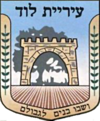
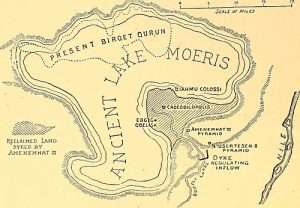 The ancient Egyptians expressed the same principle within the form and meaning of the word 'hieroglyph.' As does the author of 'The Meditations on the Tarot' within the word 'Arcana.' Especially the use of two of his most favourite ones: 'Horizontal / vertical' - both of which he uses constantly throughout. All explained within. Use the search box ['find tool'] to obtain that 'general' overview. The difference between the three books being an example of two authors being aware of this subject. The other not. Yet all possess an ample selection of those common keys...and therefore their possible interpretation to the subject as a whole.
The ancient Egyptians expressed the same principle within the form and meaning of the word 'hieroglyph.' As does the author of 'The Meditations on the Tarot' within the word 'Arcana.' Especially the use of two of his most favourite ones: 'Horizontal / vertical' - both of which he uses constantly throughout. All explained within. Use the search box ['find tool'] to obtain that 'general' overview. The difference between the three books being an example of two authors being aware of this subject. The other not. Yet all possess an ample selection of those common keys...and therefore their possible interpretation to the subject as a whole.
'Dear Liza' by Sydney Banks.
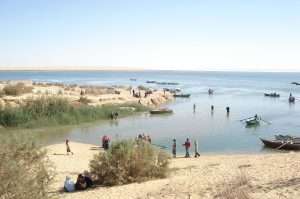
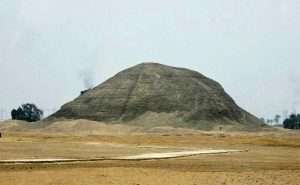
'Wattle and daub'?
"When is an idol an icon? When is a icon an idol? The icon is transparent as a representation of the spiritual reality it depicts; an idol replaces and obscures that reality - something understood by the Jewish religious vision which so rigorously condemned 'idolatry.' But the difference between icon and idol is purely subjective. All is idolatry that takes the outer form to be itself an object of veneration. But again , the most tawdry of idols of holy pictures can become transparent vehicles for spiritual meaning when they reflect and transmit a living 'vision.'............."The West, which has its own idolatries, has lost, under the influence of the materialism of recent centuries, access to that inner order of which idols may be icons, and in whose absence the most beautiful icons are but idols." [Page 30,31 'Alexandria' vol one, by D. Fideler].
"Is there danger of forgetting the one Neter in the many?"
'On Having No Head: Zen and the Rediscovery of the Obvious' / D. E. Harding.
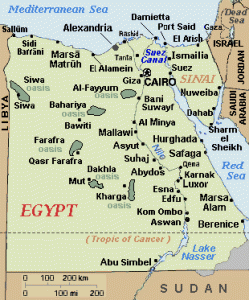 'That is the chief danger, but men need images. Lacking them they invent idols. Better then to found {'foundation'?} the images on realities that lead the true seeker to the source." ['Her-Bak'].
'That is the chief danger, but men need images. Lacking them they invent idols. Better then to found {'foundation'?} the images on realities that lead the true seeker to the source." ['Her-Bak'].
A practical example: ''I dont like the word adulation.'' {'Finding Jack Charlton' / BBC 2}.
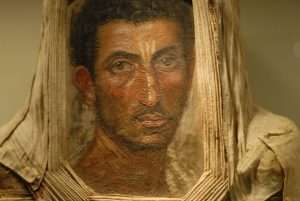
Face to face? With what?
"...For all concepts and abstract ideas can become icons or ''sacred images'' when one considers them not as the end, but rather as the beginning -of the way- of knowledge of spiritual reality. In the domain of the intellectual life, hypotheses do not play the role of idols, but rather that of sacred images. Because no one accepts a hypothesis as absolute truth, just as no one worships a sacred image as absolute reality. Yet hypotheses are fruitful in that they lead us to the truth, in guiding us to it within the totality of our experience - just as icons or sacred images are also fruitful in leading us to experience the spiritual reality that they represent. An icon is the beginning to the way to spiritual reality; it does not replace it - as in idolatry - but gives an impulse and direction towards it. Similarly, a concept or abstract idea does not replace spiritual reality, but rather gives an impulse and direction towards it." [Quote from 'Letter 8' from the book by Tomberg].
Put all the above together to define the following: "You must know that in examining the Law and the books of the prophets, you will not find the expressions ''burning anger,'' ''provocation,'' or ''jealousy'' applied to god except in reference to idolatry and that none but the idolater called ''enemy'' ''adversary'' or ''hater of the Lord.'' [Chapter 36 'Guide for the Perplexed'].
''I am a jealous God..."
Think about it in relation to that ''bit''. Purpose of. Benefit of. As a means...?
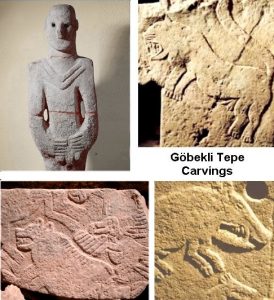
Keys?
 Another publication, of the same ilk..."Speaking of the keys to the Zoodiacal mysteries as being almost 'lost' to the world, it was remarked in "Isis Unveiled" ten years ago that...'The said 'key' must be turned seven times before the whole system is divulged. We will give it but one turn, and thereby allow the profane one glimpse into the mystery. Happy he, who understands the whole. The same be said of the whole Esoteric system. One turn of the key, and no more was given in 'Isis'. Much more is explained in these volumes" ..........."the source of all the religions and philosophies of the world that were 'lost' to men, is at last found". Heard that one before? ....[introduction....to the book 'The Secret Doctrine' by M. Blavatsky].
Another publication, of the same ilk..."Speaking of the keys to the Zoodiacal mysteries as being almost 'lost' to the world, it was remarked in "Isis Unveiled" ten years ago that...'The said 'key' must be turned seven times before the whole system is divulged. We will give it but one turn, and thereby allow the profane one glimpse into the mystery. Happy he, who understands the whole. The same be said of the whole Esoteric system. One turn of the key, and no more was given in 'Isis'. Much more is explained in these volumes" ..........."the source of all the religions and philosophies of the world that were 'lost' to men, is at last found". Heard that one before? ....[introduction....to the book 'The Secret Doctrine' by M. Blavatsky].
Lots of 'keys', but you have to find them through a quagmire of 'facts'. You do however begin to 'see' those keys from the Buddhist, Hindu perspective.
From a different perspective: ''I am the human being. I am the Past, the Present, and the Future. Every mortal should lift my veil.'' {Page 64 'Ancient Myths: And the New Isis Mystery' / R. Steiner].
''Seven must 'die' before the 'treasure' is found''. Quote at the beginning of each episode of the 'Oak Island' program. [History channel]. ''Seven'' in relation to the above; ''die'' in relation to death/rebirth symbolism. Once understood - that which was 'lost' is now found, i.e.,''treasure''. Enlarged throughout. Try ''seven'' i.e.,''seven beings'' etc.
"Its not just a search for treasure - its a search for meaning. And nothing engages people like the search for meaning." In answer to the question by R. Laginna: ''What gets people into this mystery." ['Curse of Oak Island' / History channel. Dec./2016].
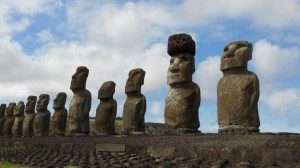
Most looking INWARD other than 'seven' that look OUTWARD. Question. Inner = spirit = volcanic rock. Outer = soul = Obsidian 'glass'? Both quarried on opposites sides of the island. Opposite ends of the same pole. A meeting {resurrection?} of the two required - before the journey can continue REPRESENTED with fresh water as in a river, stream or spring {as found on the same island}. Enlarged elsewhere. {'Blowing up History: Easter Island'}.
Side note:''I have indicated on various occasions the role of this inner law in the case of persons who are really representative in the historic evolution of humanity. I have pointed out - how remarkable it is that Raphael always makes an important painting after a definite number of years. That Goethe's poetic powers always flare up in seven year periods - whereas between these times there is always a dying back {'retrograde'?}....One should not forget that Napoleon had seven years in which to grow familiar with what he later looked on as his task; for twice seven years the tumult lasted that he carried through Europe, and then, he was granted seven more years after his fall. Four times seven years was the career of this man....And note that Schlegel did not look on Napoleon exactly as an impulse of blessing for European humanity.'' [Page 100 'Ancient Myths: And the New Isis Mystery' / R. Steiner].
''Seven must die before the treasure is found.'' {'Curse of Oak Island'}.
Coincidence or a meaningful one?
Henry the 8th ?
Continued: "................we are very likely to discover new meaning in the old forms through the process of turning religion inside out. 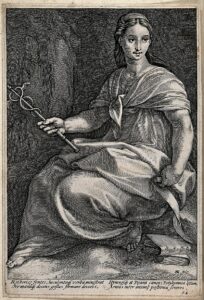 Only when we have discovered for ourselves these regions will we be able to read and use the old maps, to make use of the vast cultural heritage of all religious traditions, the spiritual knowledge embodied in the teachings, literature, and the symbolic forms of all traditions and all ages. When we find the root within our selves, these will reveal to us their meanings."............."Once we have the key we will find those meanings and images and traces everywhere." [Page 31,32 'Alexandria'. Mentioned above].
Only when we have discovered for ourselves these regions will we be able to read and use the old maps, to make use of the vast cultural heritage of all religious traditions, the spiritual knowledge embodied in the teachings, literature, and the symbolic forms of all traditions and all ages. When we find the root within our selves, these will reveal to us their meanings."............."Once we have the key we will find those meanings and images and traces everywhere." [Page 31,32 'Alexandria'. Mentioned above].
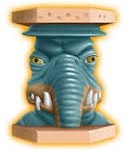 Gnosticism. Especially ’The Gnostic Gospels’ and ’Beyond Belief:The Secret Gospel of Thomas’. Both by E. Pagels...and the parables in the new testament and the North American ‘Trickster’ character [ explained elsewhere ] another form....with the same intention, [key]. As are most of the Sufi texts, i.e., ’’The Mathnawi’. By Rumi. And especially that most enematic of all sufi texts...’The Elephant in the Dark’. Why is that development important? It helps; implied by the same authors; with ones own personal journey from A to C.
Gnosticism. Especially ’The Gnostic Gospels’ and ’Beyond Belief:The Secret Gospel of Thomas’. Both by E. Pagels...and the parables in the new testament and the North American ‘Trickster’ character [ explained elsewhere ] another form....with the same intention, [key]. As are most of the Sufi texts, i.e., ’’The Mathnawi’. By Rumi. And especially that most enematic of all sufi texts...’The Elephant in the Dark’. Why is that development important? It helps; implied by the same authors; with ones own personal journey from A to C.
"I will open my mouth in parables, i will utter what has been hidden, since the foundation of the world." [Matthew 13.35].
"Thus doth God; by parables; show forth truth and vanity." [Quran 13:17]..."And we put forth many parables in your behalf."[Quran 14:45]. Both translations from Abdullah Yusuf Ali.
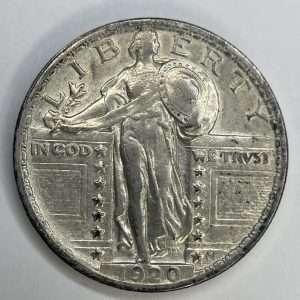
"The Standing Liberty quarter is a 25-cent coin that was struck by the United States Mint from 1916 to 1930. It succeeded the Barber quarter, which had been minted since 1892. Featuring the goddess of Liberty on one side and an eagle in flight on the other." 'T' shape?
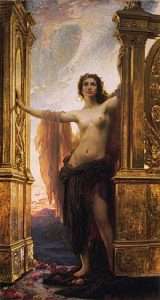
Goddess of Dawn. Gateway to the light.
2...This world and ’That’ world, they imply co-exist. [ Physical world together with the other ‘world/domain’. Commonly known as the ’afterlife’.] This reader prefers the word ‘Domain/s’. Its a neutral word. It helps with the objective clause. Try it.
The Egyptians symbolised it with upper and lower Egypt.[‘Mirror’ image of north/south. Symbolic only. Not exact. ] With their headgear-The Pschent or ‘double’ crown; as the symbolism for the co-exisitance. [ Two halves coming together. ] Or the single uraeus. Biblical equivalent..."The light of the body is the eye: if therefore thine eye be single, thy whole body shall be filled with light", [Matthew 6:22].
Egyptian equivalent..."Thus the Eye evokes the means of the perception of light in all its forms, from the physical light of the sun and moon to the light of knowledge, and to the inner illumination of the awakened spirit. And the uraeus is the magnificent symbol of all the powers related to this triple conception." [Extract from the book by L. Lamy].
"Coils of Nature."
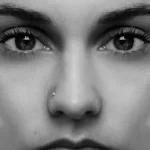
R.I.P.
"In the Pagan Mysteries, beginners were known as 'mystae', meaning 'those with eyes closed', and enlightened initiates were known as 'epopteia' meaning, 'those who can see'." [From the book by T. Freke and P. Gandy].
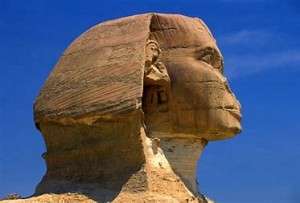 Exercise: "Why do you ask questions about husks, about words, when you have so many living questions in your mind? Your task now is to consider the profile, and determine what connection this bears to love. Consider, for example, why the Egyptians would paint the eyes in frontal appearance, even when they showed the face in profile. Why? Consider also the uraeus snake, which reveals its pent up energies of striking only when viewed from the side. There is a profound mystery here. Think upon these things. The true man is seen from many places, and none is ever the same. Why is this so? ...Meanwhile remember, that the profile will speak more easily about the past than will the face turned towards you." ['The Zelator'].
Exercise: "Why do you ask questions about husks, about words, when you have so many living questions in your mind? Your task now is to consider the profile, and determine what connection this bears to love. Consider, for example, why the Egyptians would paint the eyes in frontal appearance, even when they showed the face in profile. Why? Consider also the uraeus snake, which reveals its pent up energies of striking only when viewed from the side. There is a profound mystery here. Think upon these things. The true man is seen from many places, and none is ever the same. Why is this so? ...Meanwhile remember, that the profile will speak more easily about the past than will the face turned towards you." ['The Zelator'].
Therefore ''face'' = Present or future?
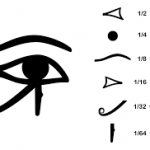
'Sixtyfour' aspects?
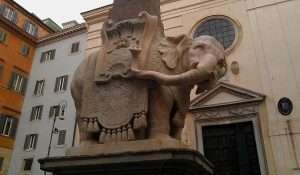
Elephant in the Dark: 'Prince' link?
A working example: ''Melusina, the deceptive Shakti, must return to the watery realm if the work is to reach its goal. She would no longer 'dance' before the adept with alluring gestures, but must become what she was from the beginning; a part of his wholeness {i.e., ''extracting everything meaningful and valuable as in a process of distillation''}. As such she must be ''conceived in the mind''. This leads to a union of unconscious and conscious that was always present UNconsciously but was always denied by the ONE-Sidedness of the conscious attitude. From this union rises the wholeness which the introspective philosophy of all times and climes has characterised with an inexhaustible variety of symbols, names, and concepts.'' [Page 180/1 'Alchemical Studies'].
Faiyum to enlarge.
''In the Christian tradition it is the twentyfifth of March that is the date that Mary was told she would give birth to Jesus.''
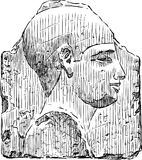
What does east/west represent. Solstice or Equinox? 'Smith/Jones'?
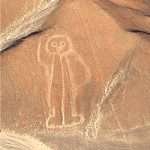
What's in the bag?
And/or: "Why his profile? we wondered again...as we began to search through Woodroffe book for our half-remembered references to the anahata chakra, or the flaming flower which burned at the region of the heart {'Bosom'?}..."The profile'' he began. The word echoed through our soul, for this had been the true question we had carried in our heart when we contemplated the picture of Sir John Woodroffe. Why, we had asked ourselves, had he elected to be photographed in profile? ''....the profile of a human being is a special thing for those with eyes to see..." ['The Zelator'. Emphasis, this readers].
............
And/or: "Students who reject any relationship between Fourth Way teachings and spiritual wisdom are generally focused on personal power and elitism. That is a dead end as is clearer demonstrated by the state of being of many such persons...
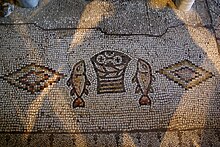
"I am gods wheat, and i am to be ground by the teeth of wild beasts so i may become the pure bread of Christ. {Ignatius of Antioch}.
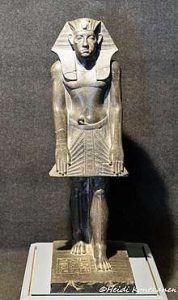 It must be said that Gurdjieff was a man of many sides and certainly did not fit into anyone's image of a "holy man". Bennet observed that, at the very end of his life, Gurdjieff's face carried the saddest look he had ever seen. Nevertheless, his contribution is extraordinary and has impacted many lives." {'The Wisdom of the Fourth Way' / T. Nottingham}.
It must be said that Gurdjieff was a man of many sides and certainly did not fit into anyone's image of a "holy man". Bennet observed that, at the very end of his life, Gurdjieff's face carried the saddest look he had ever seen. Nevertheless, his contribution is extraordinary and has impacted many lives." {'The Wisdom of the Fourth Way' / T. Nottingham}.
And/or: —To-night we will speak again about Knowledge and Being. Can you remember anything that was said before about Knowledge and Being? Let me remind you that this teaching that we are studying says that there are two sides in a man that must develop in the gradual course of his transformation: the side of his Knowledge and the side of his Being. {'Psychological Commentaries on Gurdjieff and Ouspensky' / M. Nicoll}.
Gilly {flower?}. Game of Thrones.
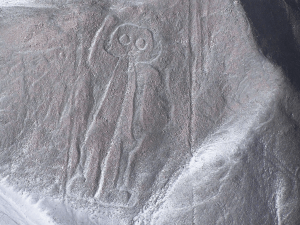
''Very tall''? Waving?
As seen from a different perspective{?}: "The constellation is 28 degrees in length - one of the most extended in the heavens - stretching from the upraised hand of Cassiopeia nearly to the Pleiades, and well justifying the epithet ''very tall'', applied to it by Aratos. 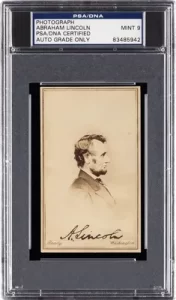 It offers a field of special interest to possessors of small telescopes, while even an opera glass reveals much that is worthy of observation. Argelander and Heis give a list of 81 and 136 {'217'?} naked eye stars respectively. The former has suggested that within its boundaries may lie the possible center point of the universe, which Madler located in the Pleiades - all probably unwarranted conclusions {hint. hint?}. The stars that figure on the constellations right side, form a slight curve {'arc'?} open towards the N/E - that has been called the Segment of Perseus." [Page 331 'Star Names and Their Meaning'].
It offers a field of special interest to possessors of small telescopes, while even an opera glass reveals much that is worthy of observation. Argelander and Heis give a list of 81 and 136 {'217'?} naked eye stars respectively. The former has suggested that within its boundaries may lie the possible center point of the universe, which Madler located in the Pleiades - all probably unwarranted conclusions {hint. hint?}. The stars that figure on the constellations right side, form a slight curve {'arc'?} open towards the N/E - that has been called the Segment of Perseus." [Page 331 'Star Names and Their Meaning'].
Question. Is Mr Allen aware of subject material?
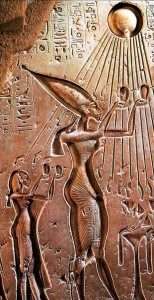
''Narrow'' link? Left-right or right-left? ''Joined at the hip''?
Side note: ''The tall figure is Akhenaten, known for his long skinny neck, skinny hands, a high waist, wide thighs and skinny legs. There is a statue of him in the Cairo Museum. He was 14.5 feet tall {'28'/'29' link? therefore moon/west link}. When i stood next to it, my head came up to the widest part of his hips {'naval'?}. The usual Egyptian explanation is that he had a disease and was deformed - of course, so was Nefertiti and all their daughters. {Evidently they had the same disease}. I believe something very different.'' [Page 137 'The Ancient Secret of the Flower of Life'].

'Spirit' or 'Soul'? Male or female feet.
Something extra {i.e., from a different perspective}: ''The longing in my heart which had seemed so much the yearning for a missing part of myself, that had lured and enticed me like the piping of Pan, had brought me to a 'sacred grove' {above or below the horizon?}. I longed for that lost half, but until i had taken form, i would have no 'partner'. Here, in the sacred grove where apple trees grow in fertile abundance {'Venus'?}, i was finding the missing part of myself, the part of me that could open myself to the divine mystery....feminine in its energy....The placental boundary between inner and outer.'' [Page 199 'The Book of Shadows'].
''Drawing Down the Moon''?
An aulos (plural auloi;[1] Ancient Greek: αὐλός, plural αὐλοί[2]) or tibia (Latin) was a wind instrument in ancient Greece, often depicted in art and also attested by archaeology.
Though the word aulos is often translated as "flute" or as "double flute", the instrument was usually double-reeded, and its sound—described as "penetrating, insisting and exciting"—was more akin to that of modern woodwind instruments such as oboes or bagpipes with a chanter and (modulated) drone.[3][4]
There were several kinds of aulos, single or double. The most common variety was a reed instrument.[6]
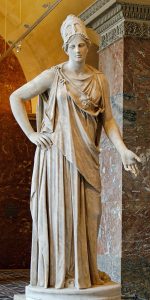
Mask?
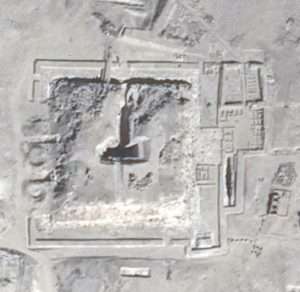
Upside down?
An aulete (αὐλητής, aulētēs) was the musician who performed on an aulos. The ancient Roman equivalent was the tibicen (plural tibicines), from the Latin tibia, "pipe, aulos." The neologism aulode is sometimes used by analogy with rhapsode and citharode (citharede) to refer to an aulos-player, who may also be called an aulist; however, aulode more commonly refers to a singer who sang the accompaniment to a piece played on the aulos.
In myth, Marsyas the satyr was supposed to have invented the aulos, or else picked it up after Athena had thrown it away because it caused her cheeks to puff out and ruined her beauty {hubris?}. In any case, he challenged Apollo to a musical contest, where the winner would be able to "do whatever he wanted" to the loser—Marsyas's expectation, typical of a satyr, was that this would be sexual in nature. But Apollo and his lyre beat Marsyas and his aulos. And since the pure lord of Delphi's mind worked in different ways from Marsyas's, he celebrated his victory by stringing his opponent up from a tree and flaying him alive.
'Hung' / 'Hang'?
Marsyas's blood and the tears of the Muses formed the river Marsyas in Asia Minor.[17]
This tale was a warning against committing the sin of "hubris", or overweening pride, in that Marsyas thought he might win against a god.
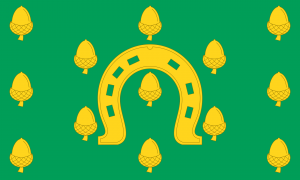
'Three and Four'? and/or '13'? "Offset" to enlarge.
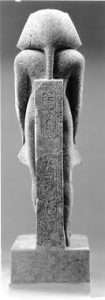
"Behind Will, stands desire."
Continued: Zahi Hawass goes looking for the tomb of Nefertiti along the WEST branch of the valley of the kings. Finds a village comprising at least 30 workmans huts. Royal burial predicted close by. Only to finally find a ''ritual pit'' with one or two 'tools' purposely left behind. The impression of the 'lower' half of a sarcophagus can be seen WITHIN what looks like a semi-circular piece of limestone in front of the 'feet'. The exact same 'form' as when Tutankhamun's tomb was found. Enlarged elsewhere. ['Valley of the Kings: Lost Tombs' / 2021].
Question. In what position is the body {''crown''} normally carried into a 'tomb'. Head or feet FIRST?
Where would its 'higher' half be found?
Question. As an imagery exercise - if the sarcophagus was stood up - what would best describe its 'position' within that ''semi-circle''?
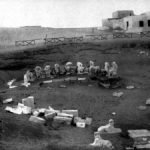 A side step:{and/or refresher}: "What is remarkable about all this is the way that the 'mill' {which continues to serve as an allegory for cosmic processes} stubbornly keeps on resurfacing, all over the world, even where the context has been jumbled or lost....Among the Cherokees, whose name for the Milky Way {our own galaxy} is 'Where the Dog Ran'. In ancient times, according to Cherokee tradition, 'the people in the South had a corn mill', from which meal was stolen {trickster type} again and again. In due course the owners discovered the thief, a dog, who 'ran off howling to his home in the North' with the meal dropping from his mouth as he ran, and leaving behind a white trail where now we see the Milky Way, which the Cherokee call to this day - ''Where the Dog Ran''...." [Page 253 'Fingerprints of the Gods' / G. Hancock].
A side step:{and/or refresher}: "What is remarkable about all this is the way that the 'mill' {which continues to serve as an allegory for cosmic processes} stubbornly keeps on resurfacing, all over the world, even where the context has been jumbled or lost....Among the Cherokees, whose name for the Milky Way {our own galaxy} is 'Where the Dog Ran'. In ancient times, according to Cherokee tradition, 'the people in the South had a corn mill', from which meal was stolen {trickster type} again and again. In due course the owners discovered the thief, a dog, who 'ran off howling to his home in the North' with the meal dropping from his mouth as he ran, and leaving behind a white trail where now we see the Milky Way, which the Cherokee call to this day - ''Where the Dog Ran''...." [Page 253 'Fingerprints of the Gods' / G. Hancock].

Any animal following?
A {working?} example: "It has been asserted that Ovid and Vergil referred to Sirius...as representing a Jackal or dog headed Egyptian divinity - guardian of the visible horizon {'line of sight'?} and of the solstices...Ideler thought, Sirius may have had a common origin from some ancient source: possibly the Sanskrit Surya, the Shining One - the Sun...In the myth of Canopus flight to the South represented with Yemen and the Greater Dog - as opposed to the Lesser Dog and Syria in the North...these geographical names originated the Arabic adjectives Yamaniyyah and Shamaliyyah - Southern and Northern - although the former literally signifies On the Right-Hand Side, i.e.,to an observer facing eastward towards Mecca." [Page 121 'Star Names and Their Meaning']. In profile? and/or ''the shining one'' in relation to ''he who illumines''. An aspect of {anima?}. Top/down/bottom/up?
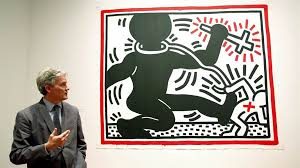 Something extra: "The education of the philosopher may be illustrated by the story of Athena and the 'ship' Argo....Athena, patroness of philosophy and the practical arts, gave just measures for building Jason's ship and the sacred beam for its keel....made of wood from the Oak of Dodona, the most ancient oracle site in Greece that allowed it to 'speak' {Gnosis?}….Eventually placed in the sky....became the enormous south circumpolar constellation of Argo Navis, now divided into four: the Keel, the Sail, the Stern, and the Compass. In the first of these is Canopus, the second brightest star in the sky....This same star guided the pilgrims of the Middle Ages from Jerusalem to the monastery of Mount Sinai, for it indicated the south. They knew it as the star of Saint Catherine...." [Page 237/8 'Alexandria' Vol 3. / D. fideler].
Something extra: "The education of the philosopher may be illustrated by the story of Athena and the 'ship' Argo....Athena, patroness of philosophy and the practical arts, gave just measures for building Jason's ship and the sacred beam for its keel....made of wood from the Oak of Dodona, the most ancient oracle site in Greece that allowed it to 'speak' {Gnosis?}….Eventually placed in the sky....became the enormous south circumpolar constellation of Argo Navis, now divided into four: the Keel, the Sail, the Stern, and the Compass. In the first of these is Canopus, the second brightest star in the sky....This same star guided the pilgrims of the Middle Ages from Jerusalem to the monastery of Mount Sinai, for it indicated the south. They knew it as the star of Saint Catherine...." [Page 237/8 'Alexandria' Vol 3. / D. fideler].
Question. Solstices in relation to E/W . Equinoxes = N/S?
Question 2. Who gave ''good measures'' for the building of the Temple?
''King Solomon's temple was the first temple built by the Israelites to honor their god, the Bible tells us. It's also where the Jewish people are said to have kept the mythical Ark of the Covenant holding the 10 Commandments.''
Westward leading still proceeding guide us to.....?
S/W in relation to S/E?
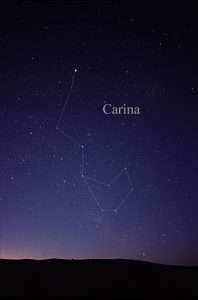
Can be seen with the naked eye. 'Line of sight'
''Carina (/kəˈraɪnə, kəˈriːnə/ kə-RY-nə, -REE-) is a constellation in the southern sky. Its name is Latin for the keel of a ship, and it was the southern foundation of the larger constellation of Argo Navis (the ship Argo) until it was divided into three pieces, the other two being Puppis (the poop deck), and Vela (the sails of the ship).''[Wiki].
'Dung gate'?
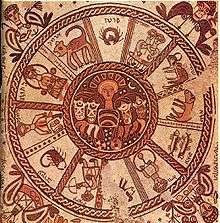 And/or: "The sage intervenes and gives him the choice of two paths: the training for a career as an active leader in the government of the kingdom, or else the acquisition of the mastery which will lead him toward sacred knowledge...Chickpea chooses the path of wisdom and surrenders to the guidance of the Master who gives him the name of Her - Bak {Horus-face}, and conducts him toward the temple...He learns, among others, how to study the human being and on the night of his final testing - the revelation of his ''own Neter'' - at long last opens the door to the inner temple." ['Her-Bak: Egyptian Initiate' / Isha Schwaller De Lubicz].
And/or: "The sage intervenes and gives him the choice of two paths: the training for a career as an active leader in the government of the kingdom, or else the acquisition of the mastery which will lead him toward sacred knowledge...Chickpea chooses the path of wisdom and surrenders to the guidance of the Master who gives him the name of Her - Bak {Horus-face}, and conducts him toward the temple...He learns, among others, how to study the human being and on the night of his final testing - the revelation of his ''own Neter'' - at long last opens the door to the inner temple." ['Her-Bak: Egyptian Initiate' / Isha Schwaller De Lubicz].
New Name?
 Side note: "Cygnus lies between Draco and Pegasus...Mainly intended to be a Bird of some kind - more particularly a Hen; although Aratos indicated that he had in view the ''quickly flying Swan''; but this Greek adjective also signifies ''varied''....When the Romans adopted the title that we now have, our constellation became the mythical swan, identified with the son of Mars...it was known for its ''hostility'' to others birds and beasts...In Arabia it was known as the Eagle, or Bird, but it was usually the Hen, and appears as such even with the Egyptian priest Manetho, about 300 BC. ..Cygnus is usually shown in full flight down the Milky Way - the 'Streams of Heaven' - but old drawings have it springing from the ground..." ['Star Names and Their Meaning' under Cygnus].
Side note: "Cygnus lies between Draco and Pegasus...Mainly intended to be a Bird of some kind - more particularly a Hen; although Aratos indicated that he had in view the ''quickly flying Swan''; but this Greek adjective also signifies ''varied''....When the Romans adopted the title that we now have, our constellation became the mythical swan, identified with the son of Mars...it was known for its ''hostility'' to others birds and beasts...In Arabia it was known as the Eagle, or Bird, but it was usually the Hen, and appears as such even with the Egyptian priest Manetho, about 300 BC. ..Cygnus is usually shown in full flight down the Milky Way - the 'Streams of Heaven' - but old drawings have it springing from the ground..." ['Star Names and Their Meaning' under Cygnus].
Hen / Rooster / chick / EGG. All as a means....?
Side note: On Easter Island ''the eating of a white chicken 'feeds' the gods." {Polynesian belief?}.
And/or: "If it is asked why the gods needed food if they were immortal, the reply is that they were not believed to be immortal unless they feasted on heavenly fare - the nectar and ambrosia of the Greeks, the mead of Teutonic mythology, the soma of India etc etc." ['The Sacred Bee' / H. Ransome].
So the question is: Why should a 'white' chicken 'be food' for the gods?
Try ''Easter Island'' to connect it all.
Side note: ''Hen is the name given to a female octopus.'' ['The Chase' ].
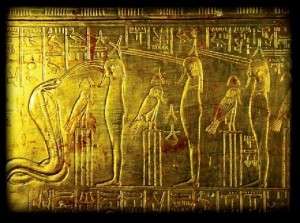
A portion of the golden shrine. Question. Middle of the forehead - minds eye? As a representation of something. Understand ''snake poison'' {enlarged elsewhere} before those first impressions '' lift one off '' into the cosmos. Then try ''antidote'' by way of a ''gathering'' of something.
The 'king' Cobra [uraeus] identified as the 'eye' of Ra, and therefore by the same implication with the 'eye' of Horus,[ green, one of its main colours]. That same 'uraeus' described as 'the great enchantress' ['The British Museum Dictionary of Ancient Egypt'], that through an 'understanding' becomes represented with a 'human head',[explained within]... "as seen on the golden shrine of Tutankhamun". [The 'golden child'].
Compare to 'its' opposite, its 'start' point, [i.e., unconscious / 'shadow' aspect of]..."the cleansing was said to be carried out by a goddess of whom we know little, Kebehut, who is specifically described as being the daughter of Anubis, and who was a "celestial serpent" with the face of a jackal." [Chapter six. 'The Sphinx mystery'].
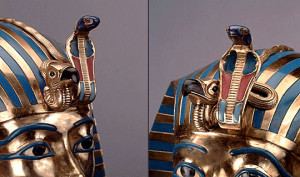
"The type of snake that served as the sacred image of Wadjyt, 'patron' deity of the town of Buto",['Pharaohs mound'] in the Nile Delta. Close to Sais. West in relation to East. The 'eye' in relation to the 'ear'. Horus in relation to Apollo. Think about it, in relation to a further 'development' by way of an understanding.
Side note: ''The nose is more relevant at night-time when the eyes can't see.''
![Picture…King Tut’s wet nurse Maia, whose title was, educator of the gods body [Wikipedia]. Analogy of same. Different time, different place…..I know nothing, and all preconceived opinions have been taken from me, which is the beginning of learning, i.e.,that one must first become a child, and then be wet nursed into knowledge, as is now taking place within me. [ Quote by Emanuel Swedenborg on an inner understanding. Chapter three, The Presence of Other Worlds].](https://esotericbasics.co.uk/wp-content/uploads/220px-Maia_and_tut1.gif)
'Transforming fingers'?
Picture...'King' Tut's wet nurse Maia, whose title was, ''educator of the 'gods' body'' [Wikipedia].
Analogy of same. Different time, different place....."I know nothing, and all preconceived opinions have been taken from me, which is the beginning of learning, i.e., that one must first become a child, and then be wet nursed into knowledge, as is now taking place within me." [ Quote by Emanuel Swedenborg on an ''inner'' understanding. Chapter three, 'The Presence of Other Worlds'].
"Truly, i say to you, whoever does not receive the kingdom of god like a child shall not enter it." [Mark X:15].
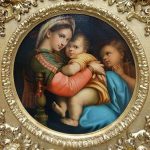 Side note: "You have three guesses: why does the proverb say ''Good things come in threes'', and why does the psychologist think that 3 restores the damaged 2 has caused by dividing? The reason , as Ludwig Paneth has stated, is that the triad leads to a new integration, one that does not negate the duality preceding it but rather, overcomes it, just as the child is a binding element that unites the male and female partner." [from the chapter: The Embracing Synthesis {3} / 'Mystery of Numbers' / Annemarie Schimmel].
Side note: "You have three guesses: why does the proverb say ''Good things come in threes'', and why does the psychologist think that 3 restores the damaged 2 has caused by dividing? The reason , as Ludwig Paneth has stated, is that the triad leads to a new integration, one that does not negate the duality preceding it but rather, overcomes it, just as the child is a binding element that unites the male and female partner." [from the chapter: The Embracing Synthesis {3} / 'Mystery of Numbers' / Annemarie Schimmel].
The 'nurse' of Bran Stark? {Game of Thrones}. She can tell a 'bloody' good story can't she? [Series 1. Episode 3].
''...….spiders as big as hounds..." [Same].
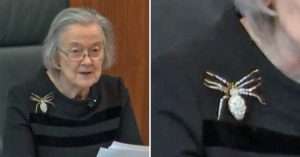
Arachne {Ariadne?} rising?
Analogy of same; i.e., with same intent; but from a different angle [key] or perspective..."So given to Chokmah we find given the title of the Father, and to Binah the Mother. All the Sephiroth, as these emanations are called, below that named the Crown are given masculine and feminine attributions, and the activity between male and female Sephiroth in reconciliations is a ''child,'' so to speak; a neutral Sephirah acting in equilibrium." [Chapter 3, 'The Tree of Life' by I. Regardie]. Link to the ''middle way.'' Representational of; in relation to the benefit of.
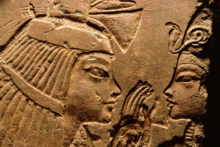
Tut's nurse.
A {working} example: "...The Sun is its father the moon its mother, the wind hath carried it in its belly, the earth is its nurse..." Continued elsewhere. ['Emerald Tablet'].
Follow the title of the book.
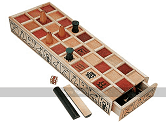
The 'middle' way.
"The force of conviction and inner certainty of 'metaphysical' knowledge lies in the fact that something already known, but fallen into 'forgetfulness', is 'remembered' again. And all arguments, drawing of comparisons, logical consequences, and other methods of cognition that are made use of in the here and now, are only ways and means of calling back memories out of the depths of the human soul - spiritual being, into earthly day consciousness. Altogether they represent, as it were, the ''work of a midwife'' at the birth of 'memory'. Knowledge is not made, it comes to 'birth'. '' [Chapter two, 'Lazarus Come Forth' by V. Tomberg]. Remember - as a representation of something.
Try ''memory'' and/or ''child'' in the usual box for a further head scratch. Then try ''metaphysics''. Understand what it eventually became known as- and its relevance in understanding anything. Before those first impressions dictate something else.
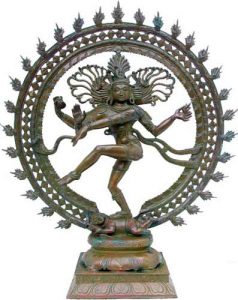
Remembrance? S/W?
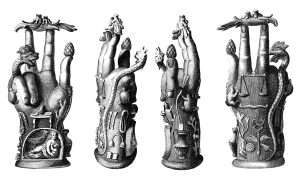
The hand of Sabazios. Thumb = pinecone?
From a different perspective: ''A very unusual statue of the god Shiva - {in the right hand} what looks like a 'bobbin' - between two fingers {on the back of his hand?}. In the left hand - two fingers {index and thumb} raised upwards. The middle arm {of four} - across the chest, from right to left {i.e., Hebrew writing pattern, ie., N/E -S/W}. Normally you see this god with his leg raised up, because when he raises up his leg he initiates the universe - but on this statue he has his foot down, down on what looks like a 'baby', with the face of a demon and the body of an infant - The Lord of Forgetfulness. It represents ones lower nature. Keeping them down with his foot. This is one of the earliest gods in the world at least 10,000 years old. ['Pawn Stars : Promissory Pawn' / Phineas Kastle].
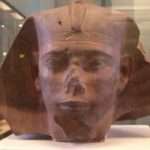 Analogy: "We now have just one choice; to face the long dark of Moria. Be on your guard. There are older and fouler things than Orcs in the deep places of the world....Its a four day journey to the other side, let us hope that our presence goes unnoticed. ...I have no memory of this place.....When in doubt always follow your nose....Let me risk a little more light. Behold the great realm and Dwarf city of Dwarrowdelf. That's an eye opener and no mistake {Sam}.....
Analogy: "We now have just one choice; to face the long dark of Moria. Be on your guard. There are older and fouler things than Orcs in the deep places of the world....Its a four day journey to the other side, let us hope that our presence goes unnoticed. ...I have no memory of this place.....When in doubt always follow your nose....Let me risk a little more light. Behold the great realm and Dwarf city of Dwarrowdelf. That's an eye opener and no mistake {Sam}.....
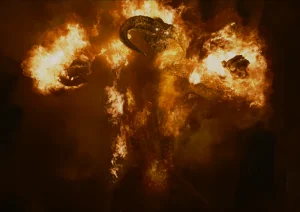
Fire and shadow. Light and soul {anima}. All aspects of Gandalf. A titan from the bowels of the earth. Recall Galadriel quote "I am stronger than the foundations of the earth." in relation to Frodo. Fold/UNfold. Hatshepsut to enlarge.
Further on: "What is this new devilry? Gandalf now remembering: "Its a Balrog, a demon of the ancient world. This foe is beyond any of you. Run! {across a stone bridge} swords are no use here. ....'You cannot pass! {face to face with the Balrog}. I am servant of the Secret Fire, wielder of the the flame of Amor. The dark fire will not avail you, Flame of Udun. Go back to the shadow! You shall not pass! Fly you fools." ['The Lord of the Rings: Fellowship'].
'Victory from the jaws of defeat'.
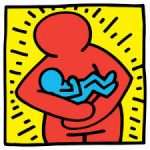 And/or: "Now, forgetting, sleep and death are opposed to remembering, wakefulness and birth in the earthly life of man. Forgetting, sleep and death are members of the same family. It is said that sleep is the younger brother of death....It is noteworthy that the account of Lazarus resurrection that we quoted above also brings the chain forgetting-sleep-death into consideration....There is therefore a continual 'coming' and 'going' between ordinary consciousness of the waking state and the domain of memory. Each 'going' corresponds to the action of falling asleep or dying. Each 'coming' corresponds to an awakening or resurrection...." [Page 560/1 'Meditation on the Tarot'].
And/or: "Now, forgetting, sleep and death are opposed to remembering, wakefulness and birth in the earthly life of man. Forgetting, sleep and death are members of the same family. It is said that sleep is the younger brother of death....It is noteworthy that the account of Lazarus resurrection that we quoted above also brings the chain forgetting-sleep-death into consideration....There is therefore a continual 'coming' and 'going' between ordinary consciousness of the waking state and the domain of memory. Each 'going' corresponds to the action of falling asleep or dying. Each 'coming' corresponds to an awakening or resurrection...." [Page 560/1 'Meditation on the Tarot'].
Incarnate/reincarnate? Try ''smith'' / ''jones''. All as a means...?
''The name Dormouse is thought to derive from the Fench word meaning 'to sleep'...'' ['Tipping Point'].
''Concerning the dormouse's name, etymonline says "long-tailed Old World rodent noted for its state of semi-hibernation in winter.''
'Guide for the Perplexed' / Moses Maimonides. [Chapter 31 'On the Study of Metaphysics'].
Synchronistic link? "Then came his advice: 'Remain childlike'. "Two words that meant so much. I'll never forget it." Quote by Dr. Chopra to the author of 'The Reconnection'. Enlarged elsewhere.
Landscape equivalent: "A rugged island, but a good nurse of young men..." In reference to the island of Ithica S/W Greece. The end AND beginning of Homers 'Odyssey'. Troy N/W {Turkey}. 'Father' {N/W} and 'son' {S/W} eventually coming together. Homer using Troy as 'top/down' and Ithica as 'bottom up' as a means {or method} to instruct {give insight?} on certain principles {keys} to define a 'journey'. That universal personal one. Link to ''bosom'' and therefore ''grace''. Homers equivalent. Try ''method''. Other examples elsewhere.
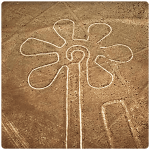 'Intelligence of the heart' ? Enlarged elsewhere.
'Intelligence of the heart' ? Enlarged elsewhere.
As is the same intention: "There are for instance, two centers of influence, the castle of Camelot and the castle of Carbonek, which are representative of the interests of the outer life and of the inner one - the former that of the Court of Arthur and the company of the Round Table, the 'flower' of chivalry - and the latter, the Grail Castle, where deep and holy mysteries are 'contained'." ['Experience of the Inner Worlds'. Emphasis, this readers].
Agree or disagree?
"Palace" to enlarge.
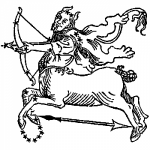
Always points to the heart of the Scorpion. A ''turning around'' from unredeemed to redeemed? As a means....?
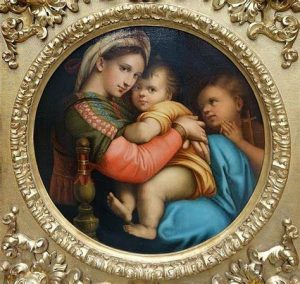 "...It is already obvious that metanoia ['repentance'] signifies a 'turning around': ''Except ye turn and become as little children" is the phrase used in Matthew 18:3. ...Literally, it means something definite - namely, a 'turning around' of the mind, a true mental transformation....A definite inner act is meant...as shown in the parable of the younger son who 'comes to himself' and returns to his 'father'. ...''For this thy brother was dead, and is alive again; and was lost and is found." It is clear that being dead and alive 'again' cannot have a physical meaning, but can only refer to the inner state of a man. That is, the state of a man in whom this one is lost represents a man in whom metanoia has not taken place and is therefore compared to death. It must be noticed that, when this 'change' has taken place the subject is referred to not only as being alive but alive again. Why again? And why is the younger son the subject of the parable? And why, as we have seen from a previous quotation, is it necessary for a man to become ''as a little child." And to what must something in a man turn round to - something that has got 'lost in him'; and what is it that gets lost...? There is something in us eternally 'young'...utterly different from this 'dark' world of sense and temporal logic into which 'it' passes and in which it becomes lost." [Extracts taken from part 3 of the book 'The Mark' by M. Nicoll]..... understanding those key words defines those questions. Those key words that have been used for countless generations. Regardless of culture.
"...It is already obvious that metanoia ['repentance'] signifies a 'turning around': ''Except ye turn and become as little children" is the phrase used in Matthew 18:3. ...Literally, it means something definite - namely, a 'turning around' of the mind, a true mental transformation....A definite inner act is meant...as shown in the parable of the younger son who 'comes to himself' and returns to his 'father'. ...''For this thy brother was dead, and is alive again; and was lost and is found." It is clear that being dead and alive 'again' cannot have a physical meaning, but can only refer to the inner state of a man. That is, the state of a man in whom this one is lost represents a man in whom metanoia has not taken place and is therefore compared to death. It must be noticed that, when this 'change' has taken place the subject is referred to not only as being alive but alive again. Why again? And why is the younger son the subject of the parable? And why, as we have seen from a previous quotation, is it necessary for a man to become ''as a little child." And to what must something in a man turn round to - something that has got 'lost in him'; and what is it that gets lost...? There is something in us eternally 'young'...utterly different from this 'dark' world of sense and temporal logic into which 'it' passes and in which it becomes lost." [Extracts taken from part 3 of the book 'The Mark' by M. Nicoll]..... understanding those key words defines those questions. Those key words that have been used for countless generations. Regardless of culture.
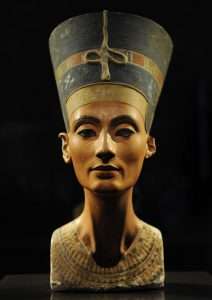
''Unconscious'' = shadow = 'Sunshade'?
'Virgin' in relation to child. A concept of something.
And/or... 'The Son is the consciousness of the Father.' The 'Father' is the Mystery...the dazzling darkness of UNconscious Consciousness." Quote by Clement of Alexandria. Enlarged elsewhere.
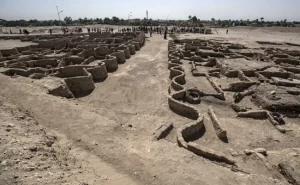
Found where the mortuary temple of Tutankhamun should have been. To be named the "Dazzling Aten."
Analogy: "The movement given to exploratory minds carried them at first towards the metaphysical. Scholastic theology alone occupied them for a long while and enveloped them as in a network of subtle distinctions. The first men who called themselves philosophers in these centuries, scarcely lightened by a faint dawn, exhausted the force of their genius in researches or in speculations as difficult as trifling; but, at last, some were found fortunate enough or bold enough to disentangle, in the obscurity of the labyrinth where they were engaged, the thread which could aid them to escape; they seized it, and encountered Aristotle; Aristotle conducted them to Plato.
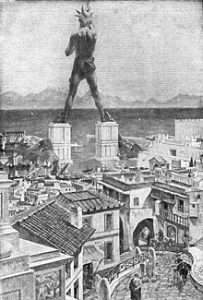
The Colossus of Rhodes: “To you, O Sun, the people of Doric Rhodes raise this bronze statue which reaches Olympus after calming the waves of war and crowning their city with the spoils of the enemy. Not only over the seas but also on land they light the sweet torch of freedom. “
Votive inscription on the Colossus.
Then a new light struck them. And when their dazzled eyes were sufficiently strengthened to gaze upon the torch which they held in their hands, they directed the light upon the objects which surrounded them; and they were greatly surprised to find them very different from what they had imagined them to be. Some, too eager to speak, were punished for their intemperate loquacity; others, having become wise by these examples, kept silent and awaited a more propitious time to express their opinions, or, indeed, retracted them after having uttered them." {Hermetic Interpretation of the Origins of the Social State of Man}.
Working example: ''The Aten was the disc of the sun and originally an aspect of Ra, the sun god in traditional ancient Egyptian religion. Akhenaten, however, made it the sole focus of official worship during his reign. In his poem "Great Hymn to the Aten", Akhenaten praises Aten as the creator, giver of life, and nurturing spirit of the world. Aten does not have a creation myth or family but is mentioned in the Book of the Dead.''

''When we do something different - we can feel like a child.''
As seen from a different perspective: Thus, many of the ancient texts are now more readily accessible. Their readership is increasing, because many, many readers obtain sudden insights from within their pages. But their message in full nobody in the West can read, for it is a message of repentance, metanoia, and it cannot be read in any depth and then ignored. So the gap in understanding still remains between Christian East and Christian West. All of this great effort has not yet revealed anything clearly, but it has definitely shown that there is something here to discover, although it is very difficult to discover it in full.
The idea of metanoia, of the possibility of such a change, as far as I know was first reintroduced to the West in the 1930s by Maurice Nicoll.° The meaning and specific methods were described in a fragmentary way,’ in the Philokalia translations among other places,® but metanoia—repentance—is the essence. This one word is not understood until we realize that it distills the underlying principle, the practical objective, of a complete discipline, one that reaches its goal through a myriad of variations and alternative methods.

Angela Buxton was a tennis player, but some clubs considered her Jewish before anything else....Despite her talent, Buxton was never partnered with the other top British players all vying for the No 1 ranking. She said: “They were given each other and I was always the one left out in the cold.”.....
But there was another up-and-coming player left out in the cold with her: Althea Gibson, one of the first black tennis stars. In 1956, at the French Open, neither player had a doubles partner. Buxton sent her coach, Jones, to ask Gibson to play. The two formed an instant, powerful bond, and went on to win the French Open doubles. A few weeks later, they went to London and, with their doubles win, made history: the first British Jewish player and the first African-American player to ever win a title at Wimbledon. The headline? “Minorities win.” .....Buxton did not leave the sport altogether, becoming a tennis journalist and author of several books on coaching, as well as founding the Angela Buxton Tennis Centre – in Hampstead, no less. The bond between Gibson and Buxton would also endure for many decades to come, with Buxton providing support throughout the years of Gibson’s ill health and depression, raising funds to help pay for her medical bills.
Buxton applied to the All England Club, as one of Britain’s top players, but her application was denied – again and again, over the following 60 years. In 2019, she told The Times that it was “an unfortunate example of how the British really treat Jews in this country”. (The All England Club did have other Jewish players.)....In 1981, Buxton was inducted into the International Jewish Sports Hall of Fame, and in 2015, the Black Tennis Hall of Fame, in honour of her partnership and friendship with Althea Gibson.
Although today metanoia still forms the basis of the practical work of the monks of the Eastern Church, few even of the more important methods of approaching it are understood in the West, and the basic principles, in the form of a complete Christian worldview—based on faith, but not on blind belief—seem to have been almost entirely forgotten. {'A Different Christianity' / R. Amis}.
AND/OR: "Deep within our buried conscious is some awareness of what is right in the presence of 'god' and as part of our true destiny. We cannot do this extraordinary Work - which is the heart of all esoteric and spiritual teachings given to humanity - without a sense that there is something higher than oneself.
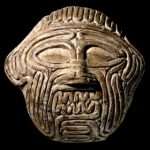
Labyrinth?
This is where our magnetic center {North?} the small ''child'' {''youngest'' / ''pure'' link?} of us that has led us on some kind of spiritual search for meaning and purpose, is especially valuable. There are 'I's within us that know there is more to life than self gratification, self love, self interest. These 'I's yearn for a mysterious inner liberation where a new quality of consciousness and of daily living can take place. This is no fantasy. It is the very reason why we were created as self evolving beings. We have a job to do and it is called ''metanoia'' or transformation of mind." ['Wisdom of the 4th Way'].
Book of Job?
''Yearning''?
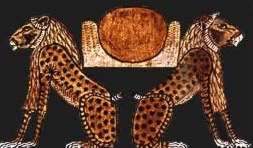
''Before and behind'' ?
"The perception of truth rests in the equilibrium of the intellect and emotions [thought, emotion, will link]. As long as the mind has not awakened to a state of spiritual consciousness and direct recognition of the truth, it will only see the shadow [lower link] of its presence and hear the indistinct whispering voice. The sound of that voice [higher link] may be drowned in the turmoil of the intellectual workshop, its light ['lamp' link] may be obscured by the storms of the emotions. To understand that 'voice' and to behold that 'light' heart and head should act harmoniously together {Libra?}. To perceive the truth, purity of heart and strength of mind should go hand in hand {'Bull/lion' or both?} and it is therefore taught that men must become like children before they can enter the sphere of truth..." [Extract take from the book by F. Hartman]. All a link to what all define in one way or another as the ''middle way''. Benefit of; if only in understanding a subject. But purpose of - when all is considered. That final link to the 'philosophers stone'...
Question. Nothing more than a fairy story. A convoluted one?

"Seemed a caring person....Would have liked to have met her." Annabel Croft {covered in bling} - at the U.S. Open 2025 - at a tribute to Althea Gibson. No mention of any other "minorities" and progress made. Double standards? Apologies?
REFRESHER: "He who aspires to be a sage and to know the Great Enigma of Nature must be the heir and despoiler of the Sphinx: his the human head, in order to posses speech; his the eagles wings, in order to scale the heights; his the bulls flanks, in order to furrow the depths; his the lions talons, to make a way on the right and the left, before and behind." [Quote taken from the chapter entitled 'The Candidate' from the book by E. Levi].
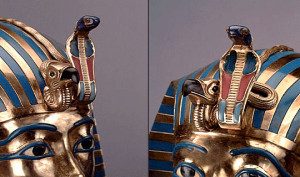 "You begin with a delightful feeling as of a child with a new toy; you get bored, and you attempt to smash it. But if you are a wise child, and you have had a scientific attitude towards it, you do not smash it. You pass through the stage of boredom, and arise from the inferno of torture towards the stage of resurrection, when the toy has become a god, declared to you its inmost secrets, and become a living part of your life. There are no longer these crude, savage reactions of pleasure and pain. The new knowledge is assimilated." [Fourth lecture out of Eight on Yoga by A. Crowley].
"You begin with a delightful feeling as of a child with a new toy; you get bored, and you attempt to smash it. But if you are a wise child, and you have had a scientific attitude towards it, you do not smash it. You pass through the stage of boredom, and arise from the inferno of torture towards the stage of resurrection, when the toy has become a god, declared to you its inmost secrets, and become a living part of your life. There are no longer these crude, savage reactions of pleasure and pain. The new knowledge is assimilated." [Fourth lecture out of Eight on Yoga by A. Crowley].
Apply the above to ''toy'' on something extra: "He who aspires to be a sage and to know the Great Enigma of Nature must be the heir and despoiler of the Sphinx: his the human head {Aries?} - in order to posses speech; his the eagles wings {Scorpio?} - in order to scale the heights; his the bulls flanks {Taurus?} - in order to furrow the depths; his the lions talons, to make a way on the right and the left, before and behind {Aker?}." [Quote taken from the chapter entitled 'The Candidate' from the book by E. Levi].
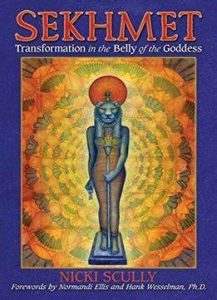
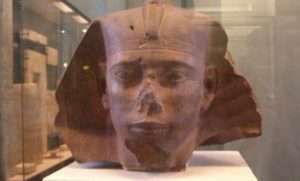
Why the nose?
And/or: "The greater vision of unity lies in the transformations of the goddess, the dancer at the 'heart of the rose' {'virgin' link?}. This is a mystery to be found also in the legends of the Holy Grail and the secret of the jewel in the head of the alchemical toad {or frog?}. That which fell from the crown of the fallen Son of the Morning. Reflect upon these deep things. And thus may the wisdom of the stars shine in your brow {'mantle'?}, the grail of love flow from your heart {'Bosom'?} the waters of life encompass your loins, and the stones of the Earth support your feet {Pisces?}. This is the image and function of redeemed humankind, the new Adam and new Eve, conjoined in the new heaven/earth, the new Avalon where the green 'apples' have turned to gold."
Air. fire, water and earth?
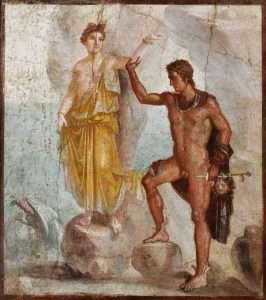
'Fallen' daughter?

Legends. R.I.P.
Question. What 'sign' represents the ''loins''?
Top down V Bottom up?
The main point being - working out sense - from those universal constants {mind set} gives the reader at the very least an understanding of what the Sphinx may represent to the whole. Enlarged throughout.
Try ''Sphinx''.
"The Eight are called the 'fathers and mothers of Re'., for the child that comes forth from this primordial lotus is Re, or Ra, the principle of light itself." [Extract from the book by L. Lamy].
Refresher: Zeus = ''to illuminate''.
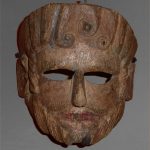 And/or {i.e.,as a working example}: "'Her', known in his latinized form of Horus, specifically signifies ''face''; Horus is the face, the sensory perceptible appearance of the invisible Ra. The 'appearance' of this face is a realization through the Oeuvre, the Work of cosmic genesis {i.e.,by the 'Word' and/or Logos link?}. Manifested/UNmanifested?
And/or {i.e.,as a working example}: "'Her', known in his latinized form of Horus, specifically signifies ''face''; Horus is the face, the sensory perceptible appearance of the invisible Ra. The 'appearance' of this face is a realization through the Oeuvre, the Work of cosmic genesis {i.e.,by the 'Word' and/or Logos link?}. Manifested/UNmanifested?
Try ''face on'' as opposed to ''in profile'' - As a means...?
'Silence is golden'. Anything?
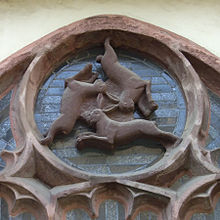 Analogy of same? "He who begets something which is alive must dive down into the primeval depths in which the forces of 'life' dwell. And when he rises to the surface, there is a gleam of madness in his eyes because in those depths death lives cheek by jowl with life." - "It is obvious that Otto was concerned not with a medical definition of what the Greeks called mania and he and Schelling called ''madness,'' but with a kind of visionary attempt to explain a state in which man's vital powers are enhanced to the utmost, in which consciousness and the unconscious merge as in a breakthrough." [From the book by C. Kerenyi]. Recall the Gilgamesh analogy in Part 1.
Analogy of same? "He who begets something which is alive must dive down into the primeval depths in which the forces of 'life' dwell. And when he rises to the surface, there is a gleam of madness in his eyes because in those depths death lives cheek by jowl with life." - "It is obvious that Otto was concerned not with a medical definition of what the Greeks called mania and he and Schelling called ''madness,'' but with a kind of visionary attempt to explain a state in which man's vital powers are enhanced to the utmost, in which consciousness and the unconscious merge as in a breakthrough." [From the book by C. Kerenyi]. Recall the Gilgamesh analogy in Part 1.
'Jaw' to enlarge.
Try ''eureka'' . Representation of {i.e.,but now in the 'spiritual' / subject sense of the 'Word'}.
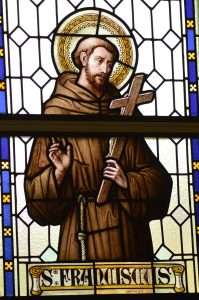
Cedar wood?
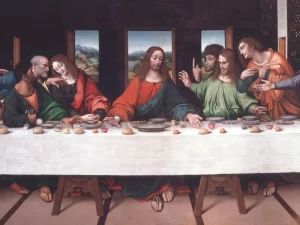
Whats the common factor besides the 'glass'?
Side note: ''The Egyptian word tjehenet - a general term for 'glass' and also for the shiny glass like blue or green glazed composition known as 'faience' {tjehenet}, a material much used by Egyptian craft workers, meaning quite literally 'that which gleams'. Creating such a divinized living 'image' porous to life and light, lay at the HEART of Egypt's temple cults - and the tradition of alchemy. And in the Gospel of Philip this age old ritual magic of creating 'living images' has been reworked in a Christian context....The author perceives the material body to be like a clay vessel, whilst the regenerated initiate is like a living vessel of glass.. the breath of the glass blower is a life giving pneuma...'' [Page 117/115 'Egypt's Anointing Mysteries'].
"Star of ones being is rising"?

A star is born?
Together with: An enactment at Thebes within the Sed Festival of Amenhotep showing - monkey, pintail duck and a leaping bull calf in relation to: "A new royal body has to be roasted and created by the female {Hathor} if the king is to be reborn again...The coming of 'gold' that reinfuses him with life and vitality, initiating him to a new shining existence at dawn.'' [Pages 27/8 'Hathor Rising' / A. Roberts].
4:5 to enlarge. { i.e., ''roasted''}.

Royal Crescent; Bath, [Aquae Sulis]. Thirty houses 'connected' together. S/W in relation to S/E. Waxing relative to Waning. Shadow in relation 'light'. Something unknown - becoming 'known'. Hot springs in relation to rivers. Stonehenge in the middle. Architecture equivalent of 180 'turn'. The same that be seen in the river between the above and wood-henge. John Wood the younger; being the designer. Coincidence or a meaningful one? Define the parts to understand the whole. Try ''gap''.
Analogy with the same principle and intent..."The study of mythology is complex and subtle, and involves constant reference to a group of basic patterns, structures, symbols and demonstrative stories." [First paragraph, first page of the book 'The Waters of the Gap: The Mythology of Aquae Sulis' by R. Stewart].
''The 'eyes of the soul' of which St. Teresa speaks are what we call in modern Hermeticism the 'lotus flowers' or simply 'lotuses', and what Hindu yoga names 'chakra centers' or 'chakras'." Enlarged elsewhere.
"In the Pagan Mysteries, beginners were known as 'mystae', meaning 'those with eyes closed', and enlightened initiates were known as 'epopteia' meaning, 'those who can see'." [From the book by T. Freke and P. Gandy].
Define {'see'} the above to get an idea {''hang on''?} - the following: The Cerrigydrudion Crown. A Celtic piece of ancient artwork. Bronze {'red'?} and leather {'cow'?] headpiece. ''Possibly signifies 'warrior' headgear - with palm leaf and lotus designs - neither of which are common to these islands {UK}.'' ['Inside Museums: St. Fagan/Cardiff. Sat.TV].
A working example: Recall Odysseus journey back to his homeland. Lotus island being its 'first stage'.
'Spirit/Soul' - as a means....?
"I am all that has been and is, and shall be, and my veil [key] no mortal has hitherto raised." The Graeco-Roman historian saw this inscription on a shrine in Sais Egypt. It was dedicated to Athena, but Plutarch believed that it had originally been dedicated to Isis. A creator goddess known by many different names, in different parts of the globe." [Chapter four, 'The Sacred History' / J. Black].
"With patient ears attend..." [Opening lines to 'Romeo and Juliet / Shakespeare].
"There is an interesting connection between the word 'riddle' and the mediaeval Latin 'ridellus', which {like the modern French 'rideau'} means curtain or veil..." ['The Secret Zodiac']. Try ''Feast of Fools''. And/or apply that 'understanding' to define....
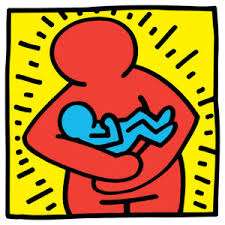

''The orange disc represents the sun''. ['The Chase'].
Side note: ''The name comes from the Niger River which flows through the west of the country; a theory about the origin of the river's name is that it comes from the Tuareg n'eghirren meaning 'flowing water'.''
''The nickname Niger is interpreted by some to mean "black", referring to a dark complexion or African descent, since niger is the Latin word for black. Some commentators identify Simeon as the same person as Simon of Cyrene, and Simon's son Rufus as the same person as Rufus named in Romans 16.''

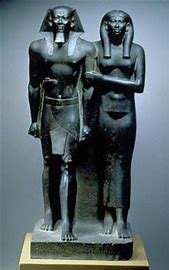
Fire and water. Spirit /Soul. Which and why?
"Niger sits on some of the world's largest uranium deposits, but is one of the "Heavily Indebted Poor Countries" (HIPC). Its economy is based on subsistence agriculture, like crops and livestock, and the export of raw commodities."
Continued: As seen from a different perspective: "To ancient and primitive man, the moon was the visible representative of womanhood. The ancients naturally did not understand the nature of the power which they revered in the moon, but we realize that to them it stood as a symbol of the very essence of woman in its contrast to the essence of man. In the myths and customs outlined in the following chapters, are set forth in shadowy form the feeling, the reaction, which men and women had, not towards a particular woman, not even towards women in general, but to feminineness itself, to the feminine principle which was and is...the mainspring of woman, controlling both her physical life and her inner psychological being. The same feminine principle, or Eros, functions in man as well as women..." ['Women's Mysteries, Ancient and Modern: A Psychological Interpretation of the Feminine Principle as Portrayed in Myth, Story and Dreams'].
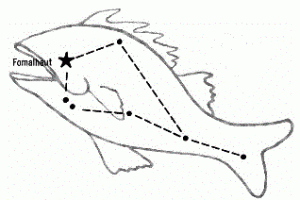
"...a small constellation that lies south of Aquarius...that drinks the waters poured by same. The brightest star = Fomalhaut = The mouth of the Fish''. {Wiki/Southern fish]. Question. 'Tail end' of something = S/E? UP OR DOWN STREAM?
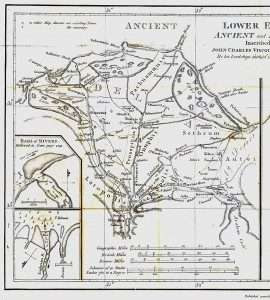
Delta and/or Fenland? {i.e., where land and water meet}. The mouth of the river.
Question. How and why did the Egyptians {to name but one} want to define something {i.e.,psychology} - that ONLY truly became defined in the 19th century?
"That's why physical virginity is only the evocative symbol of the Virginity of Primordial Cosmic Femininity." ['Journey into the Light'].
"For in later Egyptian thought Osiris, who in his passion on earth was the Moonman, became after his 'resurrection' one with the sun. And so also the human being who was Osirified through initiation became 'Son of' the sun." [Same book]. Similar principle i.e.,to reflect on something and its possible outcome. Hopefully - a positive one. 'See' it. Link to ''transcendent third''. Find it to understand it - before asking that bigger question- Why. Why go to all this effort? To verify a subject - generation after generation? Nothing more?
Male/female - sun/moon - shadow/anima - All as a means to something.
"Clement of Alexandria elucidates the idea that Jesus is the 'son of god' by explaining: 'The Son is the consciousness of the Father.' The 'Father' is the Mystery...the dazzling darkness of UNconscious Consciousness." [From the book by T. Freke and P. Gandy. Emphasis, this readers].
Dazzling Aten.

Niger is Latin for black.''
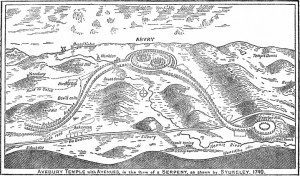 "In beginning a meditation practice, [or study. This readers input]- there is always a quite pleasure, a gentle natural growth,; one takes a lively interest in the work; it seems easy; one is quite pleased to have started. This stage represents Isis. Sooner or later it is succeeded by depression {and or lethargy} - ''the dark night of the soul''- an infinite tiredness and detestation of the work {as every other subject proves if only in its early stages }. The simplest acts seem impossible to perform. Such impotence fills the mind with apprehension. The intensity of this feeling can hardly be understood by anyone who has not experienced it {dramatic effect ONLY, i.e.,most people have experienced the 'mental' effort of understanding something/anything - its pro's and cons }. This is the period of 'Apophis'. It is followed by the arising not of 'Isis' but 'Osiris' {i.e.,'second wind' - but with more 'substance' to it - hence in a different 'form' - relabeled}. This ancient condition is not restored, but a new and superior condition is 'created', a condition only rendered possible by the process of 'death' {and therefore a 'rebirth' of something }. The Alchemists themselves taught this same truth {i.e.,,in their own words}. The first matter of this work was base and primitive though 'natural'. After passing through various stages the 'black dragon' appeared; but from it arose the perfect and pure gold." [Extract from www.thelemapedia.org/index.php/IAO. All emphasis, this readers].
"In beginning a meditation practice, [or study. This readers input]- there is always a quite pleasure, a gentle natural growth,; one takes a lively interest in the work; it seems easy; one is quite pleased to have started. This stage represents Isis. Sooner or later it is succeeded by depression {and or lethargy} - ''the dark night of the soul''- an infinite tiredness and detestation of the work {as every other subject proves if only in its early stages }. The simplest acts seem impossible to perform. Such impotence fills the mind with apprehension. The intensity of this feeling can hardly be understood by anyone who has not experienced it {dramatic effect ONLY, i.e.,most people have experienced the 'mental' effort of understanding something/anything - its pro's and cons }. This is the period of 'Apophis'. It is followed by the arising not of 'Isis' but 'Osiris' {i.e.,'second wind' - but with more 'substance' to it - hence in a different 'form' - relabeled}. This ancient condition is not restored, but a new and superior condition is 'created', a condition only rendered possible by the process of 'death' {and therefore a 'rebirth' of something }. The Alchemists themselves taught this same truth {i.e.,,in their own words}. The first matter of this work was base and primitive though 'natural'. After passing through various stages the 'black dragon' appeared; but from it arose the perfect and pure gold." [Extract from www.thelemapedia.org/index.php/IAO. All emphasis, this readers].
Try ''reincarnation/incarnation'' to understand something further. Before those two bigger questions are asked. It also defines what the [red lion?] represents. What its 'start' point is.
Black flint in relation to black dragon?
Refresher: "It ascends from the earth to the heaven and again it descends to the earth and receives the force of things 'superior' and 'inferior'. By this means you shall have the glory of the whole world and thereby all obscurity shall 'fly' from you..."['Emerald Tablet'].
Follow the title of the book.
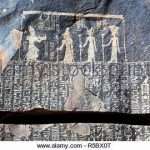
Entry or exit? Iron or gold?
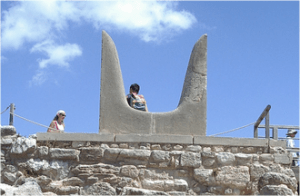
Pleiades between the horns. Energy in a different form. Bull or cow horns? ''Horns of Consecration.''
From a different perspective: ''Hieroglyphs at Philae's temple of Isis refer to milk as ankh-was {'uas'}, or 'life and power'. Milk seems to be infused with this magical element of transferring life and power to the one who is deceased, much in the way that the breast milk of the mother keeps her infant alive and growing....There seems to be this connection in the mind of the Numbians. For the Nubians, then, milk would have been the ideal offering to aid in the rebirth of Osiris. Milk libation rituals would have been performed during annual funerary rites of Osiris. Known as the Festival of Entry - during the month of Khoiak, in the early FALL, when the Nile flooding reached its peak...Nubian inscriptions found on such buildings as the Gate of Hadrian and a room in the temple of Isis known as the Meroitic Chamber....The longest such inscription at Philae as well as in Egypt {twentysix lines}-dated April 10 AD 253 gave a command by the king of Meroe to throw a party/feast {'joy/grace' link?} - for the entire district...celebrated for eight days. From A LONG colonnade along the west side of the island people could watch the entourage cross the Nile to the Abaton sanctuary on Bigga to worship Osiris.'' [ Page 30/1 'Archaeology' / Nov/Dec 2021].
Mona?
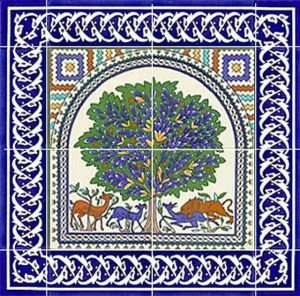
Clearly the attainment spells the eclipse of the Dragon. Where light shines no darkness can there abide. For being the basis of the instinctual life, harnessed and chained to the needs and clearly perceived ideals of the psyche, the dragon shuns the sunbeams and the daylight. No longer do its projections and compulsive automatisms haunt the light of consciousness. No longer is the personality tortured as by some foul and evil presence. Its needs and dictates, once so imperious, cease their urgency, finding their proper place within the natural economy.
Side note: "The sudden and almost desperate boom in cathedral building appears designed to climax at the end and beginning point of Joachim’s ages, 1260. Certainly, in the case of the almost incredible twentysix-year rebuilding of Chartres Cathedral, some prominent but unspoken deadline forced the completion of the work. The cathedrals of Our Lady, perhaps, were intended to house the spirit of the new age, the age of the Holy Spirit according to Joachim of Flores.....

Sycamore GAP. N/W boundary of Europe.
Continued: Jewish-Roman historian Josephus, as well as Christian and Jewish sources from the Byzantine period, locate Mamre at the site later renamed in Arabic as Ramat el-Khalil, 4 km north of historical Hebron and approximately halfway between that city and Halhul. Herod the Great apparently initiated the Jewish identification of the site with Mamre, by erecting there a monumental enclosure. It was one of the three most important "fairs" or market places in Judea, where the fair was held next to the venerated tree, accompanied by an interdenominational festival joined in time by Jews, pagans, and Christians. This prompted Emperor Constantine the Great to unsuccessfully attempt at putting a stop to this practice by erecting a Christian basilica there."
'Gypsies' to enlarge.
Provence.
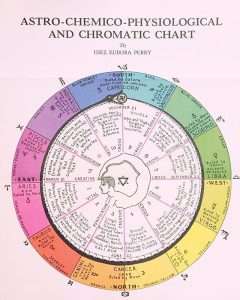
Head/Feet = Aries/Pisces?
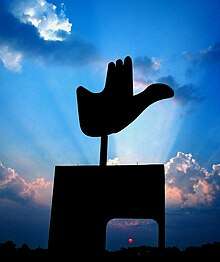
'Head of the Corner'? Bird in flight? 'Thumb' to enlarge.
Analogy: "Modern Chester was founded in around 74 AD as the Roman legionary fortress of Deva, later acquiring part of the name of the {'Twenty'} Legion to become Deva Victrix. It clearly had a large number of impressive Roman buildings, perhaps more impressive than most Roman cities in Britain. Deva was 20% bigger than the other legionary fortresses in Roman Britain (e.g. Eboracum, modern York), and contained the enigmatic Elliptical Building, so far unique in the Empire. The purpose of the Elliptical Building remains unknown, but it must have been an impressive structure in its day. Chester also had the usual components of a legionary fortress, including a headquarters building (principia), smart houses for the commander (praetorium) and senior officers, amphitheatre, stone defensive walls and a main baths building (thermae), not to mention a large harbour and a bridge crossing the River Dee. How much of this was still standing in the seventh century, and can we tell if people were still using it for anything?
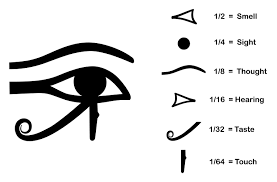
"EYE LEVEL"? An objective eye? Above or below the horizon line?
'Twenty-twenty' vision?
It's worth noting that there is no trace of the Roman name Deva Victrix in the modern name of Chester or in the names Bede knew for the city in when he wrote his Ecclesiastical History in 731 .....…which the English call Legacaster and the British more correctly call Caerlegion…"
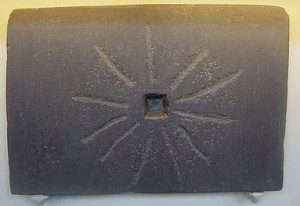
Used as a millstone. 'Revolving' to enlarge.
"Caer (Welsh pronunciation: [kɑːɨr]; Old Welsh: cair or kair) is a placename element in Welsh meaning "stronghold", "fortress", or "citadel",[1] roughly equivalent to an Old English suffix (-ceaster) now variously written as -caster, -cester, and -chester...The term is thought to have derived from the Brittonic *kagro- and to be cognate with cae ("field, enclosed piece of land").
From southern Egypt to Chester and/or Hadrian's Wall = S/E - N/W = 'boundaries' of the Roman empire.
'Line of sight' by way of the use of a 'thumb'.
Tom Thumb.
"An unusual designed building, it goes back to the earliest years of the forts existence....You emerge into an open courtyard with a colonnade around it, behind that you have these massive arched entrances into twelve chambers. As far as i am aware nobody has seen anything like it in the Roman empire....Has to be something special. Chester could have become the Roman capital city." ['Britain's Most Historic Towns: Chester'].
To stretch one's horizon.
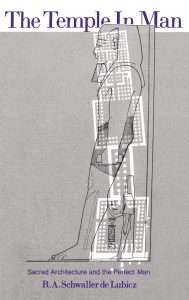
Whose leaning on who?
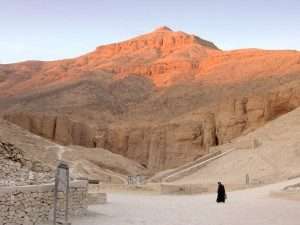
'She who loves silence'.
And/or: ''The Holy Land extends throughout the Levant, and we traveled a good portion of it while filming for the upcoming Lenten virtual ‘Pilgrimage of Freedom’Pilgrimage of Freedom: from Egypt, into Sinai, and then on to the deserts of Israel and Jordan. We walked barefoot over the ‘holy ground’ where Moses removed his sandals before the burning bush. This is the place where the word ‘holy’ is used for only the second time in the Bible – theologically twentysix generations after creation when, “God blessed the seventh day and made it holy, because on it he rested.” (Genesis 2:3). Exodus and the Ten Commandments are thus a new creation, a new covenant based on God’s saving presence with his chosen people. “I myself will go with you, to give you rest.” (Exodus 33:14)
Toward the end of our trek, I felt we personified the last part of the Song of Songs:
Who is this coming up from the desert
Leaning on her Beloved? (Song of Songs, 8:5).'' ['Magdala' / Israel].
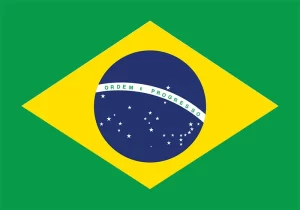
Flag of Brazil. 'Twentysix' stars above the equator. The solitary one = Spica - below. 'Twentyseven' in total. 'nineteen{th}' of November 1889 = Independence Day.
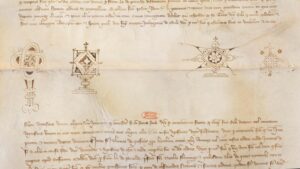
Templar Interrogation Scroll. Twentysix metres long. Hand stitched parchments.
And/or: "The millennial notions of the era seemed to have been sparked by noting this significant point. When the cusp moved across the Epiphany, as happened in the twelfth century, a crop of new millennial prophecies emerged both in the Jewish kabbalistic groups and in the Christian communities. Both the Elijah the Prophet visits that sparked the publication of the Bahir, and the prophecies of Joachim of Flores are connected to this secret event. Joachim, in fact, dated the beginning of the third segment of this zodiacal age to 1260, which is just a little over ten degrees of precession from the next cusp/winter-solstice alignment, which is currently in progress. The sudden and almost desperate boom in cathedral building appears designed to climax at the end and beginning point of Joachim’s ages, 1260. Certainly, in the case of the almost incredible twentysix-year rebuilding of Chartres Cathedral, some prominent but unspoken deadline forced the completion of the work. The cathedrals of Our Lady, perhaps, were intended to house the spirit of the new age, the age of the Holy Spirit according to Joachim of Flores.....
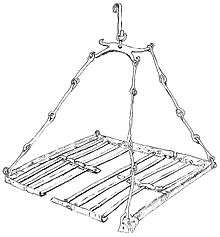
Twentysix links in a figure of eight.
Now, let us imagine this astronomical object, this sphered cube or “stone of the wise,” from the outside. As in figure 11.17, we see twenty-two circles (twentysix if we include Daat) on the surface of a sphere that contains a cube formed from the intersection of the three planes generated by the dragon axes....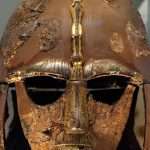 On each plane is a Tree of Life, joined at the center of the sphere. This breaks the sphered cube into eight cells, each of which has three faces reflecting outward from the central Tiferet point. From this arrangement we can see that the astronomical “Stone of the Wise” is also a depiction of a tesseract....Our Precious Stone of the Wise becomes even more curious when we consider that there are stars in each of the twenty-two or twenty-six circles on the surface of the celestial sphere. By using the most prominent star closest to the center of each circle, we can create a unique intergalactic distance/density zip code for our local solar system. If we had set out to design a system that tells us the specific quality of time in a specific locality of space, it is hard to imagine anything more simple and efficient than this apparently ancient perspective. ['The Mysteries of the Great Cross of Hendaye'].
On each plane is a Tree of Life, joined at the center of the sphere. This breaks the sphered cube into eight cells, each of which has three faces reflecting outward from the central Tiferet point. From this arrangement we can see that the astronomical “Stone of the Wise” is also a depiction of a tesseract....Our Precious Stone of the Wise becomes even more curious when we consider that there are stars in each of the twenty-two or twenty-six circles on the surface of the celestial sphere. By using the most prominent star closest to the center of each circle, we can create a unique intergalactic distance/density zip code for our local solar system. If we had set out to design a system that tells us the specific quality of time in a specific locality of space, it is hard to imagine anything more simple and efficient than this apparently ancient perspective. ['The Mysteries of the Great Cross of Hendaye'].
N.B. Winchester Cathedral the LONGEST in the land {Europe?} - built by the Normans. Seti 1st - in the valley of the Kings - the DEEPEST in the valley.
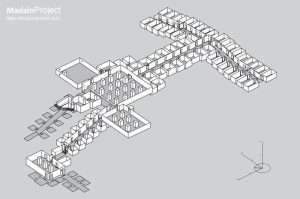
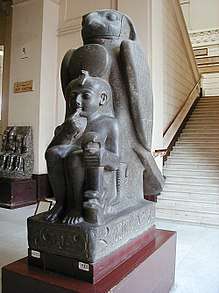
Ramesses as a 'child'. Question. 'Right angle'? Recall the left boundary in Egypt. 'River' = hypotenuse? Fire/Water?
And/or: His son Ramses II {'The Great'} built a temple at Abydos {''Granite gate''} - twentysix statues of Osiris within {''palace'' built on its south side}. In the valley of the 'kings' is built the largest known tomb for ''Sons of'' Ramesses. Eighteen separate chambers can be seen on its front side in the OVERALL {'overlook'?} form of a large 'T' {in the form of a bird. Falcon?}. 26 pillars within its internal dimensions. 'Three' at the base {foot/foundation}, which ASCENDS into the MIDDLE section, comprised of SIXTEEN pillars. To the left of this central 'box' {east?} can be seen ONE single pillar - within its own boundaries. To the right {west?} SIX more. A total therefore - within that east/west axis - of SEVEN {'twentysix' in total}.
Hebron to enlarge.
And/or: Close to the temple at Abydos thousands of rams heads with their horns found - with one solitary BELL {with four animal heads}. + 'Seventeen' of his sons are inscribed on the walls at Karnack.
'Four sided'?

Found at the very end of the middle chamber the LONGEST ONE within those 'eighteen'.
Ring out the old with the new? {Aries?}.
Karnac = Amun-Ra {Ram headed} = 'Lord of the four directions'. {Page 91 'Mystery of Numbers'].
What does 17 represent?
'Lost Treasures of Egypt: Ramses' / S4 EP.1 / Nat-Geo.
From a different perspective: ''Mercurius, following the tradition of Hermes, is many sided....Some call him versipellis {changing his skin {alabaster skin?}...He is duplex, his main characteristic is duplicity {'Double Axes'?}...He is 'two dragons' the 'twin' of 'two natures'. He is the 'GIANT of two fold substance' in explanation of which the text cites the twentysix chapter of Matthew, where the sacrament of the Last Supper is instituted....He is winged and wingless...'' [Page 217 'Alchemical Studies' / C. G. Jung].
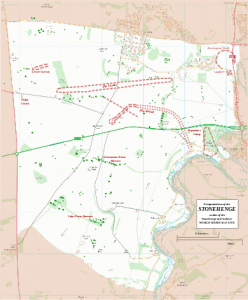
Stonehenge-Woodhenge. Cursus 'added'?
And/or: "In Matthew Chapters 5 and 6 he says when converting your heart in prayer {and/or study} you are reconciling with your brothers before presenting an offering at the altar {i.e., higher over 'lower'}. You are loving your enemies and praying for ones persecutors {empathising}. You can imagine how those twentysix thousand Christians prayed for their persecutors before they were killed. Praying to the Father in secret {'inner'}, maybe in a garden {or green landscape}. He also says not to use empty words or vain words - like rattling on - where one is not attentive {or focused}, not turned towards him. Purity of heart is also mentioned - all in relation to a conversion {re-union}: 'Seek first the kingdom of god and everything else will be ADDED.'...." [Day Eight: Mount of Olives: Lent 2024: Magdala. Brackets - this readers].

The senet board game. Found in EVERY Pharaonic tomb.
'The Swan is white without spot'.
"re-ligion."
The Middle Way.
And/or: ''Gilgamesh was a demigod who was said to have lived an exceptionally long life (the Sumerian King List records his reign as 126 years) and to be possessed of super-human strength. Gilgamesh repeatedly fails the trials set before him and returns home to Uruk, realizing that immortality is beyond his reach. Most scholars agree that the Epic of Gilgamesh exerted substantial influence on the Iliad and the Odyssey, two epic poems written in ancient Greek during the 8th century BC.''
What would the 'right' remedy/Method be?
'Theme' to enlarge.
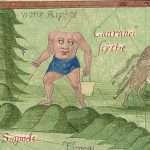
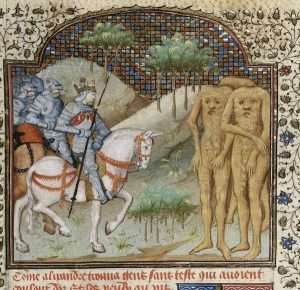
East or West?
And/or: ''Tartessos also became part of the myth of Hercules - who travelled across Europe to capture the cattle of the giant Geryon, described by some as king of the Tartessians.'' [Page 239 'The Celts'].
26 = 'Half' a year?
''Komodo dragons are living, breathing dragons, even if they don't breathe fire. But that doesn't mean they aren't really cool—and fierce—reptiles. Komodo dragons are the largest of lizards, and there are 3,000 kinds of those! They live on only five islands in southeastern Indonesia.''
S/E as a means.....
And/or: ''You know that after two days is the feast of the Passover, and the Son of man - is to be crucified...Now when Jesus was in Bethany, in the house of Simon the leper, there came to him a 'woman' having an alabaster box of precious ointment, and poured it on his head as he sat eating 'meat'....'' [Chapter 26 / Matthew].

MEAT of the matter?
Refresher: "As the Prophet says, 'There is a piece of meat in mans body - when it is in a good state, the whole being improves, and when it is in a bad state, the whole being falls apart. Be aware, that piece of meat is the heart." [Extract taken from chapter 14, 'The Secret of Secrets'].

Templar Interrogation Scroll. Twentysix metres long. Hand stitched parchments. ['Lost Relics of the Knights Templar' / S1 EP4].
A working example: ''Crypts are generally considered to symbolize the Dwat, and, whilst this is sometimes true, at Denderah it is not - as a powerful solar current runs through the lower chamber {south crypt} in the S/W corner of the 'secret palace' from dawn to dusk, east to west....There is, however, a vertical axis to Denderah where Hathor's cult image, housed in the lower chamber is taken to the roof terrace for her heavenly ''new year'' union with the sun, the Aten, enacted in a special kiosk {'Booth'?}, located in the S/W corner....The union was celebrated on the twentysix{th} day of the fourth month {26 Khoiak} - inaugurating the 'Coming Forth' season. The eighth hour from the crypt began it...up the western spiral staircase. Afterwards down a sloping eastern staircase. For a brief moment this kiosk became the Akhet, the eastern horizon gateway between the worlds, where Re and Hathor, the heavenly and the earthly, met in a nourishing union.'' [Page 83/4 'Hathor's Alchemy' / A. Roberts].
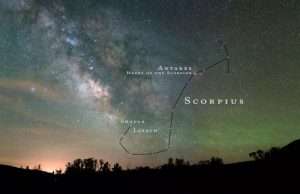
The tail end of the ''stinger'' = two swimming ducks.
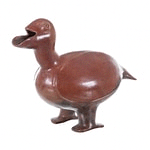
Colima duck.
Side note: Colima (Spanish pronunciation: [koˈlima]), located in central−western Mexico, is the capital of the state of the same name and the seat of the municipality of the same name. It is located near the Colima volcano, which divides the state from Jalisco. Colima is the state's second largest municipality by population after Manzanillo.[3]
In 2011, FDI Intelligence, a subsidiary of the Financial Times of London, ranked Colima first in small cities and tenth in Latin America as a place to live. It was evaluated under six categories: economic potential, human resources, cost-benefit ratio, quality of life, infrastructure and favorable business environment.[4][5] In 2022, however, Colima was ranked as the murder capital of the world with a homicide rate of 182 per 100,000.[6]
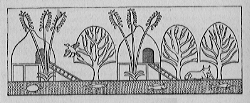
Coming or going?
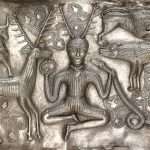
Seated on what?
The historic center of the city is a square called Jardín Libertad (Liberty Garden). It consists of a kiosk in the center, brought from Belgium in 1891, surrounded by palms and leafy trees and bushes. It often hosts live music on weekends.[7]
Pavilion?
The name comes from the Nahuatl "Coliman" which refers to the pre-Hispanic dominion of the area. It divides into syllables referring to the Colima Volcano, also called "grandfather" and the word for hand or dominion. This has been interpreted to mean "place conquered by our grandfathers" or "dominion of the old god or god of fire", referring to the volcano.[8]
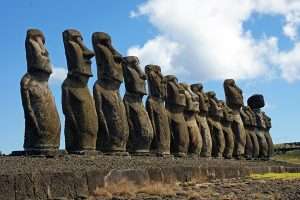
Ancestors.
The seal for the city was chosen in 1986 from a number submitted as part of a competition. The chosen seal contains fields of red to symbolize the hot climates and local flora such as bougainvilleas, pitayas, and palm trees. Blue represents water on which appears an image of King Collimán. Other images include an open book (education), the two volcanoes of the state, foliage called lambrequins and Mexican hairless dogs (xolos).[8]
The city's nickname is "Ciudad de las Palmeras" or City of the Palms.
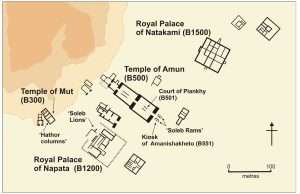
"Further into the interior of the temple we see the {'Twentyfive'} Dynasty king Taharqo depicted on two recently restored bas relief wall panels, in yellow ochre and Egyptian blue on gypsum mortar. The king is shown making an offering to differing forms of Amun – a demonstration of his rule over the Two Lands. On the left (downstream journey) wall he is offering to the human-headed Amun of Karnak, and on the right (upstream journey) wall he is offering to the ram-headed Amun of Gebel Barkal, who was known as ‘Amun of Napata who lives inside the Pure Mountain’...." Temple = rams? Palace = lions? Gebel Barkal to enlarge.
Continued: "In 1844, Prussian Egyptologist Karl Richard Lepsius arranged for the ‘best of the rams’ in front of the neighbouring Great Temple of Amun (B500) to be taken to Berlin. The origins of this temple date back to a mud-brick structure built by Thutmose III, and it was subsequently expanded by many New Kingdom pharaohs. None of that mud-brick structure is visible today, but there are distinctive yellow talatat (sandstone blocks), dating back to the reign of Amenhotep IV, at one part of the stone-built temple. After a period of decline, the Kushite kings of the Twentyfifth Dynasty made restorations and additions of their own, including Piy (Piankhy) who added elaborate wall scenes to illustrate his Victory Stela (originally raised in court B501), although most of these reliefs are now missing or very worn. He also moved six black granite rams from Soleb to form a ceremonial avenue at the eastern entrance of the temple. Restoration and use of the site continued long into the Meroitic period, and a kiosk was later added between these rams by a Meroitic queen, believed to be Amanishakheto."
Side note: The Prudhoe Lions, or Soleb Lions,[1] are a pair of Ancient Egyptian red granite monumental sculptures dating from the 18th Dynasty, c. 1370 BC. They are now presented in the British Museum.[2] The lions originally stood as guardian figures at the Temple of Soleb in Nubia, which was built by the 18th Dynasty King Amenhotep III.
As expected of statues of such grandeur, the lions bear numerous inscriptions documenting their reuse by different rulers. The original inscriptions relate to the pharaoh Amenhotep III. The renewal of the temple by Tutankhamun is also recorded: "he who renewed the monument of (or 'for') his father, the King of Upper and Lower Egypt, Lord of the Two Lands, Nebmare, image of Re, Son of Re, Amenophis, Ruler of Thebes"[3] Another inscription indicates that they were moved by Ay, Tutankhamun's successor. In the 3rd century BC, the lions were moved to Jebel Barkal, a city to the south of the country by Amanislo, a Kushite king of Meroë. Following tradition, Amanislo also had his names engraved on the lions.[2]
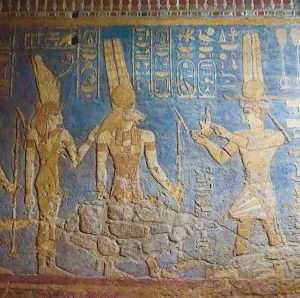
"25TH Dynasty pharaoh making offerings to Amun of Jebel Barkal at the Temple of Mut." Lotus thigh? 'Twentyfive'?
Continued: "Having explored the Gebel Barkal area thoroughly, we began the long journey northwards to Soleb via Sedeinga....The temple at Sedeinga was built by Amenhotep III for his Great Royal Wife Tiy. It was conceived as the feminine counterpart to his own temple at nearby Soleb, and this is believed to have set the pattern for the double temple of Ramesses II and Nefertari at Abu Simbel a century later. The original plan for the temple included a large columned hall with eight Hathoric columns. This hall opened on to a sanctuary on the western side. Six centuries later, Taharqo added a columned portico to the east. Built on shallow foundations and an earthen platform {'pavilion'?}, the temple collapsed during the mid-Napatan Period and the stone was reused in a nearby Meroitic cemetery, and in a church from the early Christian era. Today there is only one Hathor column standing. Around 120 blocks are displayed in a recently installed outdoor museum, and we quickly found the famous block depicting Tiy as a female androsphinx, and one of the Hathor column capitals depicting a young Tiy."
Side step: ''The Cathedral Church of the Holy Trinity,[2] Saint Peter, Saint Paul and Saint Swithun,[3] commonly known as Winchester Cathedral, is the cathedral of the city of Winchester, England, and is among the largest of its kind in Northern Europe. The cathedral is the seat of the Bishop of Winchester and is the mother church for the ancient Diocese of Winchester. It is run by a dean and chapter, under the Dean of Winchester.

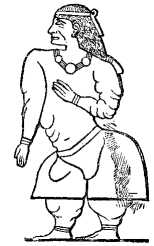
The cathedral as it stands today was built from 1079 to 1532 and is dedicated to numerous saints, most notably Swithun of Winchester. It has a very long and very wide nave in the Perpendicular Gothic style, an Early English retrochoir, and Norman transepts and tower. With an overall length of 558 feet (170 m), it is the longest medieval cathedral in the world,[4] and only surpassed by the more recent churches of St Peter's Basilica in Rome, Basilica of Our Lady of Peace in Yamoussoukro, Liverpool Anglican Cathedral, Cathedral of St John the Divine in New York City and the Basilica of Our Lady in Aparecida. With an area of 53,480 square feet (4,968 m2),[5] it is also the sixth-largest cathedral by area in the UK, surpassed only by Liverpool, St Paul's, York, Westminster (RC) and Lincoln.''
''If people come from many different places they are said to be far and wide.'' ['The Chase'].
''Abroad''?
Broad spectrum.
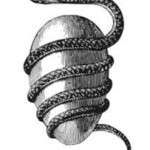
Inner/outer.
And/or: ''It is assumed that Hauron was not a high ranking god in the local pantheon of Ugarit, and he is entirely absent from offering lists from this city.[34][12] He is best attested in incantations against snakebite. One example is KTU 1.82, in which both the god himself and his nameless servants appear alongside a selection of figures presumed to have negative characters in this context, including Resheph, Mot and Tunnanu.[15] A further text of this type is KTU 1.107, where Horon is paired with El and alongside him opens a list of deities implored to remove poison, which includes the pairs Baal and Dagan, Anat and Ashtart, Yarikh and Resheph, Attar and Attapar, Ẓiẓẓu-wa-Kāmaṯu, Shahar and Shalim, as well as Milku, Kothar-wa-Khasis and Shapash, the last three listed individually.[38]
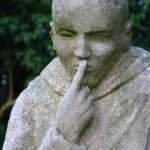
''Silence'' is 'golden'?
He is also mentioned in KTU 1.169, presumed to be a compilation of various protective incantations against witchcraft.[25] In this text, he is asked to expel various malevolent sorcerers....It has been proposed that the name is related the root ḥwr present in Semitic languages[11] and that it might mean "the deep one."[12] Similarities to the Arabic word ḥaur, referring to the bottom of a well or a broad depression,[12] and to Hebrew ḥôr, "cave" or "hole," have been pointed out, though according to Nicolas Wyatt the fact that in Ugaritic the cognate is written ḫr rather than ḥr might cast doubts over this etymology.[13] An alternate proposal is that the name is a cognate of Arabic ḥourroun, "falcon."[13] The early view that it might reflect the ethnonym ḫurri (Hurrian) is no longer considered credible...''
Cleopatra to enlarge as a working example.
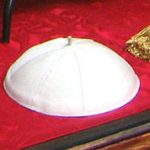
Nipple?
And/or: ''Great big giant stars - so large they radiate blue. Origin of the Supernova's. Gravity + the Strong Force = protons sticking together. TWENTYSIX protons = iron. No more energy can be released. The star loses its battle against gravity, and collapses INWARD. In those final moments {death/rebirth?} it distributes those newly minted heavy elements into the universe.'' ['Universe. The Sun: God Star' / B. Cox / 27.10.21].
Silver/Gold?
''The Sun rotates around its axis every 26 days but, because it's made of gas, different bits rotate at different speeds.'' {QI Elves}.
''The inner core of the earth is believed to be composed of an iron–nickel alloy with some other elements. The temperature at the inner core's surface is estimated to be approximately 5,700 K (5,430 °C; 9,800 °F), which is about the temperature at the surface of the Sun.''
'Labyrinths' to enlarge.
''The two suits, diamonds and hearts are red in colour, while the spades and clubs are black in colour. So, there are a total of 26 red cards and 26 black cards in a standard deck.
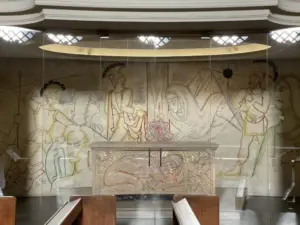
But the most famous artworks associated with Notre Dame de France are the paintings by Jean Cocteau, his only murals outside France. Decorating the walls of the Lady Chapel, Cocteau worked on the paintings between 3-11 November in 1959. People who worked at the church said he would arrive early each day and talked to his creations as they appeared on the walls. There are three panels, the Annunciation (left), Assumption (right) and Crucifixion (middle).
Continued: The four suits in playing cards, clubs, diamonds, hearts, and spades, collectively represent the four elements (wind, fire, water, and earth), the seasons, and cardinal directions. They represent the struggle of opposing forces for victory in life. The other prominent reason for using black and red inks is that these two colours do not fade away when exposed to sunlight. While the black ink was made by mixing soot with linseed oil, red ink was made using cinnabar with linseed oil.''
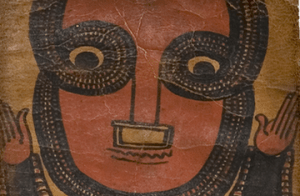
'Tomb' or gateway?
A working example {synchronistic?}: 23rd July 1999 - Chandra X-Ray Observatory - looking for the hottest regions within the universe - caught sight of something that became known as Sagittarius A-Star on September 14th 2013. Border between Sagittarius and Scorpio. The Galatic Core. A flash from 26000 light years away lit up to 300 times the brightness of the sun revealing a black hole....that become a sculptor to our spiralling galaxy....We now believe there not tombs but gateways....If 'information' can escape from such a black hole the implication is profound....What black holes do tell us DEFINATELY is that our intuitive picture of reality of space and time is wrong....There is a deeper picture of reality in which space and time do not exist.'' ['Universe: Black Holes: Heart of Darkness' / B. Cox / 2021].
String/Brane Theory? Recall Part 1.
''Twentythree''?
''Intuitive'' in relation to male/female and that duality clause since the dawn of human kind: ''before the written word came into common use''.
And/or: Two superheated gas bubbles each 25000 light years ACROSS = 50,000. Emissions from same black hole. ''IF our eyes were sensitive to the wavelengths of light - they would span half the sky as seen here on earth.''
That MIDDLE ground again.
Refresher: ''Machina Electrica (Latin for electricity generator) was a constellation created by Johann Bode in 1800. He created it from faint stars between Fornax and Sculptor, to the south of Cetus. It represented an electrostatic generator. The constellation was somewhat popular during the 19th century and had appeared in a number of star charts, but was eventually rendered obsolete when the International Astronomical Union standardized constellation boundaries in 1930 and is now no longer in use.'' [Wiki].
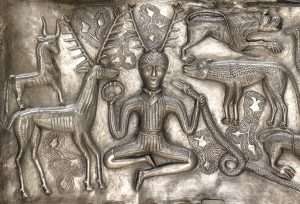
Analogy: Golden Torc = 'event horizon' i.e., UP TO top of spine = 'material/classical' aspect. FROM that same top = 'quantum aspect'. AND/OR: IN/OF the Horizon. Enlarged elsewhere.
137 ? {i.e., where time stands still at the ''event horizon''}. In other words where quantum meets the classical. Mr cox gives an analogy of a river flowing into the black hole. As we simpletons know that nightsky is expanding not contracting as proven by Mr Hubbles work. 'The river of space' {as Mr Cox calls it}, is flowing away from a black hole not towards it even, and if only at the event horizon. One could say the tail end of it is being taken INTO that hole AND more like a grinding machine than a ''waterfall''. Twisting and turning. A RUPTURE of space-time at the event horizon. Anything falling into it is decimated in seconds NOT over millions of years. A good analogy or not? Unless of course its all about an individuals opinion {who seems to have an angst about anything and everything religious}, as opposed to say the collective one {Micro/Macro}. That 'river of space' can only go in one direction regardless of the metaphysics given to it. Unless Mr Cox is withholding something from us. Arrow of Time? Gravitons?
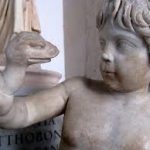
Another Hero. Snake in the grass?
Question. Could that underlying angst have been {unconsciously?} transferred over from one of his boyhood hero's - Mr Dawkins?
Enlarged elsewhere.
''A sneer is a facial expression of scorn or disgust characterized by a slight raising of one corner of the upper lip, known also as curling the lip or turning up the nose.'' [Wiki].
Captain 'Hook'?


His 'servant' or his own 'master'?
Working example: ''The 'Place of Truth' is less easy for us to pinpoint. There is an automatic assumption that this must be a reference to the Valley of the Kings, because the specialist workers who built the royal tombs, and who lived in the state owned village of Deir el-Medina, often referred to themselves as the 'servants IN the place of truth'....However, Egypt recognised more than one 'Place of Truth'. The term could be used to designate any place connected in general with sacred or holy ground {''OF''?} and, more specifically, with tombs, cemeteries and the west.'' ['Nefertiti's Face' / J. Tyldesley].
Therefore East - West = ''IN''?
'Beautiful Lady has Come' OR ''Beloved''?
''The word Medina is an Arabic word for the oldest part of North African cities.'' ['The Chase'].
 "Another symbol of considerable importance that is here mentioned is a terrestrial globe, thirty feet in diameter, which serves a dual function. One is of indicating the position in the world of all initiates by the presence of gold rings set thereon{?}. More importantly the globe, also opens up so that one can enter 'inside' the earth. There, on the inside, is a planetarium, with all the stars of the 'universe' inside the earth. THIS is a very ancient world view, that may seem ludicrous to modern habits of thought, yet which has a profound validity of its own. It is interesting to see this represented, almost in passing, in a seventeenth century document that ostensibly seems to be merely revelling in mechanical contrivances. In fact the whole Rosicrucian castle is represented as a model driven by clockwork. It is indeed a moveable representation of the 'machinery of the universe', the inner world of the astro-etheric that keeps the outer world in order and motion." [Extract from the book by G. Knight].
"Another symbol of considerable importance that is here mentioned is a terrestrial globe, thirty feet in diameter, which serves a dual function. One is of indicating the position in the world of all initiates by the presence of gold rings set thereon{?}. More importantly the globe, also opens up so that one can enter 'inside' the earth. There, on the inside, is a planetarium, with all the stars of the 'universe' inside the earth. THIS is a very ancient world view, that may seem ludicrous to modern habits of thought, yet which has a profound validity of its own. It is interesting to see this represented, almost in passing, in a seventeenth century document that ostensibly seems to be merely revelling in mechanical contrivances. In fact the whole Rosicrucian castle is represented as a model driven by clockwork. It is indeed a moveable representation of the 'machinery of the universe', the inner world of the astro-etheric that keeps the outer world in order and motion." [Extract from the book by G. Knight].
'Antikythera mechanism'. Try Part 5.
Geocentric ?
"The destiny of man, as we have said, is to make or create himself. He is, and he will be the son of his works, both for time and eternity." Quote by E. Levi. i.e,..as {one} example: Tutankhamun. The ''golden'' child.
'God is in the detail'?

Vesica Piscis = ''the bladder of the fish''.
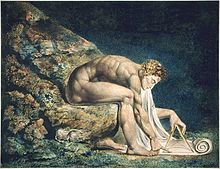 ''Srinivasa Ramanujan has been described as a person of a somewhat shy and quiet disposition, a dignified man with pleasant manners. He lived a simple life at Cambridge. Ramanujan's first Indian biographers describe him as a rigorously orthodox Hindu. He credited his acumen to his family goddess, Namagiri Thayar (Goddess Mahalakshmi) of Namakkal. He looked to her for inspiration in his work and said he dreamed of blood drops that symbolised her consort, Narasimha. Later he had visions of scrolls of complex mathematical content unfolding before his eyes. He often said, "An equation for me has no meaning unless it expresses a thought of God." [Wiki].
''Srinivasa Ramanujan has been described as a person of a somewhat shy and quiet disposition, a dignified man with pleasant manners. He lived a simple life at Cambridge. Ramanujan's first Indian biographers describe him as a rigorously orthodox Hindu. He credited his acumen to his family goddess, Namagiri Thayar (Goddess Mahalakshmi) of Namakkal. He looked to her for inspiration in his work and said he dreamed of blood drops that symbolised her consort, Narasimha. Later he had visions of scrolls of complex mathematical content unfolding before his eyes. He often said, "An equation for me has no meaning unless it expresses a thought of God." [Wiki].
'The Man Who Knew Infinity' BBC 2.
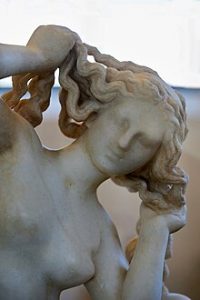
Scholars in the late-nineteenth and early-twentieth centuries, accepting Hesiod's "foam" etymology as genuine, analyzed the second part of Aphrodite's name as *-odítē "wanderer"[8] or as *-dítē "bright".....Hesiod derives the name Aphrodite from aphrós (ἀφρός) "sea-foam",[4] interpreting the name as "risen from the foam",
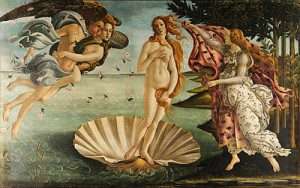 A work in progress: "The complex apparatus of Gnostic practice was designed to stimulate the divine spark within, to prepare it for the release from flesh and for the hazardous journey of the soul through the kingdoms of the archons, the servants of the Demiurge, who ruled every sphere between earth and that of the Pleroma itself. This journey through the spheres is dealt with in more detail in chapter 4, where we will also unfold something of Gnostic cosmology. The descent of the soul into flesh and its eventual return is epitomized in the Song of the Pearl, from the apocryphal Acts of Thomas in which a Prince {the messiah} journeys from his home in the East {N/E?} {the Pleroma} into Egypt {the earth} in order to ‘bring back thence the one pearl which is there.....girt about by the devouring serpent'.
A work in progress: "The complex apparatus of Gnostic practice was designed to stimulate the divine spark within, to prepare it for the release from flesh and for the hazardous journey of the soul through the kingdoms of the archons, the servants of the Demiurge, who ruled every sphere between earth and that of the Pleroma itself. This journey through the spheres is dealt with in more detail in chapter 4, where we will also unfold something of Gnostic cosmology. The descent of the soul into flesh and its eventual return is epitomized in the Song of the Pearl, from the apocryphal Acts of Thomas in which a Prince {the messiah} journeys from his home in the East {N/E?} {the Pleroma} into Egypt {the earth} in order to ‘bring back thence the one pearl which is there.....girt about by the devouring serpent'.
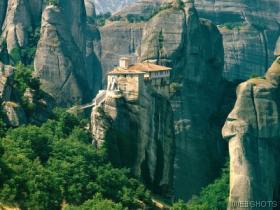
Above or below the clouds?
Side note: The monasteries of Meteora are one of the world's most spectacular sacred sites. Located in the Thessaly region of north central Greece {N/W?}, the towering rocks of Meteora, meaning 'rocks in the air', have long evoked awe in human beings. Paleolithic remains indicate settlements around the stones from between 100,000 to 40,000 BC, and hermits and ascetics have lived in the area since long before the Christian era. The arrival of Christianity began in the 8th century, organized monastic communities had developed by the 12th century, and by the mid 1500's sixteen Greek Orthodox monasteries had been constructed upon the spires of stone {began with SIX}. The monasteries, accessible only by baskets lowered by ropes, became a center of scholarship and art until the mid 18th century when popular interest in monasticism declined. Most of the monasteries were abandoned and today only six survive, of which four can be visited (they can now be reached by bridges and rock-cut steps).
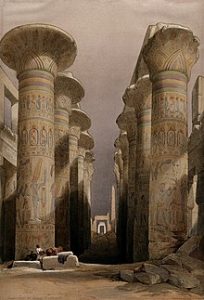
The middle ground.
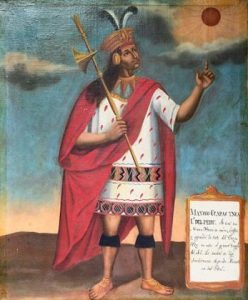
Titicaca in Peru.
Previously a remote area, the construction of a highway in the early 1960's made the monasteries accessible to pilgrims and tourists. This influx of visitors however, has discouraged new monks from joining the monasteries and compelled others to move to Mt. Athos in search of solitude and privacy. The word Meteora, as previously mentioned, means literally ‘hovering in the air’ and of course brings to mind the word meteor. What created this rare geological phenomenon is one of the mysteries of nature and there are many theories though they remain theories and none have been proven. But as amazing a marvel of nature as these giant rocks are the buildings on the top of these is a marvel of man and seem just as miraculous.
And/or: "The name Meteora means "Inbetween heaven and earth." {Kathleen Nichols / Pilgrimage of Paul, Apostle of Hope / Magdale / 2025}.

"The relief faces east. It was created on two large boulders of pink granite in the open air giving the whole a natural effect.[12] The boulders measure 15 by 30 metres (49 ft × 98 ft). Many of the figures carved are life size. The natural cleft, a very large perpendicular fissure, is skillfully sculptured. It is in between the two boulders and is integral to the mythical narratives carved on the entire relief. A water tank was once located at the top of the rock to release water denoting the Ganges River. It cascaded over the cleft and the relief to give the impression of the Ganga descending from the head tied dreads of Shiva. This scene was created during festive occasions and the presence of a brick masonry cistern at the top of the cleft to release water attests to its location at the site. The relief is an ensemble of over a hundred figures (146 is also mentioned) of gods, people, half-humans and animals." Horizontal / Vertical?
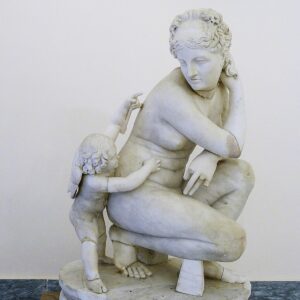
Femur? Resting? Foremost of the Westerners? '153'? AND/OR: "East is a beginning, west its ending." / "Dawn begins in the bones."
He wins the pearl (the divine spark), strips off his filthy garments and takes the way of return, guided by the secret scroll (the hidden gnosis). As he returns, the jewels and robes which he put off at the various stages of his journey thither, are restored to him (Just as Ishtar had to put off her garments at each of the gates of hell). ‘But suddenly, I saw the garment made like unto me as it had been in a mirror.... and I knew and saw myself through it .’ He remembers totally and is brought before ‘the brightness of the Father’ fully equipped as a royal prince.
The parallels between this and the parable of the Prodigal Son (St Luke 15, 11—32) are not accidental. Present too are the resonances with the captivity of Joseph in Egypt whose imprisonment and subsequent change in fortunes are all undergone on behalf of his brothers who have forgotten their divine spark (Genesis 37-45) . Christ himself is figured in this Gnostic parable, in his own flight into Egypt, obscure childhood and subsequent return to his Father bringing with him the Pearl of Great Price, the fruits of Redemption." {Pages 256-8 'The Western Way'}.
Elephant Island?
Dome of the Wind?

Ethiopian magic scroll: 'Tomb' or gateway?

"Behind Will, stands desire."
Continued: Papyrus Harris I is also known as The Great Harris Papyrus and (less accurately) simply The Harris Papyrus (though there are a number of other papyri in the Harris collection). Its technical designation is Papyrus British Museum EA 9999. At 41 metres long, it is "the longest known papyrus from Egypt, with some 1,500 lines of text."[1] It was found in a tomb near Medinet Habu, across the Nile river from Luxor, Egypt, and purchased by collector Anthony Charles Harris (1790–1869) in 1855; it entered the collection of the British Museum in 1872. Its editio princeps is the 1876 "Facsimile of an Egyptian Hieratic papyrus of the reign of Ramses III" published by the British Museum.[2]
The hieratic text of the papyrus consists of a list of temple endowments and a brief summary of the entire reign (1186–1155 BC) of king Ramesses III of the Twentieth dynasty of Egypt. Ramesses III claims to have captured hundreds of thousands of foreign slaves;
 “I brought back in great numbers those that my sword has spared, with their hands tied behind their backs before my horses, and their wives and children in tens of thousands, and their livestock in hundreds of thousands. I imprisoned their leaders in fortresses bearing my name, and I added to them chief archers and tribal chiefs, branded and enslaved, tattooed with my name, their wives and children being treated in the same way.”[3]
“I brought back in great numbers those that my sword has spared, with their hands tied behind their backs before my horses, and their wives and children in tens of thousands, and their livestock in hundreds of thousands. I imprisoned their leaders in fortresses bearing my name, and I added to them chief archers and tribal chiefs, branded and enslaved, tattooed with my name, their wives and children being treated in the same way.”[3]
Its historical section mentions that Setnakhte, Ramesses III's father and predecessor, restored order and stability to Egypt after a time of internal civil conflict, expelling Asiatic followers of Irsu. Ramesses III himself reorganized the state bureaucracy and the army. He fought wars against the Sea Peoples and claims to have subdued them and made them subjects of Egypt.

William Blake's -'Newton'. Question. Scroll from the 'head'? All from a 'rock' ? South East corner? 90 or 180 link?
Analogy of same? - in reference to the creation by Q. S. Lam - what she defines as 'A Soul on a Scroll' - a thirty foot one...."Started the work in 2007, i completed a little every day or when i could. I recall writing the first line of the scroll and groaning at the prospect of beginning the journey, knowing it was going to be a feat of endurance. By the end [2012], my hand was aching and swollen. There was an addictive quality to working on the scroll plunging you into a meditative state and being transported to other 'worlds'."
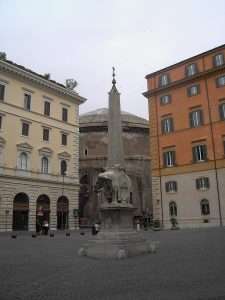
From a different perspective: 'Piazza della Minerva towards the Pantheon'.
The author; who has no knowledge of this subject; identifies herself; or more importantly; those 'warring' [''wrestling'' link] - aspects of her ''internal self'' with Fred, Mia, and Sophia. Fred whom she feels to be a negative aspect of herself - could be identified with the Egyptian Set. Mia - more of a deva; with negative traits, could be identified with Nephthys. Sophia - 'the cloud catcher' - with Isis. And Horus; with the individual herself. Further information to evaluate correctly, [i.e.,to add or detract from]- found elsewhere.
''...to dog ones footsteps''.
Anubis.

"...a small constellation that lies south of Aquarius...that drinks the waters poured by same. The brightest star = Fomalhaut = The mouth of the Fish''. {Wiki/Southern fish]. Question. 'Tail end' of something = S/E?
"The equinoxes are the only times when the solar terminator {the ''edge'' between night and day} - is perpendicular to the equator. As a result, the northern and southern hemisphere's are equally illuminated." [Wiki/'equinox'].
''The Foundation Stone is the name of the rock at the center of the Dome of the Rock in Jerusalem. It is also known as the Pierced Stone {'wounded' link?} because it has a small hole in the S/E corner that enters a cavern beneath the rock...Some say it is the most holy spot in Jerusalem." ['Wiki'].
Hole in the heart? or ''Spot-less'' link? The beginning of something?
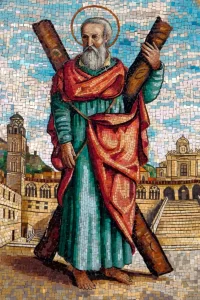
The 'First Called'.
''Santa Maria sopra Minerva in Rome: memories of the FLOODS of the Tiber over the centuries. Flood of 30 November 1422: "In the year of the Lord 1422, on the day of St. Andrew the water of the Tiber grew to the top of this tombstone, at the time of Lord Martin V Pontiff year VI"; Flood of 9 December 1495: "In the year of the Lord 1495, on 9 December, while the immeasurably inflated Tiber came out of its bed, the murky current lifted its swollen waters to this sign"; Flood of October 8, 1530: "So far the Tiber grew and Rome would have already been completely submerged if the Virgin had not established her swift work here"; Flood of September 15, 1557: "On September 15, 1557 the Tiber arrived here while Paul IV was the supreme rector of the city in the third year of his pontificate"; Flood of December 24, 1598: "The pontiff on his return to Rome after the recovery of Ferrara, curses the vortices of the Tiber, never before so superb, gone crazy to this sign, in the year of the Lord 1598, on the ninth day of the calends of January"; Flood of December 28, 1870: "December Flood of 1870"
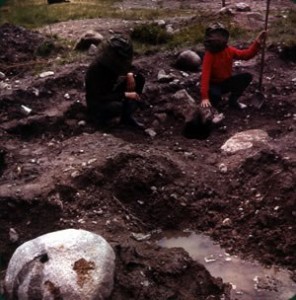
Aliens? or mother and son in bug nets?
N. B. Bobby Restall of Oak Island fame writes in his diaries of many Stones found with ''hand drilled'' hole in the middle. Coincidence?
And/or: {refresher}: ''Dome of stones'' discovered over what became known as the ''vertical shaft'' {a 30' one} - as reported by Bobby Restall in his daily diary while on Oak Island.
"Thirty is a number connected with order and justice. In ancient Rome, a man had to reach the age of thirty to become a Tribune; and according to Biblical traditions, both Moses and Jesus began their public preaching [teaching?] at that age. The Old Testament book of Judges..." [Both 'pieces' of information from 'Mystery of Numbers'. Parenthesis, this readers. Mentioned elsewhere].
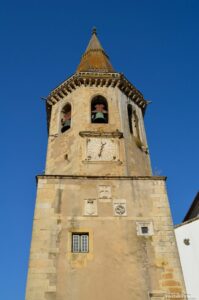
The Manueline clock was taken from the “Sun Gate” (Porta do Sol) of the Templars’ Castle is from the time of D. João III (1523)...According to the Tomar website, there is no doubt that this stone came from the the foot or support of an ancient tomb and was later used in the clock tower [click here to read more].
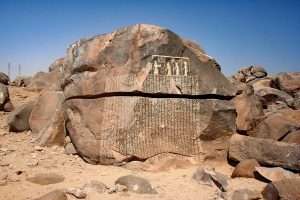
Crack?.
I considered her Temenos Academy to be somewhat above my head, albeit an important flag waver for the esoteric tradition in high academic circles {i.e.,'angel' link}. " ['I Called it Magic' by G. Knight].
Understanding the above gives clues {keys} - to the understanding of W. Blakes works - and therefore subject material. Parts within the whole. Try ''bells'' and ''Morris dancers''.
Stonehenge V Beaker culture?
AND/OR: ''Ring the BELLS that still can ring. Forget your perfect offering. There is a crack in everything. That's how the light gets in.'' {Prologue: 'Dreams of Isis' / N. Ellis].

'Reed' huts? Thatched?
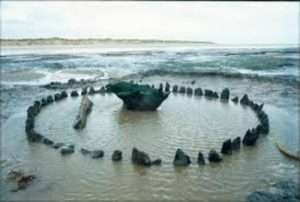
Fiftyfive Oak split trunks {spinal?} on the outside. Another ring close by - with up to sixty 'posts' on the inside. Made by the Beaker People {2049 BC}. Involution or Evolution? as a means.....
A work in progress: ''One evening i sat on a low rock and watched the sun set behind the pyramids at Giza....As i left the plateau in dusky light, i caught a glipse of the moon over my 'shoulder'. A breeze kicked up and blew sand into my face. Worse than feeling like a fool, i felt like a tourist, 'foreign' in a place that i longed for as Home. On the evening train from Cairo to Luxor, i met a 'young man' who told me that the day before he had climbed the pyramid of Menkaure at sunrise. He had bribed the guard with a 'five' hundred dollar bill...Where i wonder were the miracles for which Egypt is legendary....Stories of the making of labyrinths and the mysteries of initiations...One of the more intriging stories is about the singing Colossus of Memnon - one of a pair of statues that rise sixty feet above the plain of West Thebes. Both represent Amenhotep III. After they were shattered by an earthquake in 27AD - the 'southern' one was said to emit a three musical note at 'dawn' - one note each hour; variously described as plaintive singing, the blowing of a trumpet {'rooster'?}, and the striking of a gong....The Romans gave it the title of oracle and was said to signify Memnon greeting his mother, the dawn....I woke before sunrise {heliacal?} on the train the next morning. Before dawn the plains of Qena seemed GREY and lifeless, but at the moment the sun crested {'Kingfisher/peacock' or rainbow?}, the world filled with colour. Green fields lay in even squares as donkeys grazed under the date palms clustered around the mud brick and thatched houses....Three white cranes, three creatures of light, swooped one at a time over the green fields of Qena.'' [Page 30/31 'Dreams of Isis: A Womans Spiritual Sojourn' / N. Ellis].
''One of the largest flying birds in North America - the trumpeter - is a black billed species of swan.'' ['Tipping Point'].
''Flower Wars'' to enlarge.

Cranes?
'Station of No Station'?
Bells to enlarge.
N.B. The national bird of India is the peacock.
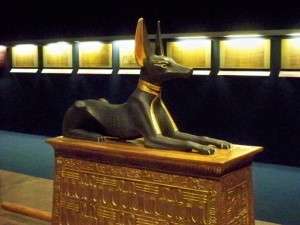
Found within the tomb of tut. [Notice the collar]. Recall its link with the word Ba. And that link to the word Ka . Question. Fairy story?
Continued..."When one has passed through these stages of 'remembrance' [i.e.,in relation to this acclaimed 'framework', by way of objectivity], a different state of 'spirit' as if a different soul, is born in one. That soul is purer and finer than all other souls. It is the 'child' of the heart, the child of truth. While in the form of ''seed'' , this child 'invites' and 'attracts' man to seek and find the truth; and after it is born [link to 'son of'] this child will urge man to seek the Essence of ''God most high.'' Neither this new soul, called the child of the heart, nor its seed and potential, is in every man. It is found in only the pure 'believer.'' [Chapter 7, 'The Secret of Secrets'], i.e.,"Verily, he knows what is secret, and what is yet more hidden" [Quran. 20:7].
"Do you know why the grain of mustard seed was used by Jesus in relation to the Kingdom of God? Not, in fact, because of its small size - there are many other types of seed smaller still. This is what i have been told: The mustard seed is the only known seed which is pure, in that it cannot be hybridised or grafted on to any other seed or plant of any other species than its own. In fact it is as inviolable as true faith itself." ['A Man Seen Afar' / W.T.P].
'A grain of wisdom'.
Question. How many grains make a cake?
Funerary cake?
A working example?..."To recover from ingrained habits and our subconscious imitations of parents and peers is truly a spiritual warfare. It is the narrow way that few want to travel as it requires going against the grain of our own behavior...
Upstream or Down stream. 'Place of Rowing'?
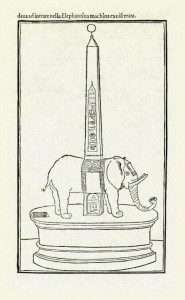
Moving 'mountains'?
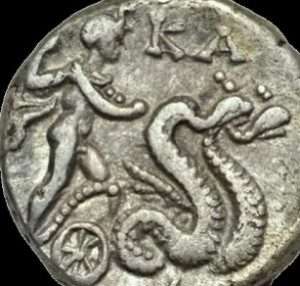 ''For truly, i say to you, if you have faith as a grain of mustard seed, you will say to this mountain: Move hence to yonder place - and it will move, and nothing will be impossible to you.'' [Matthew xvii, 20-21].
''For truly, i say to you, if you have faith as a grain of mustard seed, you will say to this mountain: Move hence to yonder place - and it will move, and nothing will be impossible to you.'' [Matthew xvii, 20-21].
Karnak?
''A voice of one calling: “Prepare the way for the LORD in the wilderness; make a straight highway for our God in the desert. Every valley shall be lifted up, and every mountain and hill made low; the uneven ground will become smooth, and the rugged land a plain. And the glory of the LORD will be revealed, and all humanity together will see it. For the mouth of the LORD has spoken.”…
continued..."The first and most fundamental effort is the objective study of ourselves...This simple effort begins the the process of creating a space {seed?} within you that is not completely hypnotized by external events. Though you still react to external circumstances through ingrained habit, there is now this sliver of your Self that is not pulled out of you. A new space of inner freedom is being created {'cubit'?} along with a new sense of a deeper identity..." ['Wisdom of the 4th Way']. Continued elsewhere.
Follow the title of the book to 'see it' within this subject materials broader {horizon?} base.
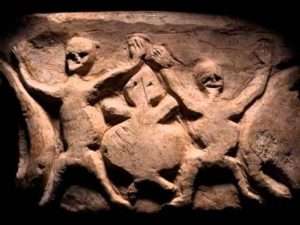

Six runs.
From a different perspective: The Bahir adds that portions of the celestial sphere can be equated with the spheres of each sefirah, or globe, on the Tree of Life. In verse 179 of the Bahir we learn that our physical world “is like a mustard seed in a ring.” In a sphere around the ring are the ten spheres and their animating statements, ten times the phrase “And God said .. .” is used in Genesis, which verse 179 locates in space around a center point, supposedly the mustard seed....We learned that there are Ten Spheres and Ten Sayings. Each sphere has its saying. It is not surrounded by it, but rather, it surrounds it. This [physical] world is like a mustard seed inside a ring. Why? Because of the Spirit that blows upon it, through which it is sustained. If this spirit were to be interrupted for even a moment, the world would be annihilated....This, of course, suggests the parable of the mustard seed found in Matthew 13:31-33 and Mark 4:30-32: “The kingdom of heaven is like a mustard seed which a man took and planted in his field. Though it was the smallest of seeds {ishon?}, yet when it grows it becomes a tree, so that the birds of the air come and perch in its branches.” In Matthew, Jesus goes on to relate the parable of the yeast, a metaphor for the kingdom of heaven as a transformative force that spreads throughout all matter...Verses 63, 95, and 106 of the Bahir describe the Tree that grows from this mustard seed in terms of the ancient ideas later written down in the Sefer Yetzirah and the Sefer Zohar, two books that are part of the Hebrew kabbalistic tradition.” We must remember that works such as the Bahir were written for the initiated few; if we take them literally, we are sure to misunderstand their meaning.
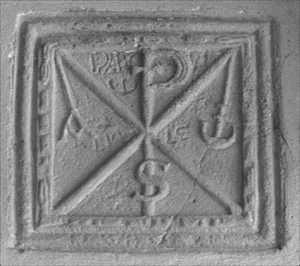
Swing{ing} + lure to enlarge.
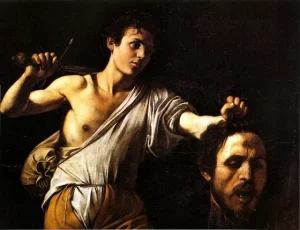 These verses from the Bahir make the pitfall of literality quite apparent. Attributed to Rabbi Amorai, the spokesman for the Bahir tradition as a whole, verse 95 reveals the structure of the Cube of Space and the jewel of the celestial Tree within it. This cubic structure, “the arms of the world,” is based on the ancient concepts of the axis, the sphere, and the heart. If we know the secret of their meaning, then this is one of the most straightforward verses in the Bahir. Without the key, however, it is merely an incomprehensible string of numbers. The very secret of alchemy lies in the symbolic images of the axis, the sphere, and the heart, which are an ancient, perhaps even pre-catastrophe, astronomical description of the cosmic mill....From the Bahir, we learn that the Tree of Life is actually the “Precious Stone” whose facets are projected onto the celestial sphere and which is part of the continuous flow of the Sea of Wisdom. John’s Revelation is a version of this, with the Tree of Life on the banks of the flowing river, deep inside New Jerusalem’s Cube of Space. We can also see that all of this weird symbolism actually has a context and a meaning, and is grounded in firm reality.
These verses from the Bahir make the pitfall of literality quite apparent. Attributed to Rabbi Amorai, the spokesman for the Bahir tradition as a whole, verse 95 reveals the structure of the Cube of Space and the jewel of the celestial Tree within it. This cubic structure, “the arms of the world,” is based on the ancient concepts of the axis, the sphere, and the heart. If we know the secret of their meaning, then this is one of the most straightforward verses in the Bahir. Without the key, however, it is merely an incomprehensible string of numbers. The very secret of alchemy lies in the symbolic images of the axis, the sphere, and the heart, which are an ancient, perhaps even pre-catastrophe, astronomical description of the cosmic mill....From the Bahir, we learn that the Tree of Life is actually the “Precious Stone” whose facets are projected onto the celestial sphere and which is part of the continuous flow of the Sea of Wisdom. John’s Revelation is a version of this, with the Tree of Life on the banks of the flowing river, deep inside New Jerusalem’s Cube of Space. We can also see that all of this weird symbolism actually has a context and a meaning, and is grounded in firm reality.
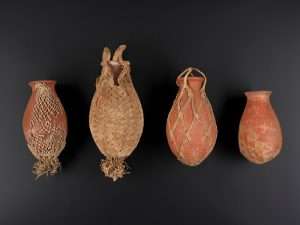
Found with the Qurna Queen and child: ''under a rocky outcrop {'overhang'? on the north side of the valley at Thebes.''
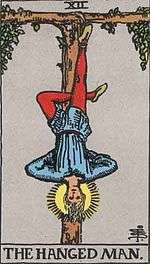
Common factors?
The first three verses of the sixth chapter of Rabbi Akiva’s Sefer Yetzirah supply the key to this astronomical gnosis, although in an oblique fashion. The first verse informs us that as proof of the existence of the Tree of Life, the twelve, the seven, and the three, “He set them in the Teli, the Cycle and the Heart. These are Three Mothers . . . And seven planets and their hosts, and twelve diagonal boundaries a proof of this true witness in the Universe, Year, Soul and a rule of twelve and seven and three: He set them in the Teli, the cycle and the Heart. The secret lies in the mysterious word teli. It occurs in neither the Torah nor the Talmud, although it is used in the Bahir. There is considerable dispute among scholars as to its precise meaning. The only similar word in the Bible is a single reference to some kind of weapon in Genesis.'? Apparently, from the root of the word talah, “to hang,” it could have been some kind of bolo, or a weight suspended on a rope for throwing. This reading suggests that the Bahir is talking about the celestial axis around which the heavens rotate, a kind of imaginary string from which the celestial globe hangs, as well as a point around which the weight orbits as the bolo is swung.
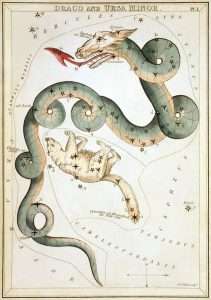
Biting ones tongue?
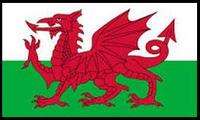 But what is the string connected to? An ancient midrash, “The Prayers of Rabbi ‘In The Beginning,’” tells us that it “hangs [by a thread] from the fin of the Leviathan.” This ancient serpent can only be the constellation Draco, the Pole Serpent mentioned in Job 26:13, “By His Spirit the heavens were calmed, His hand pierced the Pole Serpent,” and in Second Isaiah 27:1, “On that day [the Day of Judgment] with His great sharp sword, God will visit and overcome the Leviathan, the Pole Serpent, and the Leviathan, the Coiled Serpent, and He will kill the dragon of the sea.” It is important to note that three such dragons are mentioned here.....And there is still another way to look at the concept of the Teli. If we think of the Milky Way as the Leviathan because of the way that it snakes across the night sky through the year, then this third Teli, yet another dragon-axis, becomes the galactic axis, running through the ecliptic from Scorpio/Sagittarius to Taurus/Gemini; see fig. 4.7. This is the third and final dragon. Like the ecliptic axis, the galactic axis is constant and unmoving. Between these two pillars, or perpendicular axes, lies the coiled dragon of precession, spinning slowly backward through time, moving one degree of arc every 'seventytwo' years. Knowledge of the backward march of the precession caused by the earth’s tilt constituted the great secret of many ancient cultures as different as Greece and the Maya of Mexico....
But what is the string connected to? An ancient midrash, “The Prayers of Rabbi ‘In The Beginning,’” tells us that it “hangs [by a thread] from the fin of the Leviathan.” This ancient serpent can only be the constellation Draco, the Pole Serpent mentioned in Job 26:13, “By His Spirit the heavens were calmed, His hand pierced the Pole Serpent,” and in Second Isaiah 27:1, “On that day [the Day of Judgment] with His great sharp sword, God will visit and overcome the Leviathan, the Pole Serpent, and the Leviathan, the Coiled Serpent, and He will kill the dragon of the sea.” It is important to note that three such dragons are mentioned here.....And there is still another way to look at the concept of the Teli. If we think of the Milky Way as the Leviathan because of the way that it snakes across the night sky through the year, then this third Teli, yet another dragon-axis, becomes the galactic axis, running through the ecliptic from Scorpio/Sagittarius to Taurus/Gemini; see fig. 4.7. This is the third and final dragon. Like the ecliptic axis, the galactic axis is constant and unmoving. Between these two pillars, or perpendicular axes, lies the coiled dragon of precession, spinning slowly backward through time, moving one degree of arc every 'seventytwo' years. Knowledge of the backward march of the precession caused by the earth’s tilt constituted the great secret of many ancient cultures as different as Greece and the Maya of Mexico....
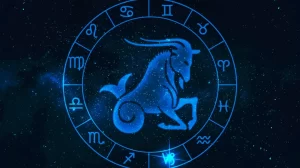
Knotted tail?
 Draco was identified with several different dragons in Greek mythology. Gaius Julius Hyginus in De Astronomica reports that it was one of the Gigantes, who battled the Olympian gods for ten years in the Gigantomachy, before the goddess Athena killed it and tossed into the sky upon his defeat. As Athena threw the dragon, it became twisted on itself and froze at the cold north celestial pole before it could right itself....
Draco was identified with several different dragons in Greek mythology. Gaius Julius Hyginus in De Astronomica reports that it was one of the Gigantes, who battled the Olympian gods for ten years in the Gigantomachy, before the goddess Athena killed it and tossed into the sky upon his defeat. As Athena threw the dragon, it became twisted on itself and froze at the cold north celestial pole before it could right itself....
There are, however, two other ways to interpret the dragon-axis of the Teli. Medieval Hebrew astronomers used the term teli to denote the inclination of the orbit of a planet from the ecliptic. In the case of the moon, this allows one to track eclipses. Eclipses occur only when the sun and moon arrive at the moon’s nodes, or the head and tail of the dragon to the ancient astronomers, at the same time.... This happens roughly every six months. Solar eclipses were seen as occasions when, metaphorically, the dragon caught and swallowed the sun for a period of time. The concept of ascending and descending nodes as an axis, the head and tail of the dragon, or Teli, was also used with the other planets. The major such Teli or axis for the sun is formed by its solstice standstills, which are also the points where the celestial equator crosses the ecliptic in this precessional epoch.
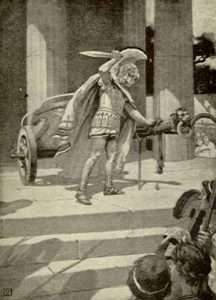
Thinking outside of the 'box'. Boundaries/Dionysus links.
 This axis can be seen as the second dragon, the Coiled Serpent..... And there is still another way to look at the concept of the Teli. If we think of the Milky Way as the Leviathan because of the way that it snakes across the night sky through the year, then this third Teli, yet another dragon-axis, becomes the galactic axis, running through the ecliptic from Scorpio/Sagittarius to Taurus/Gemini. This is the third and final dragon. Like the ecliptic axis, the galactic axis is constant and unmoving. Between these two pillars, or perpendicular axes, lies the coiled dragon of precession, spinning slowly backward through time, moving one degree of arc every seventytwo years. Knowledge of the backward march of the precession caused by the earth’s tilt constituted the great secret of many ancient cultures as different as Greece and the Maya of Mexico. ['The Mysteries of the Great Cross at Hendaye'].
This axis can be seen as the second dragon, the Coiled Serpent..... And there is still another way to look at the concept of the Teli. If we think of the Milky Way as the Leviathan because of the way that it snakes across the night sky through the year, then this third Teli, yet another dragon-axis, becomes the galactic axis, running through the ecliptic from Scorpio/Sagittarius to Taurus/Gemini. This is the third and final dragon. Like the ecliptic axis, the galactic axis is constant and unmoving. Between these two pillars, or perpendicular axes, lies the coiled dragon of precession, spinning slowly backward through time, moving one degree of arc every seventytwo years. Knowledge of the backward march of the precession caused by the earth’s tilt constituted the great secret of many ancient cultures as different as Greece and the Maya of Mexico. ['The Mysteries of the Great Cross at Hendaye'].
And/or: "The pineal gland...in the center of the head, is the key to the third eye. And the third eye has far reaching possibilities beyond the norm. It is the link between the Mer-Ka-Ba field and the Sacred Space of the Heart, and when these are linked, a human being becomes more than human. He or she extends into divinity." ['Serpent of Light'. Mentioned elsewhere].
Refresher...''Life takes refuse in a single space''. Recall Part 1. Coincidence or a meaningful one?
Understanding the above; especially that one sentence; gives a chance of understanding the following - as well as to the subject {purpose of. Origins/beginnings of?} - of astrology...
 "One must begin with causes that are in man himself. How can he be independent of external influences of great cosmic causes when he is the slave of everything that surrounds him? He is controlled by everything around him. If he becomes free from things, he may then become free from 'planetary' influences. Freedom, liberation, this must be the aim of man. To become free, to be liberated from 'slavery'; this is what a man ought to strive for when he becomes even a little conscious of his position. There is nothing else for him, and nothing else is possible so long as he remains a slave both inwardly and outwardly. But he cannot cease to be a slave outwardly while he remains a slave inwardly. Therefore to become free, man must gain inner freedom." ['In Search of the Miraculous'].
"One must begin with causes that are in man himself. How can he be independent of external influences of great cosmic causes when he is the slave of everything that surrounds him? He is controlled by everything around him. If he becomes free from things, he may then become free from 'planetary' influences. Freedom, liberation, this must be the aim of man. To become free, to be liberated from 'slavery'; this is what a man ought to strive for when he becomes even a little conscious of his position. There is nothing else for him, and nothing else is possible so long as he remains a slave both inwardly and outwardly. But he cannot cease to be a slave outwardly while he remains a slave inwardly. Therefore to become free, man must gain inner freedom." ['In Search of the Miraculous'].
Try ''child''.
Side note: According to Herodotus 'slaves' were employed by Khufu to build the Gt. Pyramid. Archaeological evidence says differently. And/or: Made his daughters into 'prostitutes' to get 'one stone' per customer.
Question. Can subject material get us further into that universal mindset?
Red/Scarlet Lady?
Working example: Castor {Gwyn} and Pollux {Gwyrthur} according to Celtic legend competed for the hand of the Red Lady {Creudyladd/Creiddylad}. ['Mirthy: Anglo Saxon Astronomy' / 2022].
''Caroline''?
''Castor[a] and Pollux[b] (or Polydeukes)[c] are twin half-brothers in Greek and Roman mythology, known together as the Dioscuri.[d]
Their mother was Leda, but they had different fathers; Castor was the mortal son of Tyndareus, the king of Sparta, while Pollux was the divine son of Zeus, who seduced Leda in the guise of a SWAN. The pair are thus an example of heteropaternal superfecundation. Though accounts of their birth are varied, they are sometimes said to have been born from an egg, along with their twin sisters Helen of Troy and Clytemnestra.'' [Wiki].
Side note: ''Albert Einstein's surname when translated into English is - One Stone...'' ['The Chase' / 2018].
Red granite? {Aswan?}.
N.B. Orion = ''The Far Strider''. Known as great 'hunter'. Therefore 'lord' of E-W? Question. Who would be 'lord' of S-N? OR would that be 'Queen'? How would that be represented in the night sky - if only in those ancient {Homer?} days.
 "Clement of Alexandria elucidates the idea that Jesus is the 'son of god' by explaining: 'The Son is the consciousness of the Father.' The 'Father' is the Mystery...the dazzling darkness of UNconscious Consciousness." [From the book by T. Freke and P. Gandy. Emphasis, this readers].
"Clement of Alexandria elucidates the idea that Jesus is the 'son of god' by explaining: 'The Son is the consciousness of the Father.' The 'Father' is the Mystery...the dazzling darkness of UNconscious Consciousness." [From the book by T. Freke and P. Gandy. Emphasis, this readers].
"The myth of Sophia climaxes with the bride and bridegroom making love together, united as one in a mystical marriage. This image is an important mythological motif for the original Christians, because it represents the realization of Gnosis." [From the book by T. Freke and P. Gandy].
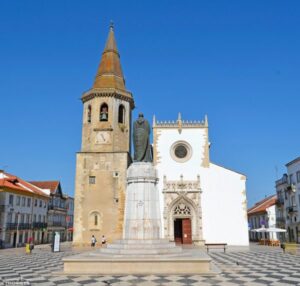 "The destiny of man, as we have said, is to make or create himself. He is, and he will be the son of his works, both for time and eternity." Quote by E. Levi.
"The destiny of man, as we have said, is to make or create himself. He is, and he will be the son of his works, both for time and eternity." Quote by E. Levi.
'God is in the detail'.
Understanding the above explains why all those 'golden' artefacts 'found' there way into the tomb of the ''Golden child.'' A representation of something - other than the obvious. 'See' it?
"So plant your field upon this earth with both the subjective seeds of a good life here and the objective seeds that will yield a good harvest in the hereafter." [Chapter 8,page 50, 'The Secret of Secrets'. Mentioned elsewhere].
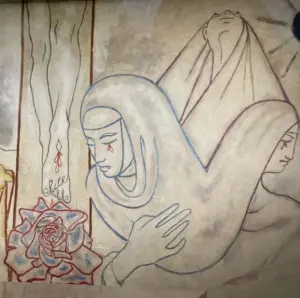
The Church of Notra Dame de France - Soho - London. Aries-Pisces? Any 'diamonds'?
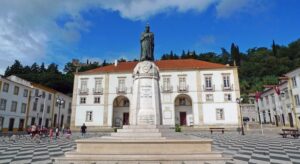
Tomar - Portugal.
"The union of Solar and Lunar consciousness produces a 'superior' third way of knowing called Stellar consciousness. Stellar consciousness is a state of incorruptible wisdom symbolized by the heroic Child of the Philosophers, the metal gold, a diamond or pearl, the Philosophers Stone, the astral body, and of course the stars. Remember, that in view of the alchemists, we are all embarked on a journey through the manifested planets - a journey home to the stars." [Chapter 15, 'Sorcerers Stone' by D. Hauck].
'Ladder of the Planets' ?
''Criticism polishes the diamond of truth.'' Wim Hof.
And/or: ''Old cut diamonds are pre 1919.....'' ['Million Pound Pawn' / 2022].
A work in progress: ''The Star of the South, also known as 'Limar', is a diamond found in Brazil in July 1853.[1] The diamond is cut into a cushion shape and weighs 128.48 carats (25.696 g).''

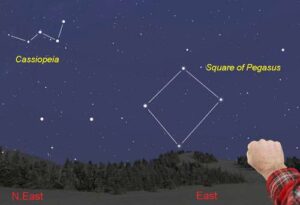 "The ''star'' which the Hermeticists follow leads them to the 'manger' - to the center of history, to the center of the psychic life, to the center of universal evolution or the ''supreme focus of each individual'', to the Alpha and Omega of revelations, to the Heart which is at the center of all hearts. For there is a center of gravitation of hearts, just as there is a center of same for the planets...[understanding what is implied by the ''divine bit'' in relation to A/B/C defines that last sentence; gives it a certain plausibility]...Like the latter, it causes the 'seasons' of the life of the soul. This is why it is not without reason that the manger is venerated by the church each year and that a unique light is lit in the world each Xmas...where Christ becomes Child anew and where the history of mankind becomes the manger." [Taken from the book 'Meditations on the Tarot' [Letter 19] by Tomberg].
"The ''star'' which the Hermeticists follow leads them to the 'manger' - to the center of history, to the center of the psychic life, to the center of universal evolution or the ''supreme focus of each individual'', to the Alpha and Omega of revelations, to the Heart which is at the center of all hearts. For there is a center of gravitation of hearts, just as there is a center of same for the planets...[understanding what is implied by the ''divine bit'' in relation to A/B/C defines that last sentence; gives it a certain plausibility]...Like the latter, it causes the 'seasons' of the life of the soul. This is why it is not without reason that the manger is venerated by the church each year and that a unique light is lit in the world each Xmas...where Christ becomes Child anew and where the history of mankind becomes the manger." [Taken from the book 'Meditations on the Tarot' [Letter 19] by Tomberg].
'Dear Liza' by Sydney Banks.
And/or: ''If you have pulled this card, you are asked to embody your star consciousness. The star of your being is rising....'' [Card 17 -Sothis- 'The Anubis Oracle'].
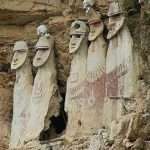
The 'cloud' people.
And/or: ''Our birth is but a sleep and a forgetting: The Soul that rises with us, our Life's Star, hath had elsewhere its setting, and cometh from afar: Not in entire forgetfulness, but trailing clouds of glory do we come from 'god' who is our home....'' [Page 38 'A Mythic Life'].
''Foreign spirit'' +''Cloud of Unknowing''?
Analogy: ''Oh great one who becomes sky, you are strong. You are mighty. You fill every place with your beauty. The whole world lies beneath you. You possess it! As you enfold earth {'pendent'/'flag'?} and all things in your arms, enfold me too. Make of me an indestructible star in your body.'' [Page 229 'Imagining the World into Existence'].
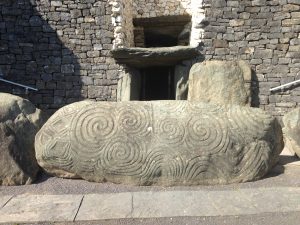
A light that shines at winter - through the 'cubit' at Newgrange.
Hebrew equivalent..."Tradition has it that the high priest entered the holy of holies on one day of the year only. I wondered what could have been happening that was of such significance for this solitary event. Could it be that the high priest was observing that sunlight had reappeared on the northern wing of the cherubim, signifying an end to winter; that all was well with the macro-cosmos? It would be a slightly different form of observation than watching the winter solstice at Stonehenge, but with the same connotations. As quoted earlier, the Venerable Bede described the 'cherubim' as being...filled with the light of heavenly wisdom...a great store of knowledge...If the reference to the oracle being 120 cubits high is actually a reference to a 'triangular' pattern' containing numbers that add up to 120, then we are again noting principles of ancient wisdom. As Bede noted, the Latin translation of the word 'cherub' is ''a great store of knowledge''. " [From the book by K. Gest. Emphasis, this readers].
Regardless of whether the above author is correct. The important point is the understanding of a ''mind set''. The ATTEMPT to understand ''subject material'' from the dawn of human thought.
Fact or Fiction. A possibility or not?
Question. ''Zenith'' link? Question 2. Zenith of what?
Side note: ''Neither the New Testament nor the Church Fathers allude to Mary Magdlene's fate after the resurrection. Likely she was among the one hundred and twenty in the Upper room, participating in the beginnings of the early Church formation {'Foundation'?}: Beyond that different traditions offer possibilities about how her life continued....'' [ Page 97 'Mary Magdalene: Insights from Ancient Magdala' / J. Ristine].
And/or: Triangular ''tripods'' in Homers Secret Iliad? and/or: Summer ''triangle''? and/or: {Pyr}amid? All as a means...?

A political animal or a spiritual one?
Yet another analogy with the same intent - different time period - different author. Question. A universal conspiracy?..."To raise the evanescent ''real'' man to a state of 'perfection' [called] ideal man, is the great Arcanum, that cannot be learned in books. It is the great secret , that may be understood by a child, but will forever be incomprehensible to him who, living entirely in the realm of sensual perceptions, has no power to grasp it. This attainment of 'spiritual consciousness' is the Magnum Opus, the great work, of which the alchemists said..."[Quote from the book by F. Hartman].
Subjective/objective? Which and why?
A working example: "After this dream I gave up drawing mandalas. The dream depicted the climax of the whole process of development of consciousness. It satisfied me completely, for it gave a total picture of my situation. I had known, to be sure, that I was occupied with something important, but I still lacked understanding, and there had been no one among my associates who could have understood. The clarification brought about by the dream made it possible for me to take an objective view of the things that filled my being." [Page 224 'Memories, Dreams and Reflections' / C. G. Jung].
N.B. A study program does the same.
'On Having No Head: Zen and the Rediscovery of the Obvious' / D. E. Harding.
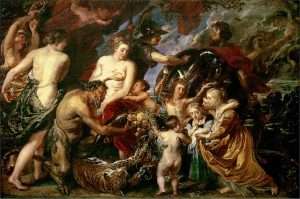
Minerva protecting peace from Mars.
A work in progress: If I am reproached with describing only those aspects of Goethe's view of the world to which my own thinking and feeling lead me, I can make no other reply than that I only wish to regard another personality as it appears to me in accordance with my own being. I do not place great value on the objectivity of exponents who are willing to efface themselves when they are describing the ideas of others.  I believe that they can only give us lifeless, colourless pictures. A conflict always lies at the basis of every true presentation of another's world-conception; and one who is wholly conquered will not be the best exponent. The other power must compel respect but one's own weapons must perform their task. I have therefore stated unreservedly that in my view there are limitations to the Goethean mode of thought; there are regions of knowledge which have remained closed to it. I have indicated the direction which observation of world phenomena must take if it would penetrate to those regions which Goethe did not enter, or around which he wandered with uncertain feet when he ventured into them. Interesting as it is to follow the paths of a great mind, I only want to follow anyone so far as he furthers me. What is of value is life, self-activity, not contemplation or knowledge. The historian pure and simple is weak and powerless. Historical cognition saps the energy and elasticity of individual activity. A man who wants to understand everything will in himself be of little account. Goethe has said that only what is fruitful is true. To the extent to which Goethe is fruitful for our age — to that extent ought we to penetrate his world of thought and perception. And I think that the following exposition will show that innumerable, as yet undiscovered treasures lie hidden in his world of thought and feeling. ['Goethe's Conception of the World' / R. Steiner].
I believe that they can only give us lifeless, colourless pictures. A conflict always lies at the basis of every true presentation of another's world-conception; and one who is wholly conquered will not be the best exponent. The other power must compel respect but one's own weapons must perform their task. I have therefore stated unreservedly that in my view there are limitations to the Goethean mode of thought; there are regions of knowledge which have remained closed to it. I have indicated the direction which observation of world phenomena must take if it would penetrate to those regions which Goethe did not enter, or around which he wandered with uncertain feet when he ventured into them. Interesting as it is to follow the paths of a great mind, I only want to follow anyone so far as he furthers me. What is of value is life, self-activity, not contemplation or knowledge. The historian pure and simple is weak and powerless. Historical cognition saps the energy and elasticity of individual activity. A man who wants to understand everything will in himself be of little account. Goethe has said that only what is fruitful is true. To the extent to which Goethe is fruitful for our age — to that extent ought we to penetrate his world of thought and perception. And I think that the following exposition will show that innumerable, as yet undiscovered treasures lie hidden in his world of thought and feeling. ['Goethe's Conception of the World' / R. Steiner].
 "An arcanum {key/sign/archetype?} is that which is necessary to 'know' in order to be fruitful in a given domain of 'spiritual' life. It is that which must be actively present in our consciousness - or even our subconscious - in order to render us capable of making discoveries, engendering new ideas, conceiving of new artistic subjects.
"An arcanum {key/sign/archetype?} is that which is necessary to 'know' in order to be fruitful in a given domain of 'spiritual' life. It is that which must be actively present in our consciousness - or even our subconscious - in order to render us capable of making discoveries, engendering new ideas, conceiving of new artistic subjects.
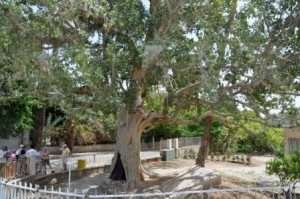
A Fig tree arcanum.
In a word, it makes us fertile in our creative pursuits, in whatever domain of spiritual life. An ''arcanum'' is a 'ferment' or an 'emzyme' whose presence stimulates the 'spiritual' and psychic life of man. And it is symbols which are the bearers of these ''ferments'' or ''emzymes'' which communicate them - if the mentality and morality of the recipient is ready, i.e.,if he is ''poor in spirit'' and does not, suffer from that most serious spiritual malady called self complacency." [Extract taken from Letter One from the book 'Meditations on The Tarot' by Tomberg]. Put ''fertilization'' and ''arcanum'' in the usual box to understand the benefit of both in understanding anything - but especially in relation to this subject. Benefit of. Purpose of; relative to the full journey; not just 'part' of it. The micro within the macro.
"An arcanum = a key that one has to know in order to be able to orientate oneself..." [Same book].
Orientation in relation to a 'direction' relative to 'vertical' from a horizontal perspective. Get it?
Question. How can a 'child' ['younger' link] be identified with that 'understanding / development', when his 'father' was not, [ i.e.,no depiction of same has been discovered in relation to 'father']. Think about it in relation to a concept? i.e.,golden child = 'the living image of Aten / Amum'. Benefit of, in relation to Ba/Ka. Possibility of. Nothing else, in order to understand a subject. An ongoing subject.
Akhenaten = ''Servant of Aten".
Tut = "Living image of Aten". Question. Why the difference. What does it represent? Question 2. Why should it matter at all?

Harmony? Do they speak for Mother Russia or just from their own ego's? FROM their own wallets?
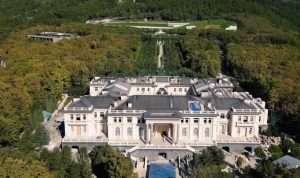
Bleeding Russia dry?
Something extra: "The Greek mathematical philosophers further realized that when harmony occurs in nature around us, and in human nature within us, it does so through the reconciliation of opposites. They tell us so in myth, as the goddess Harmonia was born of parents Aphrodite and Ares, Venus and Mars, the opposites love and war. The very words ''mother'' and ''father'' have etymological roots akin to ''matter'' and ''pattern'', and so all the designs of nature , and all human creations, were considered the result of the reconciliation of these primal ''parents''. [Page 18 'Alexandria. Vol 3' / D. Fideler].
Try ''Duality'' / ''Nature'' and especially ''PATTERN'' - all as a means...?
'Ancient Aliens' program entitled 'Mysteries of the Sphinx' - 'deliberates' on the meaning of the solar disc of Akhenaten, i.e., a 'flying saucer'. For this reader, its real significance related more to 'embossed/debossed' as a representation of something 'external / internal'. See it? Think about it, in relation to ''lion'' picture. Enlarged elsewhere.
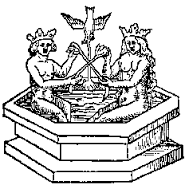
All as a means...?
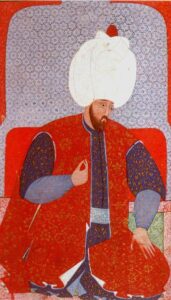
Finger and thumb? Lotus?
Analogy of same... "We now approach rebirth symbolism of a curious pictorial and eloquent character. That the union of male and female produces offspring in the biological world is a commonplace fact. But it has similar application in the psychological world. The union of an integrated psyche - the ''crowned King'' - with the principle of instinct and feeling - ''our red daughter,'' formerly latent and dormant within, must be a pleasurable and emotional experience........."So the union of these two psychic factors is likewise characterized by an intensity of feeling and by a release of 'energy' expressing itself in terms of light and fire {'black' flint?}. The psychic conceives a spiritual 'child' - a 'son,' conjoined with and yet 'superior' to both 'parents.' It is not, naturally, an objective product visible to the eyes of the world. But it inheres within the psychic domain as an integral part of the psyche,[representation of. This readers input] as a spontaneous effort to transcend itself, in a higher more inclusive synthesis. Just as the crowned king is the Ruach centered in Tiphareth - the sun is its 'Father' - so the red daughter is a symbolic glyph of the instinctive world in the guise of a female form - its 'Mother' the moon. So the 'child' is Daath [Hebrew equivalent], knowledge, the Ruach reborn as the supernal child of the Middle Pillar, the direct result of the overcoming of the red dragon, the child of wisdom and understanding." [Representational of]. [ Chapter 4, 'The Philosophers Stone' by Israel Regardie]. Try ''gap''. Then ''simultaneous''.
Try ''Emerald Tablet''.
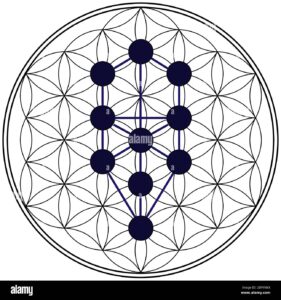
Ninteen?
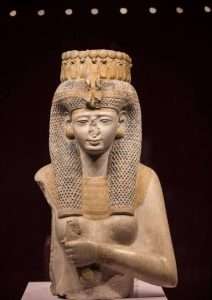
Meritaten: A 'crown' of serpents? The lost princess?
Side note: The King and the Emperor: It is not known when this story was told, but it was probably told during the winter of 1806-1807. Rabbi Nathan was away from Rabbi Nachman for quite a while during this winter. There is also no traditional way of interpreting this story (Rimzey Maasioth, Zimrath HaAretz). However, a number of allusions are quite obvious....This also denotes a czar. As we see in a later story (Story #10, p. 176), a kaiser is of a higher rank than a king. Unlike a king, an emperor has no direct contact with the nations under him. Kabbalistically, the emperor here denotes the sefirah (emanation) of Chokhmah (Wisdom) .....
Chokhmah is also reflected in the universe of Atziluth, the universe of the sefiroth. This universe can only be connected with the lower world through the universe of Beriyah, which is the universe of the Throne of Glory (see Ezekiel 1:26). Chokhmah is thus like an emperor who only contacts his subjects through the kings under him.
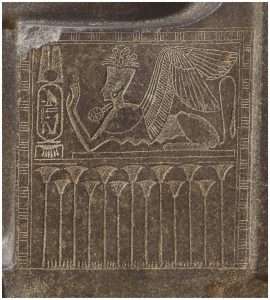
A dyad of Horemheb and Mutnodjmet from Karnak, now in the Museo Egizio, Turin. The sphinx depicted on the side of Mutnodjmet’s throne has arms raised in adoration of her cartouche. Images: Museo Egizio, Turin
King: Kabbalistically, this is Binah (Understanding) (Rabbi Rosenfeld; see Zohar Chadash 45d). Binah is the logic with which God created the world. It is true that Binah is usually seen as a feminine force. However, this is only with relation to Chokhmah. In relation to the lower world (Zer Anpin), Binah is considered a masculine force (Zohar 2:4a, cf. 1:163a). .. Chokhmah is known as Father, while Binah is known as Mother....This pact itself was the consummation of the marriage between Chokhmah and Binah (see Etz Chaim, Shaar HaZivugim 1). Thus it was Chokhmah and Binah together who said, “Let us make man” (Tikkuney Zohar 56, 90b). This represents the creation of the Torah 2000 years before the world (Bereshith Rabbah). (The 2,000 years is Chokhmah and Binah.) {'The Lost Princess' / Rebbe Nachman}.
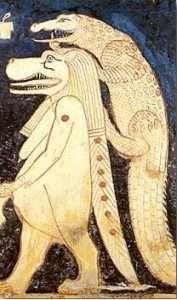
'Forgetting/remembering'. Which and why?
Continued: ''Rebirth'' in relation to 'cave' symbolism. That relationship to 'tomb' and 'womb' symbolism. Enlarged elsewhere. A distinction made therefore between the two. Such authors as R. Bauval? and J. Black? believe tomb discoveries of some worth {i.e.,royal, i.e., 'Kingship' related} - will be discovered in same. No tombs of significance will be found in a 'cave' for reasons stated above. 'Caves' represent the ''beginnings'' of something - nothing else. Those locations {should there be any} have to represent both beginnings and its 'ends'. Alpha/Omega etc.
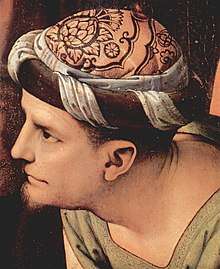
Bald innkeeper?
Continued...That same ''young'' aspect that is seen within the painting of 'The Shepherds of Arcadia.' Explained elsewhere.Clue. Who is the 'woman' seen 'to be' in close proximity to, or touching? [in both paintings]. 'Younger' in relation to 'elder' {'bald' chap?}.
Shadow?
"The Pagan godman was likewise born in a cave. The motif of the cave was popular in the ancient world. It represents the underworld, which, for the gnostics, is the material cosmos in which we presently live as the spiritually dead. Being 'born in a cave' represents incarnation as a body in the cosmos...
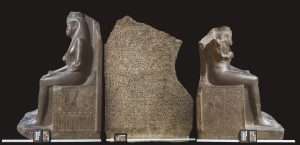
In general, memory involves the confluence of Chokhmah and Binah. Chokhmah is past and Binah is future. To bring something to the present in memory, they must be together. However, when each of them goes back to its own place, they are both in the aspect of “back to back.” This aspect results in forgetting (Etz Chaim, Shaar Shevirath HaKelim 2). {'The Lost Princess' / Rebbe Nachman}.
The body is the psyches prison or tomb and the cosmos is its cave or cavern...To the gnostics, the two paths represented 'remembering' and 'forgetting'. The right hand path { S/E?} of remembering our true nature leads to heaven. The left hand path of forgetting { S/W?} our true nature leads back into the cave..." [From the book by T. Freke and P. Gandy]. Try Part 1.
Try ''womb and tomb''/ ''smith'' and ''jones'' - ALL as a means...?

Thirteen branches. Beech or pine. As a means....?
Side note: "Then I remembered some of the traits Merlyn had taught about the Beech: a symbol of ancient 'and forgotten' wisdom; a tree come down from the Sumerian Temples, sacred to them beyond all others; a species too rooted in the dark depths of the Annwn, to be afforded a place among the Ogam of the living.. And then in a sudden flash of insight, I understood why the Arch-Druid might have an interest in the discovery of Mistletoe growing in its branches. Might not this sacred plant - known to absorb the spiritual quintessence of its host tree - have captured the Otherworld energies of the Beech? And then I remembered about the Sumerian Waters: The Life Waters of Annwn…." [Page 262 from the book by Douglas Monroe].
Question. Sweet waters? {Enki?}. Therefore something else learned? {or would that be 'remembered'}. All as a means...?
Refresher: "This means, if anything, that there had been a recent revival of letters in Wales. 'Beech' is a common synonym for 'literature'. The English word 'book', for example, comes from the Gothic word meaning letters and, like the German 'buchstabe' is etymologically connected with the word 'beech'- the reason being that writing tablets were made of beech." [ Page 38 'The White Goddess' / R. Graves' - in relation to the Welsh Myth - 'The Battle of the Trees'].

'Tomb' = ''prison'' ? And/or: ''Error runs downhill - but truth has to laboriously climb....'' All as a means....? Question. A mind set?

10 years in Quentin or fake news?
A {working?} example: "Once or twice he used the word ''esoteric,'' which i had not heard him use before. But when i tried to stop and ask him what he meant by the word ''esoteric'' he avoided an answer. 'This is not important', G. eventually said, 'call it what you like, that is not the point...You do not realize your own situation. You are in a prison. All you can wish for, if you are a sensible man, is to escape. But how escape?...Furthermore, no one can escape from 'prison' without the help of those who have escaped before'...G. often returned afterwards to the example of ''prison'' and ''escape from prison'' in his talks. Sometimes he began with it, and then his favourite statement was that, if a man in prison was to have a chance of escape, then he must first of all realize that he is in prison. So long as he fails to realize this, he has no chance of escape...No one can help or liberate him by force, against his will or in opposition to his wishes. If liberation is possible, it is possible only as a result of great labour and effort {''grasp?''} and, above all, of conscious efforts, towards a definite aim {Sagittarius?}." ['In Search of the Miraculous'].
Follow the title of the book to 'see' it in its broader context.
Side note: A 'prison' built on the site of the grave of Alfred and wife. Alfred being the 'youngest' son. Question. Where would he be put to represent an 'escape'?
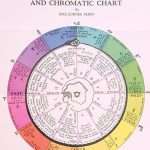
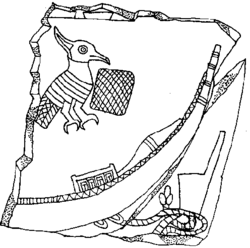
Bound Rekhyt with cage (Lapwing Palette)
And/or: ''When J.G. Bennett made his visit to the shrine of Sheikh Adi in 1953 he was looking for something more than an old tomb. He suspected that the Yezidis were in possession of ancient knowledge and may well have been one of Gurdjief's most important sources....He describes that if a circle is drawn on the ground around one of them, he cannot, of his own volition leave it. The circle becomes a cage, which he cannot escape from. Some strange force, much more powerful than his normal strength, keeps him inside. If he is forcibly dragged out of the circle, he immediately falls into a state of catalepsy, from which he recovers the instant he is brought back inside. But if he is not brought back into the circle, he returns to the normal state...only after thirteen or twentyone hours.'' [Page 53 'Magi: The Quest for a Secret Tradition'].

Any willow basket?
Side note: "The human mind, seen broadly, is vastly complex, and as a result the actual process of transforming the mind is if anything more complex than the simplified description given in the previous pages. It is to deal with this complexity and describe the progressive development of this process that the tradition uses an image that in its modern form is known as a magnetic center. Boris Mouravieff’s Gnosis describes this magnetic center as a cage. This image seems at first sight unnecessary, because it seems obvious that a valid image would be the formation of a psychological or inner equivalent of the monk or hermit’ cell, into which he withdraws from distraction. This latter image is valid, but there are two good reasons for using the idea of the cage.
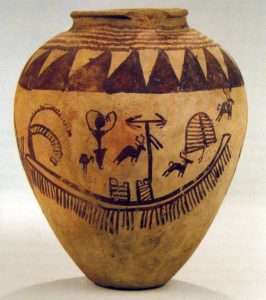
Magnetic north or south? AND/OR: The Rump is part of the Arabian mega constellation of the Lion (al-asad). It lies well south of the rest of the Lion, so it may have been a later addition to the figure.
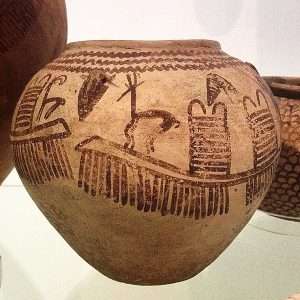
A leap across a void?
First, in a cage, nothing can enter or leave, yet you can see out quite clearly. The second reason is that this is, in fact, an ancient image. Saint Neilos the Ascetic (died ca. 4.p. 430) writes: “Now the food of the passions, as we have already stated many times, consists of sense-impressions. They nourish the passions by attacking the soul with a succession of mental fantasies or idols. That is why Moses put screens of lattice-work around the altar in the tabernacle (cf. Exodus 27:4), signifying that if we wish to keep our mind pure like a tabernacle we should do the same. Just as the lattices around the altar prevented anything unclean from entering, so we should weave a mental barrier against the senses by reflecting on the terrors of the coming judgement, and so bar the entry to unclean impressions. The ARK is an image of exactly the same thing....
.................................

Magnetic pull?

Upside down?
What does this image of the ark represent? The story of Moses and of the escape of the Israelites from the Egyptians has been seen since the earliest days of the church as a parable for the escape of the soul from the “Egypt” of worldly life. When Gregory of Nyssa, in his Life of Moses, writes about that other ark, in which the infant Moses was set adrift, he does so in terms that clearly express the need to establish certain inner disciplines that take the form of an artificial mental center or divinely created center in the mind.....
Whenever life demands that the sober and provident rational thoughts that are the parents of the male child launch their good child on the billows of this life, they make him safe in an ark so that when he is given to the stream he will not be drowned. The ark, constructed out of various boards, would be education in the different disciplines, which holds what it carries above the waves of life. {'Page 282 'A Different Christianity' / R. Amis}.

Babysitter of Class 92?

Tut's nurse.
"The Sufis refer to the spiritual states by the name 'tifl', meaning 'babe', because that baby is born in the heart and is reared and grows there. The heart like the mother, gives birth, suckles, feeds, rears the child of the heart. As worldly sciences are taught to children, the ''child of the heart'' is taught that inner wisdom." [Introduction, 'The Secret of secrets']. Try ''child''.
A ''golden'' one?
Side note. Recall the 'locations' {and therefore their significance} of such 'individuals' {i.e.,what 'they' represent} - as 'Zeus' and/or 'Apollo'.
"For it is the 'woman' that holds the keys of the inner {anima?} planes for a man. If you want to pass the Cumaean Gates you must become as a little child and a 'woman' must lead you..."[ Chapter entitled 'The Old Religion - A Study in the Symbolism of the Moon Mysteries' from the book 'The New Dimensions Red Book'. Mentioned elsewhere].
'Spirit' and/or 'soul' AS A MEANS...?
Exercise. "According to Minucius Felix, the Goddess Persephone was imprisoned by Hades in a cavern, representing the psyche imprisoned in the cosmos." Question. If Hades equates to 'shadow' aspect - what is being ''imprisoned?'' See it?

'Stamp of the feminine'. Real or symbolic?
"This underworld 'cave' in which we are incarnated is both a 'hellish' prison in which we are temporary exiled from heaven and a womb in which we have the opportunity to 'spiritually' mature." [Both exerts from the book by T. Freke and P. Gandy. Emphasis, this readers]. 'Marriage' link?
i.e.,"a mental state, in which spiritual perceptions were achieved, distinguishing between the 'shadow mixed with light', when the power of the imagination was mixed with reason...."]. Enlarged elsewhere.
''One of the greatest thrills of my career was co-producing a play in the West End.....i've always cherished sitting in the dark and just experiencing a story. Having one's imagination fed is vital. It's what makes us human.'' [Hugh Bonneville: 'Readers Digest' / March 2017].
'Ambrosia' / 'Honey mead' to enlarge in the universal sense of the word.
"The neophyte, in his first 'meeting' with Ceridwen, discovers her in the character of a hag or a fury, or as a wrathful giantess. This is an absolutely true image of the experience of anyone who first looks into his own soul, or discovers behind the beauty of Nature her 'destructive' powers. The beginning of initiation must always be a descent into the depths - into Annwn - the kingdom of Hades..." ['The Flaming Door'. Emphasis, this readers]. Try ''giant''.

Guardian of the Amarna gate?
A working example: ''Hundreds of years after the Witchcraze, the archetype of the horrific hag continues to hold tremendous power as a repository for modern cultures fear of women, sexuality, and individual freedom. The repulsive crone has become our guardian at the gate, challenging our readiness to enter a world of joy and 'enchantment'. Those with courage, curiosity, compassion, and a taste for adventure {'inner'?} may comfront her, and when they do, behind the mask of the wicked Witch, they will find the beatific face of the Great Goddess.'' [Page Xiii ,Book of Shadows' / P. Curott].
And/or: ''Nofer-ti-tai-Aten seems to have ultimately died of decline, for there is a very sad sculpture in which she appears in the last stage of it, her cheeks hollow, her once beautiful face shrunken to nothing, and death obviously not far off. It is to be found in the northern group of tombs.''[Page 177 'Nefertiti's Face' / J. Tyldesley].
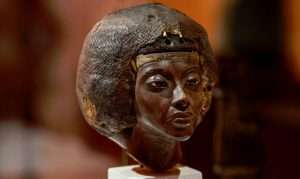
Grandmother in the 'Macro' sense of the word.
''I think you all know me. Everyone calls me Nonna, and i'm the circles crone....i'm probably old enough to be your grandmother....Wicca is a spiritual practice in which women play leading roles as priestesses, and its reverence for the divine as feminine, not just masculine....a balance between the two...'' [Page 55 'Book of Shadows' / P. Curott].
'Woman's Mysteries: Ancient and Modern' by M. Esther Harding.
Tetisheri?
Side step: "The Prophet was quoted as saying, 'I have seen my Lord in the shape of a beautiful youth'. [Link to ''youngest'' symbolism . Greek equivalent = Apollo and/or Egyptian = Menkaure]. Perhaps this is the manifestation of the child of the heart. The image is the mirror. It becomes a means, rendering visible that which is invisible. The truth of 'God most High' is exempt from and free of any kind of description, or any kind of image or form. The image is the mirror [key], though what is seen is neither the mirror, nor the one who is looking in the mirror. Ponder on that and try to understand, because that is the essence of the realm of secrets." [Chapter 9, 'Secret of Secrets'].

Objective eye?

Piazza della Minerva towards the Pantheon. 'Broadest' back? 'Wide' to enlarge.
Egyptian equivalent..."The Egyptians also had an explanation for the moon's light, 'the light of the night - the left eye...which rises in the East, while the globe of the sun is in the West' {implying that the moon reflects the sun's light}. It is also written that the moon is invisible when it is to close to the sun. In other words, at the time of its conjunction with the sun {new moon}, the moon is invisible, and at the moment of opposition {full moon} it is the mirror of the sun. Appropriately, the Egyptians often fashioned hand mirrors in the form of a slightly flattened disc with image of an eye in the center. The handle represents the 'ouadj' papyrus plant, symbol of the widening of the heart {i.e.,by way of the 'word', i.e.,that which those ''words'' are written on. This readers input}. Irrespective of all the quasi-scientific explanations based on the phases of the moon, that may be offered, the myth of the 'Eye of Horus', recovered after being torn out by Seth, remains elusive. This Eye symbolizes the ''divine'' light imprisoned in matter, which must be liberated. Thus it is said, that the Eye is the seat of the soul and is all powerful, for it possesses in itself the means for this deliverance {i.e., by way of a 'reflection'}." [Extract from the book by L. Lamy. Parenthesis, this reaers]. Recall ''Nefertiti''.
"The analogy of a mirror is the closest and most faithful one for a vision of a 'divine' self revelation." [ Chapter 2, 'The Bezels of Wisdom' by al-Arabi].
"In the Pagan Mysteries, beginners were known as 'mystae', meaning 'those with eyes closed', and enlightened initiates were known as 'epopteia' meaning, 'those who can see'." [From the book by T. Freke and P. Gandy].
'Mans Search for Meaning' / Viktor Frankl.
Side note: Funniest 'put down' in history: Tom Hanks visiting DiCaprio in prison - ''Frank, would you be interested in working for the F.B.I. ?'' DiCaprio: ''I'm going to have to think about it - i've already got a job in here....'' ['Catch Me if You Can' / 2002].
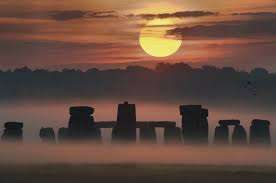
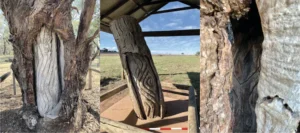
Wiradjuri people created marara by removing a large slab of bark, then intricately carving muyalaang into the fresh tree surface. Muyalaang often appear as a series of curved lines or geometric patterns like diamonds and zig-zags.
That final link to the 'Philosophers stone' i.e.,"The Philosophers stone is an ancient symbol of the perfected and regenerated man whose divine nature shines forth ... As a rough diamond is dull and lifeless when first removed from the black carbon, so the spiritual nature of man in its "fallen" state reveals little, if any, of its inherent luminosity . He who possesses the same 'stone' possesses truth, the greatest of all treasures, and is therefore rich beyond the calculation of man; he is immortal because reason takes no account of death and he is healed of Ignorance....the most loathsome of all diseases". ['The Secret Teachings of all Ages'. Manly Hall].
Side note: ''To spit {snake?} in the face of ignorance''. Question. What would the remedy {antidote} be?
Refresher: ''Criticism polishes the diamond of truth.'' Wim Hof.
''Perfection is not a boring, self righteous state in which you criticize everyone about you, but a widening of all your HORIZONS." [ Marian Green book. Page 42].

Expansion or contraction?

The Church of Notra Dame de France - Soho - London. Aries-Pisces?
".......and they knew the secret of the ' Philosophers Stone ' which conveyed immortality....A person who, by the process of spiritual awakening, has attained a practical knowledge of the secret significance of the 'Rose' and the 'Cross'. He maintained that the real Rosicrucian, OR Freemason, cannot be made, but must grow to become one by the expansion and unfolding of the 'divine' power within his own heart." ['Secret Symbols of the Rosicrucians by Dr Franz Hartmann]. Try "fold'' / unfold'' THEN ''bosom'' / ''grace''. ALL as a means...?
And/or: "Or, speaking Cabbalistically, the Arcanum in question is that of the "unfolding" of the sacred name of god and its subsequent "refolding" - the two operations being analogous to the work of creation {top/down?} and that of salvation {bottom/up}." [Letter 22, 'The World' from the book 'Meditations on the Tarot'].
Practical example...
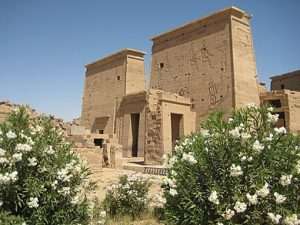
''H'' = Face to face?
"The Royal secret is not one that can be told in words. Throughout the world runs a tradition of a wondrous secret sought under different names by men through all the ages. The Philosophers Stone, the Elixir of Immortality, The Holy Grail, the Hidden Name of god, all these have been objects of man's quest, and all are one and the same, if rightly understood.......No pen can ever write down this secret, nor can any lips reveal it, but it is written in the inmost heart of man and has lain there through countless ages, awaiting the day when the disciple, tearing aside the veils of ignorance, perceives its blazing letters in his heart. There is no man, however mean or sinful, in whose heart it is not written, but few they are, who read its life giving words." [Chapter 9, 'The Yoga of the Bhagavat Gita'].
Refresher: 'To spit {snake?} in the face of ignorance'.

Another interpretation [analogy] to the above could be ''the sacred marriage.'' Different symbols, but the same principle. That same end result. I.E.,Recall what the ''sun'' and ''moon'' represent. Together with the ''staff'' [ or ''spine'' or ''Kundalini''] of which the ''Chakras'' are connected, in some form. And that ''form'' being represented with the ''serpent. ''Sense or non-sense. Fact or Fiction. A possibility or not?
"The love of the life is the real love. It rules over and holds in subordination many other derived loves, affections, or feelings....
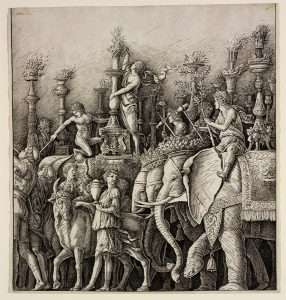
'light oxen': "I bring up an individual type as a point of departure to talk about. The one {'emotion'?} that is strongest will pull you first." [Page 4 'Stopping and Seeing' / Translated by T. Cleary].
This ruling love contains the persons real end, or purpose in living. The influence or 'ruling' of this essential love of the life is quite subtle and pervasive, reaching all aspects of mind.... A man has for an end what he loves above all things, and has respect to it in each and all things. It is in his will, like a hidden ''current of a stream'' which draws and bears him away even when busy with something else; for it is that which animates him. This is what one man seeks for, and also sees in another; and according to which, he either leads him or acts with him''....'' To underline the central role of the 'ruling' love, Swedenborg referred to it at various times as man's life itself, his own Self, his character, the essence of the life, the soul, and the very form of his spirit." [Chapter 5, 'The presence of Other Worlds'. Emphasis, this readers].
"There is an idea so central in Swedenborg's psychological spiritual findings that to grasp it is to grasp the real basis of mind, or human experience and the nature of the worlds we are destined to experience beyond this one. This idea 'revolves' around the concepts of love, affection and feeling."[Same chapter, same book].
Think on it, relative to primary/secondary, in relation to those universal [triple] 'aspects' . Found within. Put ''grasp'' in the box.
"To grasp an immortal ideal, man's mortal nature must 'die' before he can grasp it." [Quote by F. Hartman].

'Emptyness'?
"The Emperor asked a sage to be brought to court. 'What is the highest truth?' he wanted to know. 'Total emptiness...with no trace of holiness', said the sage. 'If there is no holiness, then who, where, or what are you?' 'I don't know,' the sage replied. Question everything. Test it with reason. Look at the assumptions behind it, take those assumptions apart and question your questions too. Awareness of ignorance is the beginning of wisdom."
"In the West, this way of thinking started with 'Socrates". [Chapter 21, 'The Sacred History].
Refresher: 'To spit {snake?} in the face of ignorance'. Question. What would the remedy be?
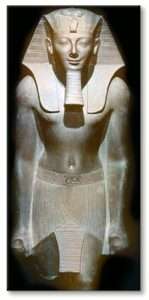
Found it or lost it?
..."I am amused, said i, at your apparent fear lest the multitudes may suppose you to be recommending useless studies.
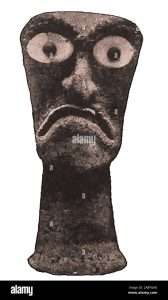
What's the remedy for mad, bad or sad?
It is indeed no trifling task, but very difficult to realize that there is in every soul an organ or instrument of knowledge that is purified and kindled afresh by such studies when it has been destroyed and blinded by our ordinary pursuits, a faculty whose preservation outweighs 10000 eyes, for by it only is reality beheld". [Plato's Republic VII,528].
From a different perspective: The folk ballads nearly all insist on wrestling, though the death is by 'stabbing'.....The 'ritual' sacrificewas supposed to have been made when Sun and Moon were equal in the sky {'equinox'?}, approximately every EIGHT years....After the death wound comes a ritual question-and-answer sequence, in this case so vital that some variants have lost the initial argument verses, and get straight down to the ritual questions and the revival of the dead man by his true love. Logically this makes no sense at all, but the illogical mythical selection that a group-consciousness makes always seems to retain the most important elements without ascribing any intellectual interpretation. Some folk-singers, when asked about ballads of this sort, would give the matter some thought and explain it as a true story . . . but it happened some years ago, not far from here. This kind of reply or statement is familiar to most folk-song collectors. Usually ail living relatives of the hero or heroine are dead, and no-one can remember exactly when or where it was ... but it is true all the same.
'Perseus'.

'Silk' ?

Stepping stones?
And/or: Simple statistics show the death of traditional songs and customs in recent years. Yet the compelling quality of the material has generated such enormous interest in both lore and music that it seems impossible to keep it out of human consciousness. The questions raised by such songs as The Cutty Wren are not answered by modern research, but rather generate further and still further questions to which there seem to be no ‘factual’ answers. There is absolutely no historical focus for such material, and no accurate means of geographical analysis. A simple examination of the music and text of the songs themselves, however, reveals some startling parallels with ancient British myth and symbology, and with a religious system that is essentially pre-Christian. {'Where is Saint George: Pagan Imagery in English Folksong'}.
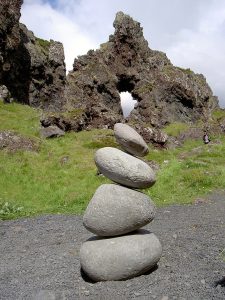
From a different perspective, i.e., Horizontal / Vertical. {'Gap' / 'Void' to enlarge}.
"An idea is an event," according to Seth. It is therefore logical that any idea - in whatever sphere of activity, whether physically materialized or not - would have an impact upon our lives. The "idea as reality" is another ancient concept which was formalized early in Western civilization by Plato and which has been retained by many philosophers down through the ages. But rather than discuss this concept in abstract terms only, Seth develops it to its logical conclusion. All ideas, thoughts, and areas of concentration help create a dynamic and continually interrelating universe with the 'idea' playing as important and as tangible a role as any physical event." [Introduction to the book 'The Seth Material' by J. Roberts].
Understanding what all these authors infer by the ''divine'' bit relative to that same ''framework'' [ 1 - 6 ], gives a credible logic to all the above. ....
"On a final note, there has been much written about immortality and transmutation concerning the Great Work. Perhaps the greatest secret offered by Fulcanelli lies in the title of this work and the dedication of the first edition. The Alchemists say that the truth is hidden in plain sight. Therefore the great 'philosopher' may well be the soul, living within its abode, the physical body. It is for this reason that the dedication remains the same as it was in the first edition....dedicated to the Brothers of Heliopolis". [Foreward. 'The Dwellings of the Philosophers'. By Fulcanelli ].
N.B. Imhotep who was high priest of same.
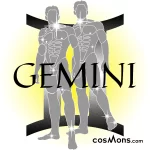
'Brothers'.
A work in progress: Heliopolis {N/E} slowly 'disappears' through the centuries. It becomes ''less important''. Monuments taken here, there and everywhere {especially obelisks}. The Ptolemies especially so - take everything to Alexandria. When it eventually 'closes' the priests bury sacred artifacts to preserve that once sacred space. One of the artifacts found was a sea urchin. ['Heliopolis: The City of the Sun' / 2021].

Initiate? ''Eye of the needle''?
''Strangely enough, urchin, pronounced "UR-chin," comes from the 13th century French word yrichon, which means “hedgehog,” and is still used as such in parts of England today. As for people who are urchins, perhaps they got the name because at the time, they were so small, wild and many in number — like hedgehogs.''
OR: ''The spines are made up of keratin; the same material as human hair and nails. Hedgehogs shed their spines over time, with new ones growing in to replace them, just like our hair! An adult hedgehog has between 5,000 and 7,000 spines on it's body. A hedgehog's spines are its main mode of defence against predators.''
And/or: "Bird's beaks are covered with a shell like substance called keratin." ['The Chase' / S15 EP133].
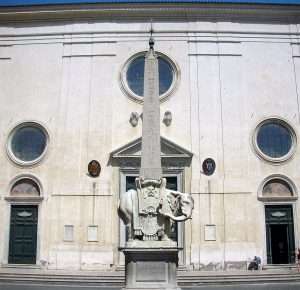 Side note: It has recently been proven that at the time of the pyramids it was lush land all around - ''a rich savanna'' - but by the end of the Old Kingdom a desert was in progress due to climate change. The Nile had at least a twenty year drought period. Elephantine which had once been two islands eventually became ONE. The 'marshland' between the two eventually becoming 'dry'. [Ancient Egypt's Darkest Hour' / Hist. Channel / Jan.2021].
Side note: It has recently been proven that at the time of the pyramids it was lush land all around - ''a rich savanna'' - but by the end of the Old Kingdom a desert was in progress due to climate change. The Nile had at least a twenty year drought period. Elephantine which had once been two islands eventually became ONE. The 'marshland' between the two eventually becoming 'dry'. [Ancient Egypt's Darkest Hour' / Hist. Channel / Jan.2021].
Question. The Famine Stela - talks about drought at the time of Djoser and Imhotep - Coincidence?

Asteria. Something to do with fallen stars. Part 3 - to make a connection.
And/or: "...But the similarity in their symbols may indicate that there has been some intimate connection, now forgotten, between Scorpio and the formerly adjacent Virgo. Ampelius assigned it the care of the S/W wind, a duty which, he said, Aries and Sagittarius shared - others that it was a malignant {'unlucky'?} influence, and was accompanied by storms - but the alchemists held it in high regard - for only when the sun {supernova?} was in this sign could the transmutation of iron into gold be performed...'' [Page 363 of the book 'Star Names and Their Meanings'].
Try Leo/Virgo in relation to Scorpio. All as a means...?

Mind set?
Scorpion King? A united Egypt?
Refresher: ''All Soul's Day comes within the star sign for Scorpio.''
And/or: ''Tom Thumb was killed by a spider.''
'Ishon' to enlarge.
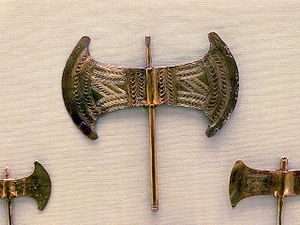
'Hoe' money?
Something to ponder on: ''The golden era of the Bronze Age was about to end {because of the Iron Age}. Bronze, the international currency of exchange began to be dumped. As an example - the Langton Matravers hoard of bronze axe heads. Most never used, just buried. Bronze was not just a metal used for tools, it also had a value as an exchange currency, was the basis for social relations and a ritual even religious significance. Iron did not have this currency/social value - it was all about agriculture, grain and animals. Land and the ownership of it became paramount. But all this only became prevalent centuries later after the introduction of iron at the end of the Bronze Age {750BC}. Strangely, iron did not come into use when the Bronze Age ended - it was two centuries later - and that leads experts with one of the biggest problems in pre-history, there seems to be a mysterious 'GAP' between the Bronze and Iron Age. No one knows why. Some blame it on climate change {'storms'?}. To cope with it changes in living habits occured: large feasting gatherings, burials in fetal position, animal {possibly human} sacrifice, etc., living problems became more localised AND more often for the community at large.'' ['The World After Stonehenge: The Age of Iron' / N. Oliver].
Question: Could this 'mind set' tell us anything?
Calling on the Old gods?

Figures of Gog and Magog set up in Guildhall after the Fire....Guildhall is a municipal building in the Moorgate area of the City of London, England. It is off Gresham and Basinghall streets, in the wards of Bassishaw and Cheap.... The building has been used as a town hall for several hundred years, and is still the ceremonial and administrative centre of the City of London and its Corporation.

Magog. 'Sheathed' sword?
A working example: "This phrase reminds us of the old order passing into the new in the words of the Nunc Dimittis: “Lord, now lettest thou thy servant {steward'?} depart in peace, according to thy word: for mine eyes have seen thy salvation.”’ Simeon accepted his fate with gratitude, while Ysbaddaden, however, strove to avert it. He is the ‘Old King’ who dies, to make way for the New. But he is a matrilineal king (possessive and clinging to what he has) not a patrilineal one. He is the hero’s mother’s negative animus. If, in this paradox of initiation, he did not know, Olwen his daughter did. But she needed the hero to implement her knowledge, and through fighting for her, to create his manliness, thereby fructifying her hitherto-imprisoned forward-looking femininity. As the story unfolds itself, the figure of this old doomed giant of a mother’s animus destroying itself is a pathetic one. He knows he cannot survive, yet does his utmost to this spurring on the ‘hero’ to assert his manliness over against the ever-departing but ever-returning past. He says: “Come hither tomorrow. I will give you some answer.’ ” This was but a trick, presumably to gain time or put them off their guard....
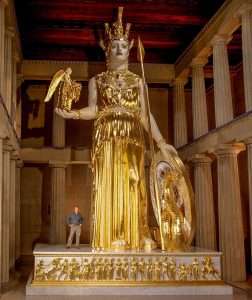
"Chryselephantine statues were built around a wooden frame with thin carved slabs of ivory attached, representing the flesh, and sheets of gold leaf representing the garments, armour, hair, and other details. In some cases, glass paste, glass, and precious and semi-precious stones were used for detail such as eyes, jewellery, and weaponry." 'Spear'?
 “They rose and Ysbaddaden Chief Giant snatched at one of the three poisoned stone-spears which were by his hand and hurled it after them.” There follows a threefold scene. On each of three consecutive days they visit him and after a parley as they arose to go, he hurled a poisoned stone-spear at them, but missed. One of the party snatched it up and hurled it back at him, but in their hands it turned to iron, and as iron it pierced him as it returned. Ellis and Lloyd (p. 198, note 134) says “The episode is reminiscent of the change of material for weapons brought about as the Stone Age passed into the Iron Age.” This may be so, but iron is well-known alchemically as representing soul-substance harder and more durable and effective than stone.
“They rose and Ysbaddaden Chief Giant snatched at one of the three poisoned stone-spears which were by his hand and hurled it after them.” There follows a threefold scene. On each of three consecutive days they visit him and after a parley as they arose to go, he hurled a poisoned stone-spear at them, but missed. One of the party snatched it up and hurled it back at him, but in their hands it turned to iron, and as iron it pierced him as it returned. Ellis and Lloyd (p. 198, note 134) says “The episode is reminiscent of the change of material for weapons brought about as the Stone Age passed into the Iron Age.” This may be so, but iron is well-known alchemically as representing soul-substance harder and more durable and effective than stone.

Pocahontas country.
It is in this sense that we may take it here, as indicating the greater soul-power of Culhwch and his company, as possessors of metal artefacts — power of warriors. The first time the spear pierced Ysbaddaden through the ball of his knee and he cries “‘ ‘Like the sting of a gadfly the poisoned iron has pained me.’”’ The second time it pierced him in the middle of his breast, and he cries “ ‘Like the bite of a big-headed leech the hard iron has pained me.’” The third time Culhwch himself hurled it back and it pierced him through the ball of the eye, and he cries “‘ ‘Like the bite of a mad dog to me the way the poisoned iron has pierced me.’ ” Each time the wound is higher up and the beast to which its attack is likened is fiercer, till it is finally a mad dog, the kind of animal used later to hunt the terrible boar." {'A Celtic Quest: sexuality and soul in individuation : a depth-psychology study of the Mabinogion legend of Culhwch and Olwen' by Layard, J. (John)}.
And/or: "We had found five graves with bone remains and fire layers. The bones were from dogs and humans. Then we realized there was a large Viking burial ground that we had to focus on," the science team said in a press release....
The burial ground is strategically situated on a flat ridge, intersected by two significant transport routes. To the east lies the Tvååkersån river (historically known as Uttran), which flows out at Galtabäck. Additionally, the old country road, järnbärarvägen, connecting Spannarp to Gamla Köpstad, traverses this burial site. The village name Tvååker and other place names like Järnmölle, Järnvirke, Gamla köpstad, Vare, Galtabäck, and Utteros are referenced in early historical documents.
Brooch/Buckle to enlarge.


Priests of Anubis {'dog' family}, the guide of the dead and the god of tombs and embalming, perform the opening of the mouth ritual. With iron implement.
And/or: ''In psychology, synchronicity is defined as the occurrence of meaningful coincidences that seem to have no cause; that is, the coincidences are acausal. The underlying idea is that there is unity in diversity. In psychology, Carl Jung introduced the concept in his later works (1950s)....Synchronicities are events connected to one another not by strict cause-and-effect. A synchronicity is a coincidence where an external event mirrors an internal one. Carl Jung believed that synchronicities mirror deep psychological processes and carry messages the way dreams do.''
''A mort safe is an iron frame formerly used to protect coffins.'' ['The Chase'].
Side note: ''The Queen, is the only person to travel overseas without having to present a passport.''
'AFAR'.
'Foreign'.
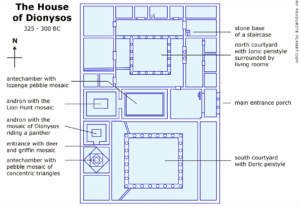
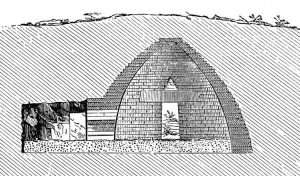
"A beehive tomb, also known as a tholos tomb (plural tholoi) (Greek: θολωτός τάφος, θολωτοί τάφοι, "domed tombs"), is a burial structure characterized by its false dome created by the superposition of successively smaller rings of mudbricks or, more often, stones. The resulting structure resembles a beehive, hence the traditional English name. ..In Greece, the vaulted tholoi are a monumental Late Bronze Age development. Their origin is a matter of considerable debate." 'Cancer'?
And/or: The period between the catastrophic end of the Mycenaean civilization and about 900 bce is often called a Dark Age. It was a time about which Greeks of the Classical age had confused and actually false notions. Thucydides, the great ancient historian of the 5th century bce, wrote a sketch of Greek history from the Trojan War to his own day, in which he notoriously fails, in the appropriate chapter, to signal any kind of dramatic rupture. (He does, however, speak of Greece “settling down gradually” and colonizing Italy, Sicily, and what is now western Turkey. This surely implies that Greece was settling down after something.) Thucydides does indeed display sound knowledge of the series of migrations by which Greece was resettled in the post-Mycenaean period. The most famous of these was the “Dorian invasion,” which the Greeks called, or connected with, the legendary “return of the descendants of Heracles.”
'Fire'aspect.
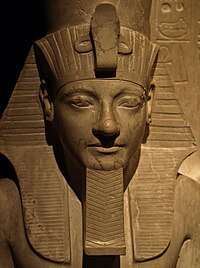
The right hand of Tutankhamun.
Although much about that invasion is problematic—it left little or no archaeological trace at the point in time where tradition puts it—the problems are of no concern here. Important for the understanding of the Archaic and Classical periods, however, is the powerful belief in Dorianism as a linguistic and religious concept. Thucydides casually but significantly mentions soldiers speaking the “Doric dialect” in a narrative about ordinary military matters in the year 426. That is a surprisingly abstract way of looking at the subdivisions of the Greeks, because it would have been more natural for a 5th-century Greek to identify soldiers by home cities. Equally important to the understanding of this period is the hostility to Dorians, usually on the part of Ionians, another linguistic and religious subgroup, whose most-famous city was Athens. So extreme was this hostility that Dorians were prohibited from entering Ionian sanctuaries; extant today is a 5th-century example of such a prohibition, an inscription from the island of Paros.
Phenomena such as the tension between Dorians and Ionians that have their origins in the Dark Age are a reminder that Greek civilization did not emerge either unannounced or uncontaminated by what had gone before. The Dark Age itself is beyond the scope of this article....

Dalmation Island.
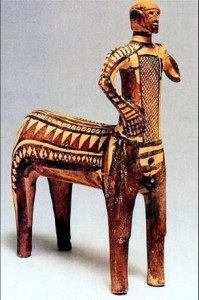 One is bound to notice, however, that archaeological finds tend to call into question the whole concept of a Dark Age by showing that certain features of Greek civilization once thought not to antedate about 800 bce can actually be pushed back by as much as two centuries. One example, chosen for its relevance to the emergence of the Greek city-state, or polis, will suffice. In 1981 archaeology pulled back the curtain on the “darkest” phase of all, the Protogeometric Period (c. 1075–900 bce), which takes its name from the geometric shapes painted on pottery. A grave, rich by the standards of any period, was uncovered at a site called Lefkandi on Euboea, the island along the eastern flank of Attica (the territory controlled by Athens).
One is bound to notice, however, that archaeological finds tend to call into question the whole concept of a Dark Age by showing that certain features of Greek civilization once thought not to antedate about 800 bce can actually be pushed back by as much as two centuries. One example, chosen for its relevance to the emergence of the Greek city-state, or polis, will suffice. In 1981 archaeology pulled back the curtain on the “darkest” phase of all, the Protogeometric Period (c. 1075–900 bce), which takes its name from the geometric shapes painted on pottery. A grave, rich by the standards of any period, was uncovered at a site called Lefkandi on Euboea, the island along the eastern flank of Attica (the territory controlled by Athens). 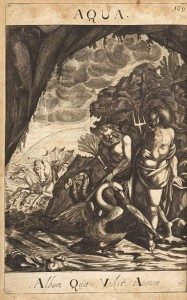 The grave, which dates to about 1000 bce, contains the (probably cremated) remains of a man and a woman. The large bronze vessel in which the man’s ashes were deposited came from Cyprus, and the gold items buried with the woman are splendid and sophisticated in their workmanship. Remains of horses were found as well; the animals had been buried with their snaffle bits. The grave was within a large collapsed house, whose form anticipates that of the Greek temples two centuries later. Previously it had been thought that those temples were one of the first manifestations of the “monumentalizing” associated with the beginnings of the city-state.
The grave, which dates to about 1000 bce, contains the (probably cremated) remains of a man and a woman. The large bronze vessel in which the man’s ashes were deposited came from Cyprus, and the gold items buried with the woman are splendid and sophisticated in their workmanship. Remains of horses were found as well; the animals had been buried with their snaffle bits. The grave was within a large collapsed house, whose form anticipates that of the Greek temples two centuries later. Previously it had been thought that those temples were one of the first manifestations of the “monumentalizing” associated with the beginnings of the city-state.

Master of the House? Pavilion? 'thirtythree'?
Thus, that find and those made in a set of nearby cemeteries in the years before 1980 attesting further contacts between Egypt and Cyprus between 1000 and 800 bce are important evidence. They show that one corner of one island of Greece, at least, was neither impoverished nor isolated in a period usually thought to have been both. The difficulty is to know just how exceptional Lefkandi was, but in any view it has revised former ideas about what was and what was not possible at the beginning of the 1st millennium BCE....
Side note: The root "Aqua" traces back to classical Latin, where it referred directly to "water." Ancient civilizations that thrived near water sources incorporated the term into their languages. In medieval Latin, it expanded to describe tools and systems related to water, such as aqueducts. As the root entered English through scientific and artistic lexicons, it became foundational in describing aquatic environments and technologies.
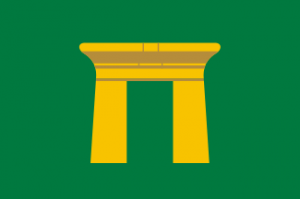
Karnak-Temple: "Palace of Maat" - North-Chambers of Hatshepsut . Arachne to enlarge. Something 'new'. Refresher: ''Ma'at is the weaving {Neith/Arachne}, the pivotal feather at the center of the vibrant web of all interrelationships.''
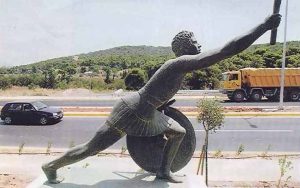
Statue of Pheidippides along the Marathon. S/W -N/E?
Continued: The term colonization, although it may be convenient and widely used, is misleading. When applied to Archaic Greece, it should not necessarily be taken to imply the state-sponsored sending out of definite numbers of settlers, as the later Roman origin of the word implies. For one thing, it will be seen that state formation may itself be a product of the colonizing movement. The first “date” in Greek history is 776 bce, the year of the first Olympic Games. It was computed by a 5th-century-bce researcher called Hippias. He was originally from Elis, a place in the western Peloponnese in whose territory Olympia itself is situated. This date and the list of early victors, transmitted by another literary tradition, are likely to be reliable, if only because the list is so unassuming in its early reaches.

Ivory head.

Ralph Tawangyaouma, Hopi Stamped Silver Cup.
That is to say, local victors predominate, including some Messenians. Messene lost its independence to neighbouring Sparta during the course of the 8th century, and this fact is an additional guarantee of the reliability of the early Olympic victor list: Messenian victors would hardly have been invented at a time when Messene as a political entity had ceased to exist....
Clearly, then, record keeping and organized activity involving more than one community and centring on a sanctuary, such as Olympia, go back to the early 8th century. (Such competitive activity is an example of what has been called “peer-polity interaction.”) Records imply a degree of literacy, and there too the tradition about the 8th century has been confirmed by late 20th-century finds. A cup, bearing the inscription in Greek in the Euboean script “I am the cup of Nestor,” can be securely dated to before 700 bce. It was found at an island site called Pithekoussai (Ischia) on the Bay of Naples.

Live queen moor: Will a 'wagon' be found within it?
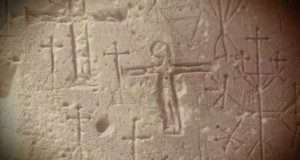
Above or below the 'horizon' line? Akhet to enlarge.
A work in progress: ''Strabo wrote about the Celts north of the Alps, including the large tribe called the Boii, who later migrated south of the mountains into northern Italy, in the 4th century BC. But whether or not these people thought of themselves as Celts , or spoke a Celtic language is unclear. When we label a great swathe of territory across central Europe as 'Celtic' - it implies a common identity, material culture and language. But one of the key features of early Iron Age in central Europe is missing in the west: the rise of the 'princely seats' or 'city states', like Heuneburg. So are the elite tombs and wagon burials.'' [Page 84 'The Celts' / A. Roberts].
Side note: Hebrews relate to the North. Judah to the South.
'Beaker People' to enlarge.
 Thus, for example, rdn or rén, being applied to the sign which indicated the movement of running or flight, was given to the reindeer, which is a septentrional animal very swift in running. Thus the word vdg, being likewise substituted for the sign which expressed the movement of going ahead, was given to any conveyance for transportation and particularly to the wagon, of which the Borean Race made great use, when, having increased considerably in numbers, they spread afar and fell in swarms upon Europe and Asia."
Thus, for example, rdn or rén, being applied to the sign which indicated the movement of running or flight, was given to the reindeer, which is a septentrional animal very swift in running. Thus the word vdg, being likewise substituted for the sign which expressed the movement of going ahead, was given to any conveyance for transportation and particularly to the wagon, of which the Borean Race made great use, when, having increased considerably in numbers, they spread afar and fell in swarms upon Europe and Asia."
'Cancer'?
And/or: The word rén, not being able to be applied in the more temperate climates to the reindeer (réne) which does not exist there, it is applied for the same reason by the French to renard (fox). From the word vag, which signified a wagon, the French have drawn the word vaguer (to wander about). All the people of the North have named veg the route traced by the chariot vag and this word, changed through pronunciation, became the Latin va, the French vote, and the English way, etc. {'Hermetic Interpretation of the Origin State of Man'}.
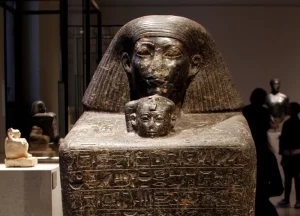
Altar? Female aspect 'in front'?
Continued: ''The Bettelbuhl Princess was interred, with her golden finery and her horses decorated bronze chamfron, in a plank floored wooden chamber {''pallet/sledge''?} - under a mound....Only a couple of centuries before when the Urnfield culture of the Late Bronze Age prevailed, it was usual practice to cremate the dead and bury their remains in urns {'Aquarius'?}.....
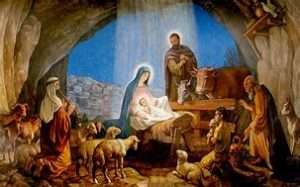
Manger: "to eat" or "to chew." No room at the 'INN'?
Now, in the early 6th century BC, the elite - at least - were being buried in timber chambers under great mounds of earth and stone {''Benben/benbenet AND/OR 'Aries''?}. It was an idea from the east that may have seemed exotic when it first arrived, but which spread like wildfire. If you were anybody who was anybody you could be expected to be buried in such a way {'Kingship?'}. And you'd probably be buried with objects associated with horses, as these economically important animals were now even more emblematic of social status than they had been in the Bronze Age. But one of the most striking messages from the grave of the Bettelbuhl Princess is that women as well as men could achieve such high status And not just women but their children - including daughters - would inherit that status.'' [Pages 82-3 'The Celts'].
Question. What do 'horses' represent. Just social status?
Universal mindset?
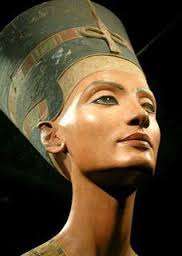
'Flat' top? A 'foreigner'?
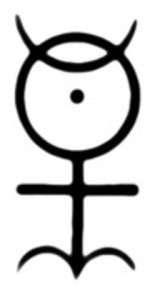
Sun / Moon / Cross / Cup symbolism . All represented in human form. A representation of something OUTSIDE of the obvious. Parts within the whole. The Micro within the Macro. Other examples elsewhere.
And/or: "The constellation of the Scorpion is one of the links between the cultures of central America and those of the ancient East, possibly Mesopotania, whose ziggurats {'tower'?} were so similar to the Mexican pyramids....Scorpio was the same everywhere....The Maya of Yucatan also called the same constellation ''scorpion stars''....Astrological myths everywhere placed Aquarius the Water-drawer at the winter solstice, Taurus the Bull at the spring equinox, Leo the Lion at the summer solstice, and Scorpio at the autumnal equinox. Therefore it was said in Egypt that the Scorpion killed Horus the sun, sending him to his midwinters death and resurrection as his Mother Isis gave him rebirth; and Pharaoh's daughter apparently played the part of the Water-drawer or divine midwife on the banks of the Nile - as shown by the myth of Moses.'' [Page 900 'The Woman's Encyclopedia of Myths and Secrets'].
''A legendary origin for the ogham comes in the later 11th century Lebor Gabala Erenn {The Book of the Taking of Ireland, also known as The Book of Invasions}. In this version, the ogham script is invented together with Gaelic by the legendary King Fenius Farsa at the fall of the Tower of Babel, selecting the best details from the scattered languages that were found there.'' [Page 9-10 'Celtic Tree Magic: Ogham Lore and Druid Mysteries' / Danu Forest].

Any others ''rising''?
Side note: ''Is it not puzzling that the scorpion symbol has been associated with the Royal Ancestors and in some way connected with a rebirth? Could it possibly be that this part of the ceremonies is commemorating the postulated ancient 'switch' {precession link}. Is it a reference to the scorpion shaped constellation that had once been an aspect of the original Horus? The constellation seen as a Scorpion by many ancient civilizations would be a 'Royal Ancestor'. One other item that I have mentioned earlier, an important king from predynastic times, known as the Scorpion king. And the predynastic representations of a scorpion and a falcon lend credence to their pairing, and the early importance of both." [Page 207 'The Death of Gods in ancient Egypt' / J. Sellers].
Redeem/Unredeemed? Try ''poison'' and its counterpart i.e., antidote.

The tail end of the 'stinger' = ''two swimming ducks''.
The author attempting to define eclipses within the Egyptian 'religion' and their significance within the Precession of Equinox's. Thousands of 'keys' mentioned but only in their external {exoteric} sense of the word. ''Eclipse'' being only ONE of them. A natural feature that all cultures use in one form or another - to define something of an inner quality not external quantity. Others are the Hippo/Croc in relation to a ''harpoon''. Or the word ''Kiln'' {philosophers vessel?}. All enlarged elsewhere.
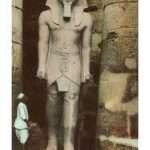 ''Such was the goal and such was the way; heavy for some and light for others {'talatat'?} - yearning towards the goal pricks the traveller like a harpoon {'Whale' and/or 'spear' and/or ''wounded'' as in Fisher King}, and draws him onward. And the rhythm of song gives wings {'Falcon' and/or ''eagles claws''? - therefore ''Libra''?} to the walkers feet." [From the chapter entitled 'Procession' taken from the book 'Her-Bak: The Living Face of Ancient Egypt' / Isha . Page 'seventy'].
''Such was the goal and such was the way; heavy for some and light for others {'talatat'?} - yearning towards the goal pricks the traveller like a harpoon {'Whale' and/or 'spear' and/or ''wounded'' as in Fisher King}, and draws him onward. And the rhythm of song gives wings {'Falcon' and/or ''eagles claws''? - therefore ''Libra''?} to the walkers feet." [From the chapter entitled 'Procession' taken from the book 'Her-Bak: The Living Face of Ancient Egypt' / Isha . Page 'seventy'].
 As {one} example: Recall what was found in the Orkneys.
As {one} example: Recall what was found in the Orkneys.
And/or the harpoon as found in the ''moat'' that surrounds the Step Pyramid. As a means...?
River or Sea related?
REFRESHER: "To prick ones conscious."

"The crucifixion took place at Passover. which always takes place on the full moon - it therefore means a lunar eclipse NOT solar eclipse took place {as with Abraham in Canaan in 53BC}. Some accounts say that on the night of the crucifixion the moon rose blood red - indicative of a total lunar eclipse. Records say that indeed their was such an eclipse on the 3rd April 33AD just after sunset in what later became known as the land of modern Israel. {'Eclipses: Radio 4 / 20.11.25}. 'Harpoon'?
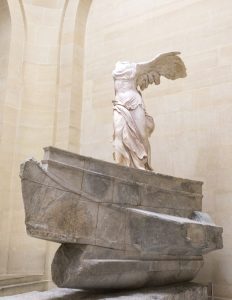
Winged Victory of {N/E} Samothrace {head, arms and feet missing: "remain a mystery"}, also known as Nike of Samothrace. Left? leg {behind} - in movement towards prow of ship. Possibly made in Rhodes. Marble ship made from twentythree blocks. Hand {right?} later found. 'Headless'?
A working example: This scene of a hippopotamus hunt in the swamplands — together with some companion scenes of rowdy games among boatmen — shows an extraordinary artistic sense of movement, proportion and gesture. The creatures shown are outlined with such accuracy that naturalists can identify the species without the slightest hesitation. The crocodile is lying in wait for the fish, and one wonders why the hunters are pursuing the apparently inoffensive, herbivorous hippopotamus. The hippos are, however, the farmer's enemies: they descend on his crops in herds and wreak havoc.
In myth, the male hippopotamus is associated with Seth, enemy of light, who causes the monthly waning of the moon as well as all eclipses. At Edfu, during the yearly Feast of the Victory, Horus himself is the divine harpooner who must traverse all Egypt in his skiff {'punt'} in pursuit of the red hippo which is the incarnation of Seth. Ten times, at ten precise points of the body, and in ten separate locations conse- crated by the legend, Horus must smite the enemy of Ré. 'Egyptian Mysteries' / L. Lamy}.
'Great One of the Tens of Upper Egypt'?
Question. In what location {Nome?} is the Hippo represented?
Side note: The statue was primarily meant to be viewed from its left side in three-quarter view. This can clearly be seen on the right side of the body, which – like the back of the image – is rendered in much less detail. Compared to the dynamic composition and fine details of the left, the arrangement of the statue's right side is rather straightforward. The goddess descends from the heavens and just alights the prow of a ship with her right foot while her left is still in the air. The base of grey Lartos marble suggests that the artwork was not only intended as a tribute to Nike but also served to commemorate a victory in a naval battle. Together with the base and the pedestal on which it stands, the work measures an impressive 5.57 meters in height - approximately 'eighteen' feet.
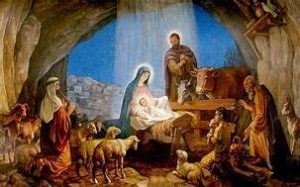
'Turning the light around'?

Clearly the attainment spells the eclipse of the Dragon. Where light shines no darkness can there abide. For being the basis of the instinctual life, harnessed and chained to the needs and clearly perceived ideals of the psyche, the dragon shuns the sunbeams and the daylight. No longer do its projections and compulsive automatisms haunt the light of consciousness. No longer is the personality tortured as by some foul and evil presence. Its needs and dictates, once so imperious, cease their urgency, finding their proper place within the natural economy.
And/or: He (Khonsu) is conceived on psdntyw (no-moon day); he is born on (the second lunar day); he grows old after (the day of the full moon). Khonsu is a moon god, but he occupies the same familial position in the New Kingdom triad of Amon-Re, Mut and Khonsu, as that of Horus with Osiris and Isis.
The suggestion put forth by Parker is that an unknown relationship existed between Horus and the lunar disc, but I would seek an explanation for the calendar date of Osiris’s death (and Khonsu’s conception) in the fact of NEW-moon day being the only day possible for a solar eclipse. Horus-son-of-Isis was born, or created, after this event — and each subsequent eclipse could be seen as a re-enactment of Osiris’s death and each NEW-moon day as an anniversary. One must keep in mind the Egyptian penchant for seeking answers in multiple explanations.
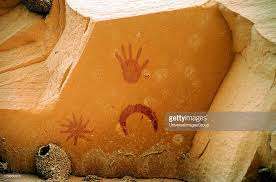
Solar or Lunar? Eclipse or Supernova? Left or Right hand? Any 'lozenges'?
However, my prime reason for using this source is to point out a very interesting fact about the name for the new-moon day, psdntyw. In the Old Kingdom, the ‘n’ was not used in this word. The Pyramid Text and other writings of this time use the spelling psdtyw and since the word psd has the meaning ‘shine’ it seemed a strange construction to Egyptologists for the word signifying no moon. On the other hand, if one is aware that it is only at the time of NEW moon that total eclipses with their brilliant Diamond Eye Effect and spectacular coronas are seen, it seems instead to be an exceedingly apt spelling. The addition of the letter ‘n’ suggests to philologists a connection with the numeral 9 and the nine gods of the Ennead. Indeed, three times in the Middle Kingdom and once in a late papyrus the name was written with the numeral 9 (nine tally marks). Parker also points out that interesting relationships exist between days of the Egyptian lunar month. Day 11 on their lunar calendar, seven days before day 18, bears the same name as does day 'twentyfive', seven days after day 18. Parker writes: ‘This last seems to indicate that some importance was attached to day 18, but other than that its meaning is unclear to me. {'The Death of Gods in Ancient Egypt' / J. Sellers}.
'Twentyseven' to enlarge.
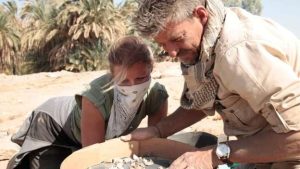
Found at Gebel el Silsila is the engraving of an Egyptian physician performing his duties - which are inscribed within a 'right angled' segment that was hewn out from a 'circular' boulder/rock. Also seen is the drawing of a Hippo {Taweret} - on the flank {right?} of the headless Sphinx. AND/OR: When Jesus heard it, He said unto them, “They that are WHOLE have no need of the physician, but they that are sick. I came not to call the righteous, but sinners to repentance.” {Mark 2:17}. 'Metanoia' to enlarge. ALL FOUR SIDES? And/or: "So Christian paideia has survived to this day, but primary among the more ascetic members of the monastic movement {Desert Fathers?}, the rigors of whose methods {asceticism did not always imply hardship in the way it does now} have helped to discredit it with the general public. Gospel teachings about the 'strait gate' and 'narrow way' refer in their simplest sense to the difficult choice that must be taken at this point, where we must go beyond the point which we can see; beyond what we can control. This choice is well described in the Gospel verse that says: 'And he went a little further, and fell on his face, and prayed saying, O my father, if it be possible, let this CUP pass from me: nevertheless not as i will, but as thou wilt'. {same} 'PLACE OF ROWING'?
 Continued: A working example: Among his religious roles, Hesyre served as a priest of Horus at Pe, specifically Horus the Harpooner, an early, martial aspect of the god, renowned for spearing enemies in mythological clashes. He was a priest of Min, one of Egypt’s most ancient deities who was associated with male sexual procreativity, and revered as a protector of the eastern desert regions throughout dynastic history. Additionally, Hesyre held the title of Priest of Mekhit, a relatively obscure goddess who may have functioned as a general protector deity. His civil positions were equally prestigious. As ‘Overseer of the Royal Scribes’, Hesyre headed a distinguished administrative body integral to the functioning of the early Egyptian state. On each panel, he is depicted with a scribal kit, including an ink palette, a small drawstring sack {'basket'?} of pigments, and a reed brush holder, emphasising his status within this elite profession.
Continued: A working example: Among his religious roles, Hesyre served as a priest of Horus at Pe, specifically Horus the Harpooner, an early, martial aspect of the god, renowned for spearing enemies in mythological clashes. He was a priest of Min, one of Egypt’s most ancient deities who was associated with male sexual procreativity, and revered as a protector of the eastern desert regions throughout dynastic history. Additionally, Hesyre held the title of Priest of Mekhit, a relatively obscure goddess who may have functioned as a general protector deity. His civil positions were equally prestigious. As ‘Overseer of the Royal Scribes’, Hesyre headed a distinguished administrative body integral to the functioning of the early Egyptian state. On each panel, he is depicted with a scribal kit, including an ink palette, a small drawstring sack {'basket'?} of pigments, and a reed brush holder, emphasising his status within this elite profession.
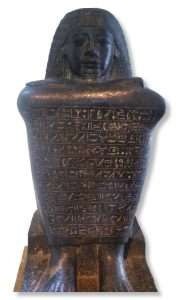
Steward / Scribe / Palette to enlarge.
As head of this select group, Hesyre would have belonged to one of the highest tiers of government. He bore the title ‘Great One of the Tens of Upper Egypt’ as well, a designation that probably indicated a provincial leadership role, possibly akin to a regional governor. Another title, ‘Chief of Tribute’, implies responsibilities in fiscal management and resource redistribution, key aspects of Egypt’s centrally managed economic system. Among Hesyre’s many titles, those related to medicine and dentistry are perhaps the most intriguing. On panel CG1426, he is designated as the ‘Chief of Dentists and Physicians’, identifying him as the earliest recorded individual associated with dentistry....
Medical practice in Egypt developed early, and is well-attested through both textual and archaeological sources.
Side note: "Among ancient Egypt’s many hippopotamus figures and drawings, the small blue hippopotamus figurine of “William the Hippo” stands out for its turquoise blue hues and is famous worldwide.....
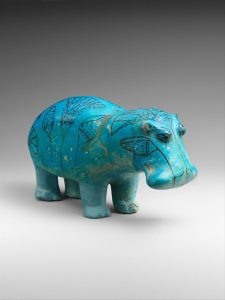
Lotus flowers.
The figurine, dating back to the Middle Kingdom, around 1961–1878 BCE, during the reigns of Senusret I or Amenemhat II, was found during an excavation in 1910 and became a part of the Metropolitan Museum of Art in 1917 and the museum’s unofficial mascot.
The hippo was originally found in a tomb, where it was placed to work its magic and protect the dead in the afterlife. Its perceived spiritual powers travel time and space."
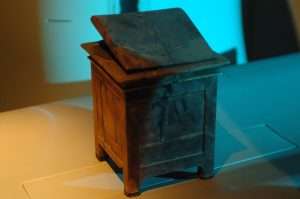
Solitary 'tooth' {and liver} found in a 'square' box belonging to Hatshepsut.
CONTINUED: For instance, the Stela of Merka, a high official from the end of the First Dynasty, lists among his titles that of ‘Scorpion Doctor’, suggesting early specialisation in certain types of healing. Although the main extant textual sources, the medical papyri such as the Ebers and Edwin Smith, were written several centuries after Hesyre’s lifetime, they probably drew on much older traditions. It is therefore plausible that practitioners like Hesyre had access to early medical texts or teachings, even if the written sources from his time have not survived.
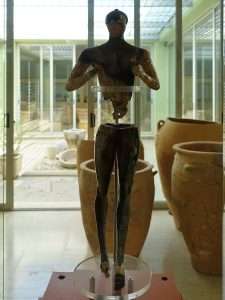
The Palaikastro Kouros is a chryselephantine statuette of a male youth (kouros) excavated in stages in the modern-day town of Palaikastro on the Greek island of Crete. It has been dated to the Late Minoan 1B period in the mid-15th century BC, during the Bronze Age. It is now on display in the Archaeological Museum of Siteia. Standing roughly 50 cm (19.5 in) tall, its large size by the standards of other figurines in Minoan art, and the value of its materials may indicate that it was a cult image for worship, the only one known from the Minoan civilization. The majority of its body (torso, legs, arms, and feet) is made of hippopotamus tooth covered with gold foil, but the hair part of the head is carved from gray-green serpentinite {'serpentine'?} - with rock-crystal eyes and ivory details. 'New Name'? 'Horus name'?
Supporting this idea is an inscription in the Fifth Dynasty mastaba of Washptah, which refers to a chest containing papyrus scrolls on healing practices, clear evidence that a written medical tradition was already established by that period.
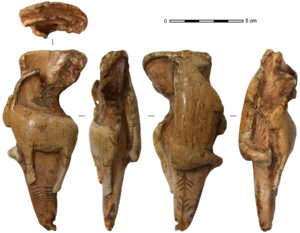
Ibex carving on Sperm Whale tooth.
The hundreds of prescriptions recorded in
the later papyri, addressing ailments from headaches to injuries, reflect a sophisticated pharmacopoeia whose roots may well have extended back to Hesyre’s era. In contrast to general medicine, the existence of a specialised dental profession remains ambiguous. Only about ten individuals from ancient Egypt are known to have held titles related to dentistry, and nine of these date to the Old Kingdom. The exact meaning and scope of these titles remains unclear, and their disappearance from the historical record in later periods raises questions about the continuity of dental care as a recognised profession. Operative dental procedures appear to have been exceedingly rare, if performed at all. {'Ancient Egypt' / Nov-Dec 2025}.

'Three and Four' = ''two in one''?
Continued: "In Egypt it was a rare metal {meteoritic form only} - yet in the Pyramid Texts there seemed to be an embarrassment of iron riches: iron plates, thrones and sceptres and even iron bones for the king. In the ancient Egypt language the name for iron had been 'bja' - a word that meant literally 'metal of heaven' or 'divine metal'..." [Page 369/70 'Fingerprints of the Gods'].
Question. Can you 'see' something besides the obvious?
''The material of the Philosophers Stone is nothing else but Sun {gold} and Moon {silver}." Paracelsus.
A work in progress: The western part of modern-day Shanghai was inhabited 6,000 years ago.[28] During the Spring and Autumn period (approximately 771 to 476 BC), it belonged to the Kingdom of Wu, which was conquered by the Kingdom of Yue, which in turn was conquered by the Kingdom of Chu.[29] During the Warring States period (475 BC), Shanghai was part of the fief of Lord Chunshen of Chu, one of the Four Lords of the Warring States. He ordered the excavation of the Huangpu River. Its former or poetic name, the Chunshen River, gave Shanghai its nickname of "Shēn."[29] Fishermen living in the Shanghai area then created a fish tool called the hù, which lent its name to the outlet of Suzhou Creek north of the Old City and became a common nickname and abbreviation for the city....

The Colossus of Rhodes: “To you, O Sun, the people of Doric Rhodes raise this bronze statue which reaches Olympus after calming the waves of war and crowning their city with the spoils of the enemy. Not only over the seas but also on land they light the sweet torch of freedom. “
Votive inscription on the Colossus.
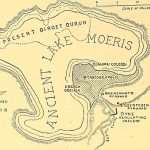 The Port of Shanghai is the world's busiest container port. Originally a fishing village and market town, Shanghai grew in importance in the 19th century due to both domestic and foreign trade and its favorable port location. The city was one of five treaty ports forced to open to European trade after the First Opium War which ceded Hong Kong to the United Kingdom.....
The Port of Shanghai is the world's busiest container port. Originally a fishing village and market town, Shanghai grew in importance in the 19th century due to both domestic and foreign trade and its favorable port location. The city was one of five treaty ports forced to open to European trade after the First Opium War which ceded Hong Kong to the United Kingdom.....
The two Chinese characters in the city's name are 上 (shàng/zaon, "upon") and 海 (hǎi/hé, "sea"), together meaning "On the Sea." The earliest occurrence of this name dates from the 11th-century Song dynasty, when there was already a river confluence and a town with this name in the area. How the name should be understood has been disputed, but Chinese historians have concluded that during the Tang dynasty, the area of modern-day Shanghai was under sea level, so the land appeared to be literally "on the sea."[16]
Shanghai is officially abbreviated 沪[b] (Hù/wu) in Chinese, a contraction of 沪渎[c] (Hù Dú/wu-doq, "Harpoon Ditch"), a 4th- or 5th-century Jin name for the mouth of Suzhou Creek when it was the main conduit into the ocean.[19] This character appears on all motor vehicle license plates issued in the municipality today
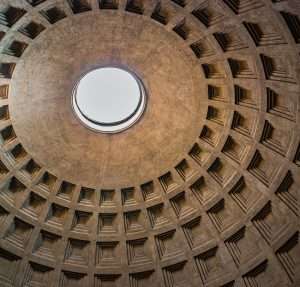
Oculus of the Pantheon = ''Bulls eye''.
And/or: "The origins of this term have been difficult to find, however, it could have originated from ‘Shanghai Rummy’ a card game when the object is to get three of a kind or three sets of three cards. Although this explanation is plausible due to the fact a cribbage board was used as an early scoring device for darts, then 301 games. It doesn’t explain why ‘Shanghai’.

Mr Bulls eye.
I believe the reason why Shanghai may be used is because Shanghai is divided into 3 counties and 16 districts. The 3 counties are Fengxian, Nanhui and Chongming. The 16 districts are Hangpu, Luwan, Changning, Putuo, Hongkou, Minhang, Jiading, Jinshan, Songjiang, Qingpu, Nanshi, Xuhui, Jing'an, Zhabei, Yangpu, Baoshan, and Pudong New Area.
So, Shanghai has three counties, three of a kind, three within the same region...
Side note: ''Aspidistra {Cast-iron plant}, is a genus of flowering plants in the family Asparagaceae, subfamily Nolinoideae, native to eastern and southeastern Asia, particularly China and Vietnam.[1][3] They grow in shade under trees and shrubs. Their leaves arise more or less directly from ground level, where their flowers also appear. The number of species known has increased considerably from the 1980s onwards, with around 100 accepted as of July 2013. Aspidistra elatior is common worldwide as a foliage house plant that is very tolerant of neglect. It and other species can also be grown in shade outside, where they are generally hardy to −5 °C (23 °F).''
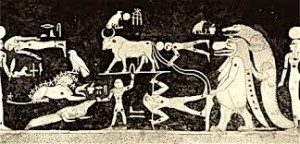
Where have you seen it before? What does it represent? Apocalypse?
Continued: As one example: {i.e., a work in progress}: "I do not think the Egyptian scribe Manetho was being less than literal when he spoke of a harsh and deadly cosmic power at work in the universe: 'Just as iron is likely to be attracted and led after the loadstone, but often turns away and is repelled in the opposite direction, so the salutary, good and rational movement of the world {Static or dynamic?} - at one time attracts, conciliates and mollifies that harsh power; then again, when the later has recovered itself, it overthrows the other and reduces it to helplessness.' In short, through metaphors and allegories, I suspect the ancients may have tried to find many ways to tell us exactly when - and why - the hammer of global destruction is going to strike again. I therefore think, after 12,500 yeas of the pendulum, that it would be wise for us devote more of our resources to studying the signs and messages...." [Page 500 same book].
''Iron'' the last element to be created before something goes BANG.
Question. How did our ancestors know that?

The hand of Sabazios. Thumb = pinecone?

A work in progress?
Something closer to 'the mark' : Various great Jain teachers of India have been called tirhakaras ''ford makers,'' because they reveal the passage by which bewildered humanity may cross over and beyond the stormy seas of 'Samsara' {the karmic wheel, the recurrence of lives and deaths}. Samsara {literally, ''a flowing with'' the phenomenal flux} induces man to take the line of least resistance. ''Whoever therefore will be a 'friend' of the world is the 'enemy' of god.'' To become a friend of God, man must overcome the demons of his own karma or actions that ever urge him to spine-less acquiescence in the mayic delusions of the world....
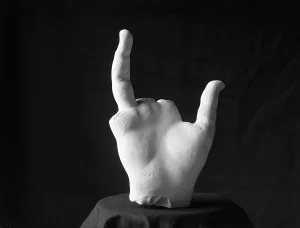
Right hand of Nike {victory} of Samothrace.
A knowledge of the iron law of karma encourages the earnest seeker to find the way of final escape from its bonds. Because the karmic slavery of human beings is rooted in the desires of maya-darkened minds, it is with mind control that the yogi concerns himself. The various cloaks of karmic ignorance are laid away, and man views himself in his native essence." [From the book 'Autobiography of a Yogi'].
Sheep decans?
Question. How would a ''flowing against'' be represented?
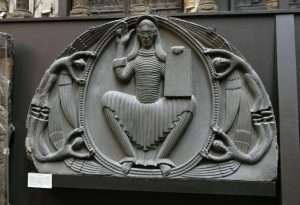
Any thumbs?
Something more to the point {i.e., connect it to the previous lots of 'similar' information to 'see' something of an inner quality rather than external quantity}: "Milton has a reference in Paradise Lost to Libra's origins: 'Th' Eternal, to prevent such horrid fray, hung forth in heaven his golden scales, yet seen betwixt Astraea and the Scorpion sign'...And Homer's quote: 'Th' Eternal Father hung, his golden scales aloft'...Others referred to it as a Weigh-beam..." [Page 371 {Libra} 'Star Names and Their Meanings'].

Mind set?
Continued: Compare to..'The Incoherence of the Philosophers'. Al-Ghazali, and 'The Philosophy of Illumination' by Suhrawardi, while recalling the difference between the ancient and 'modern' definition of same. Explained elsewhere. Finally try 'The Warrior Within',{The Philosophy of Bruce Lee} by J. Little. A possible bridge, between the old and new. A very interesting and profound read. Finally put ''warrior'' in the search box, i.e., what does it imply?
''One should approach knowledge as one going to war'' {Quote from within one of the books by D. Monroe}.
Analogy: "Growing familiarity with Homer's techniques for preserving astronomical knowledge encourages more revelations to tumble from every page; the killings of warriors and the intrigues of the gods are revealed as allegories for vivid images in the sky. There is such a breadth and depth to the astronomical content of the Iliad that it is almost overwhelming. Conventional Homeric scholarship and our studies of the Iliad are not to different in technique: both interpret layers of narrative to reach conclusions which are not at first apparent." ['Homer's Secret Iliad'].
"Galileo, following in the footsteps of the ancients, wrote that ''Philosophy is written in the great book which is ever before our eyes - I mean the universe - but we cannot understand it if we do not learn the language and grasp the symbols in which it is written." [Chapter One, 'Jesus Christ Sun of God'. Mentioned elsewhere'.
As one example: ''The ankh is a form of a cross, as the four cardinal directions....The visionary element is the vertical, looped at the top so that it can, as we have said, be grasped. Ones vision or personal myth is then touched directly and then played out in life.'' [Page 218 'Fruits of the Moon Tree' / A. Bleakley].
"As time passed, the learned men of each culture became known as sages or wise men - 'one of those who knows'. It was Pythagoras who apparently invented the terminology - philosophy - meaning 'one who is attempting to find out'. " [From the book by Kevin Gest].
N.B. Homer known as the very first of all the 'sages' - if only in the {European?} sense of the 'word'.

Vesica Piscis = ''the bladder of the fish''.
A working example {still in progress?}: "If the commanders of regiments were the brightest stars, it followed that all the other warriors named in the Iliad also had a place in the skies. The remaining men far outnumber the commanders, and many of these warriors die terrible deaths which Homer describes...Florence Wood pondered this for months, and many avenues were explored in an attempt to discover the astronomical purpose of the warrior victims. Men were picked out at random, and every reference made to them was examined for clues which would place them in the heavens. Lists of victims and their killers, of the types of weapons used, and of family relationships were created and studied, but a solution remained elusive. Eventually, late one evening after a fruitless day cross checking more lists, Florence casually thumbed through an illustrated guide to astronomy and found the answer to the problem in a surprisingly simple drawing. The constellation of Piscis Austrinus {the Southern Fish}, shown in the guide, is not one of the more memorable groups of stars, but she had earlier speculated that the brightest star in the constellation, Fomalhaut {Piscis Austrini}, might be identified with the warrior Iphition, on the meagre grounds that Homer says his home: 'is on the Gygaean lake where your father's estate lies, by Hyllus, rich in fish, and the eddying waters of Hermus'...

"...a small constellation that lies south of Aquarius...that drinks the waters poured by same. The brightest star = Fomalhaut = The mouth of the Fish''. {Wiki/Southern fish]. Question. 'Tail end' of something = S/E?
...But the tenuous link between fish and water had not been supported by other evidence...A second look changed everything. It showed the stars in the outline of a fish against the blue background of the heavens. Fomalhaut, with a magnitude of 1.2, was placed exactly on the forehead of the drawing. A few lines earlier in the Iliad Homer recounts that: 'Achilles struck {Iphition} full on the head as he was coming towards him, and split it clean in two'. At long last we came to realize that Homer's constellations had human attributes such as heads, foreheads, legs, arms, backs and chests. This was a breakthrough in understanding that led to the 'woundings' in the Iliad to mean, for instance, that the personal star of a man wounded in the back will be placed in the 'back' of his constellation, and the personal star of a warrior hit in the foot will be placed in the 'foot' of same constellation etc.," ['Homer's Secret Iliad'].
Follow the title to see it in its broader context i.e.,''split in two'' in relation to the Vesica Piscis and/or ''southern'' in relation to a 'start point' and/or ''lake'' in relation to either a dried or full one, as within the Square of Pegasus or the one at Nabta Playa OR fish in relation to rivers NOT sea's etc., etc. All enlarged elsewhere.
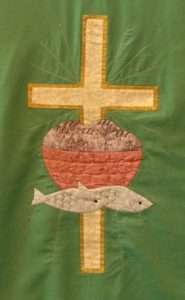

Amenhotep III fascination with the colour blue - began in the newest city of the Dazzling Aten.
And/or: In Greek mythology, this constellation is known as the Great Fish and it is portrayed as swallowing the water being poured out by Aquarius, the water-bearer constellation. The two fish of the constellation Pisces are said to be the offspring of the Great Fish. In Egyptian mythology, this fish saved the life of the Egyptian goddess Isis, so she placed this fish and its descendants into the heavens as constellations of stars.[6] In the 5th century BC, Greek historian Ctesias wrote that the fish was said to have lived in a lake near Bambyce in Syria and had saved Derceto, daughter of Aphrodite, and for this deed was placed in the heavens. For this reason, fish were sacred and not eaten by many Syrians.[7]
Mermaid?
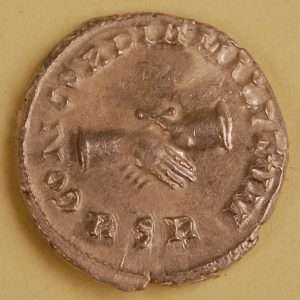
Reverse of a Carausius silver denarius from the Hoard, showing two clasped hands (symbolising the unity of the ruler and the army), alongside the abbreviation 'RSR'. This alludes to a line from Virgil's Eclogues - Redeunt Saturnia Regna or "The Golden Ages have returned". 'Thumbs'?
 And/or: The Fishes were changed to a Dolphin in the zodiac sculptured on the wall of Merton College, taken from the armorial bearings of Fitz James, bishop of London, and warden of the college from 1482 to 1508; a dolphin being of as sacred significance among pagans as a fish was among Christians.
And/or: The Fishes were changed to a Dolphin in the zodiac sculptured on the wall of Merton College, taken from the armorial bearings of Fitz James, bishop of London, and warden of the college from 1482 to 1508; a dolphin being of as sacred significance among pagans as a fish was among Christians.
Within their boundaries took place die three distinct conjunctions of Jupiter and Saturn in the year 747 of Rome, — the year to which for a long time was assigned Christ's birth; these phenomena strikingly agreeing in some of their details with Saint Matthew's account of the Star of Bethlehem. The opinion that these appearances guided the Magi in their visit to Judaea was first advanced and advocated by the celebrated Kepler, and worked out in 1826 by Ideler, and in 1831 by Encke.1 It is noticeable that the Rabbis held the tradition, recorded by Abrabanel in the 15th century, that a similar conjunction took place in Pisces three years previous to the birth of Moses, and they anticipated another at their Messiah's advent. Thus the Fishes were considered the national constellation of the Jews, as well as a tribal symbol. Jupiter and Saturn were again together here in February, 1 88 1, Venus being added to the group, — a well remembered and most beautiful sight. {'Star Names and Their Lore' under Pisces}.
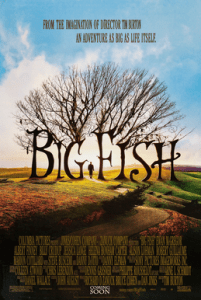
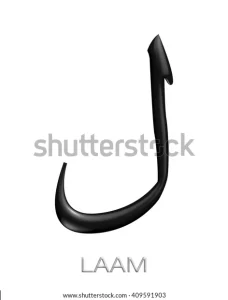
fish hook?
And/or: Soon, Isis and Nephthys had discovered 25 {'twentyfive'} of the pieces of Osiris. However, 1 piece would never be reclaimed. Set had thrown Osiris’ penis into the Nile, where it was consumed by the oxyrhynchus fish. Because Osiris would never be whole, Isis could resurrect his soul but could never return the god to the land of the living. Isis cursed the fish, and it would never be eaten in Egypt ever again.
25th Dynasty {Nubians}.
Smith/Jones to enlarge.
'120'?
Refresher: 'The head of the fish should face the eldest'. Chinese dining custom. [BBC / 'The Story of China' with M. Wood].
Southern Fish?
The main point, however, is which came first - the 'formation' of those '45' constellations or subject material? AND WHY?
And/or: ''Machina Electrica (Latin for electricity generator) was a constellation created by Johann Bode in 1800. He created it from faint stars between Fornax and Sculptor, to the south of Cetus. It represented an electrostatic generator. The constellation was somewhat popular during the 19th century and had appeared in a number of star charts, but was eventually rendered obsolete when the International Astronomical Union standardized constellation boundaries in 1930 and is now no longer in use.''
137 ?

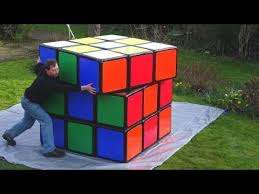
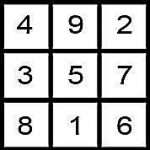 It is said that each of the suits on a deck of cards in a card game represents the four major pillars of the economy in the Middle Ages: Hearts represented the Church, Spades represented the military, Clubs represented agriculture, and Diamonds represented the merchant class.
It is said that each of the suits on a deck of cards in a card game represents the four major pillars of the economy in the Middle Ages: Hearts represented the Church, Spades represented the military, Clubs represented agriculture, and Diamonds represented the merchant class.